Hola Mahalla: The Forgotten Festival
Hola Mahalla is a Sikh festival that takes place annually in India with an estimated attendance of over a million people. Dubbed the Sikh Olympics, it involves sword fights, daring horse stunts with a strong element of spiritualism.
The festival was established in the 17th century in Anandpur Sahib, the 'City of Bliss'. It is celebrated during the Indian month of Chet, which falls in spring during either March or April.
Initiated by Guru Gobind Singh (the tenth Sikh Guru), Hola Mahalla, which means ‘mock fight’, was used to ensure Sikhs were spiritually and physically ready for battle. The festival was an integral part of Sikh and Punjabi culture in India, encouraging Sikhs to come together to maintain their martial skills and participate in spiritualism. Traditionally the festival held such importance that all Sikhs were required to attend and those who did not were assumed to have merged with God.
Anandpur
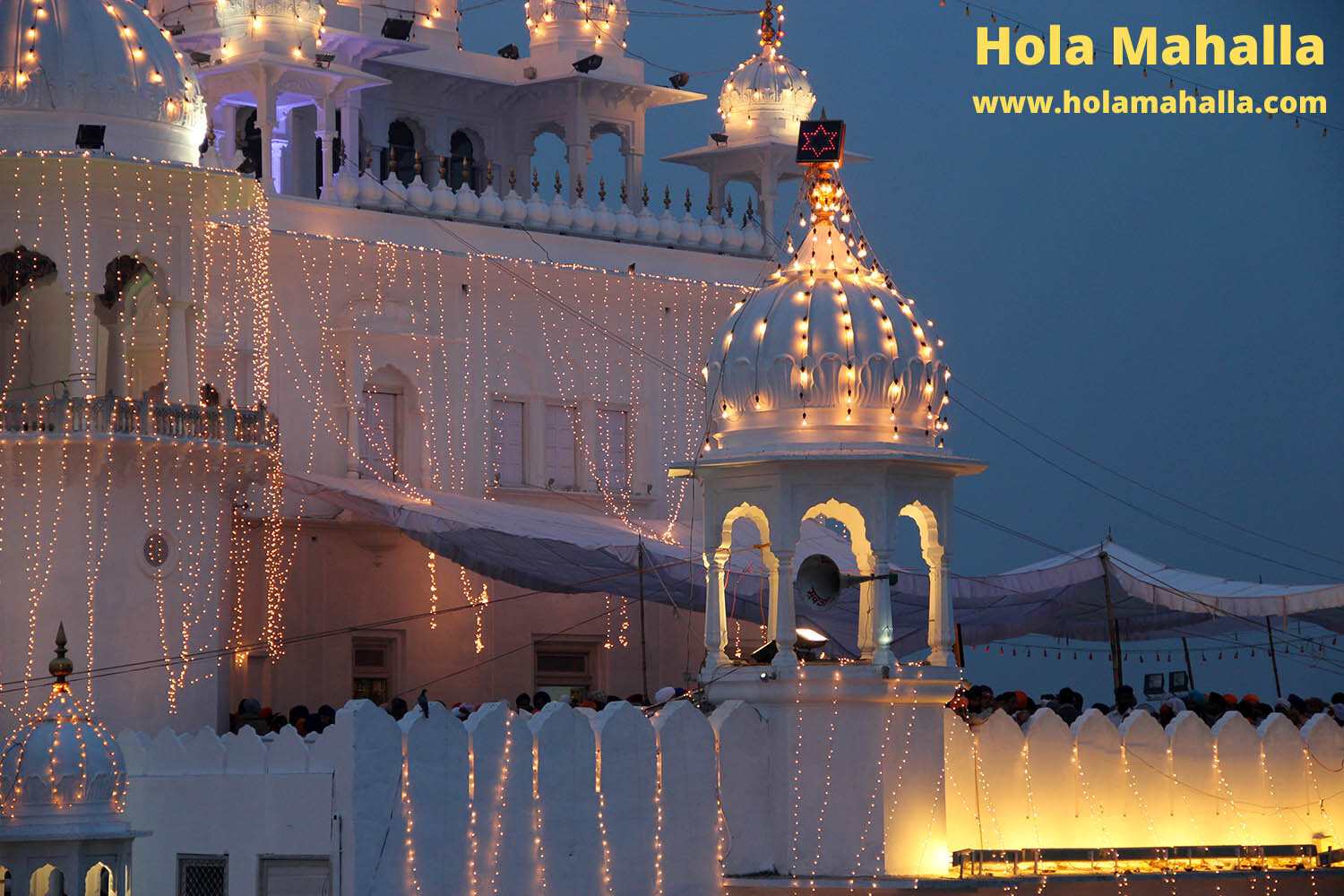
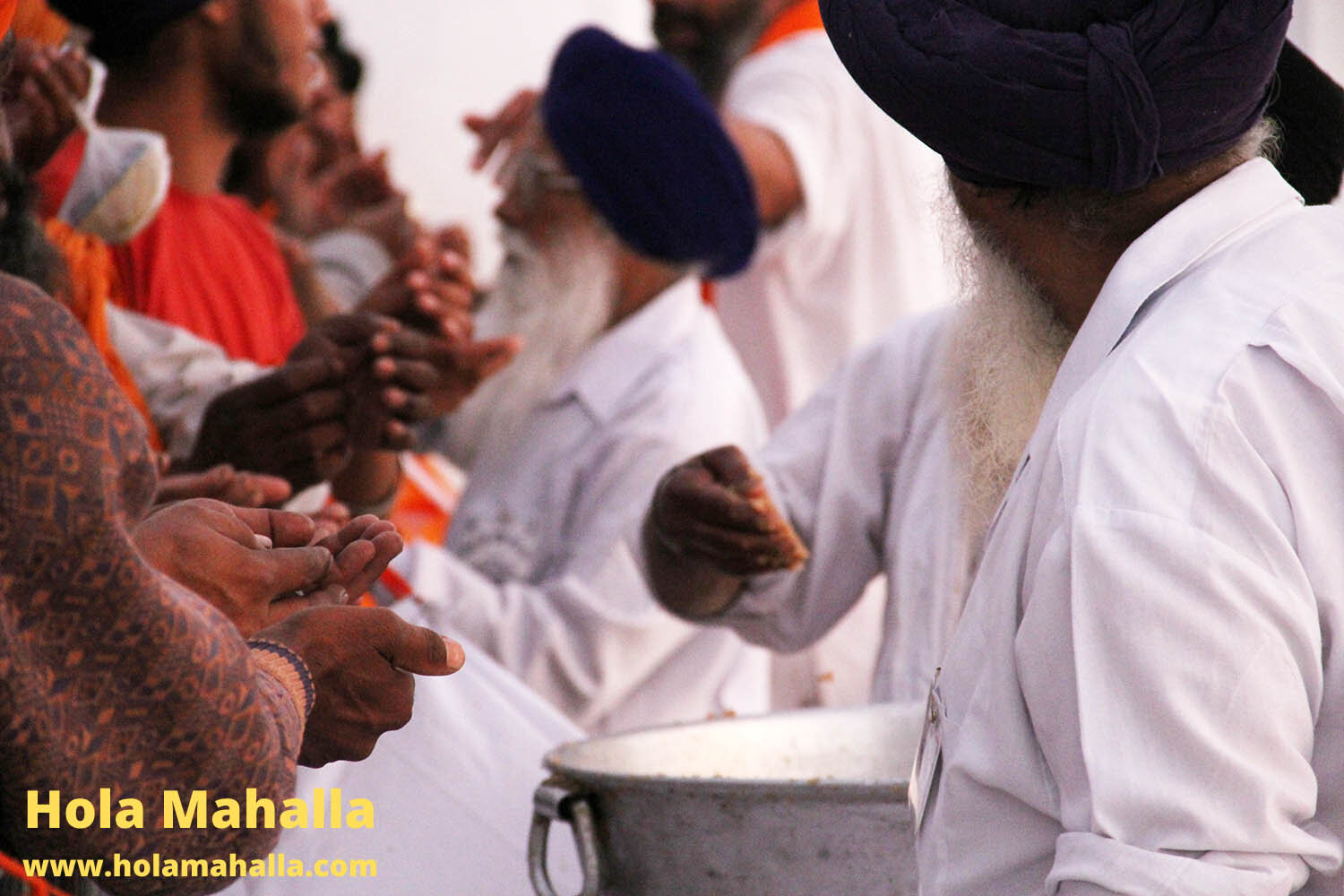

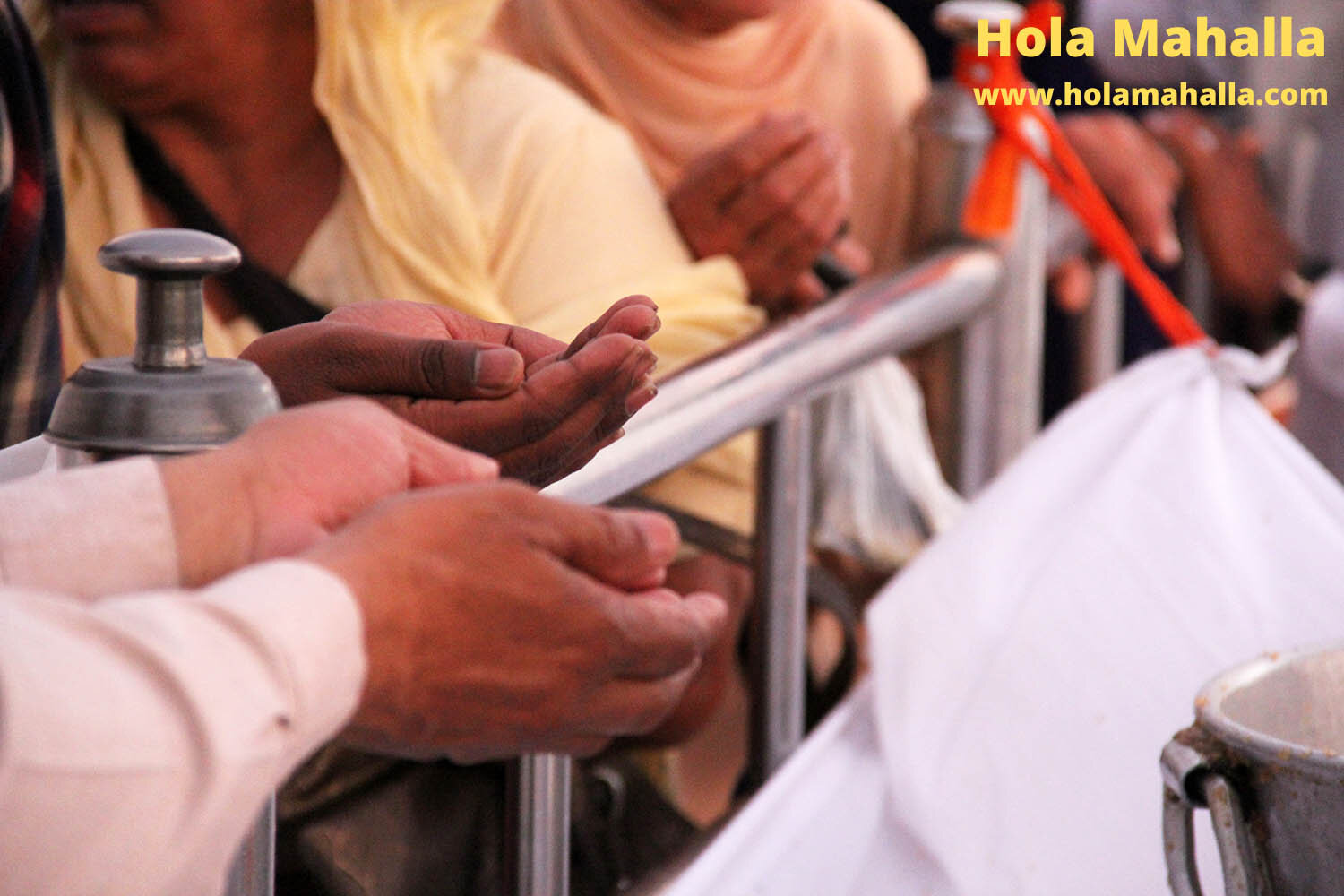

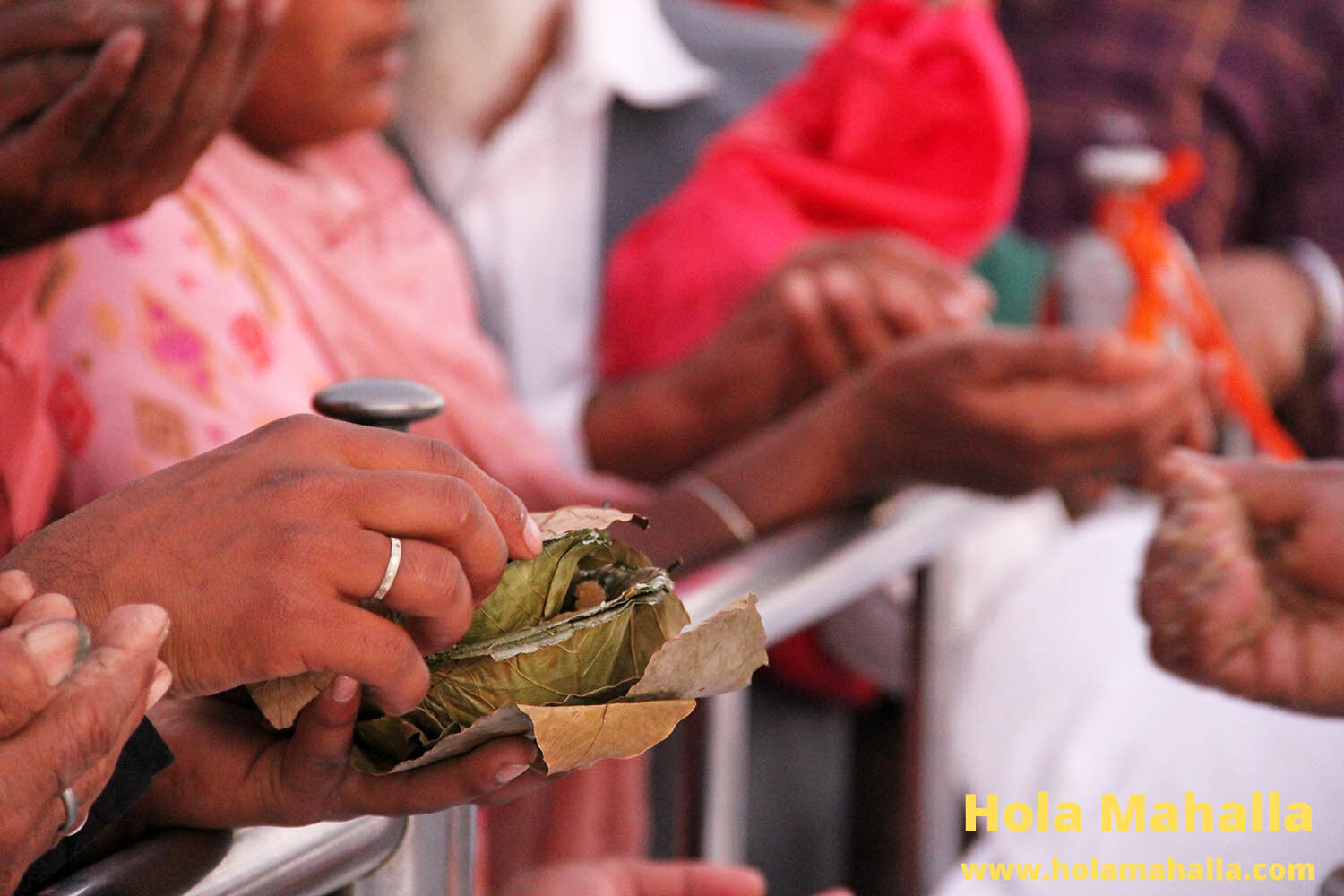
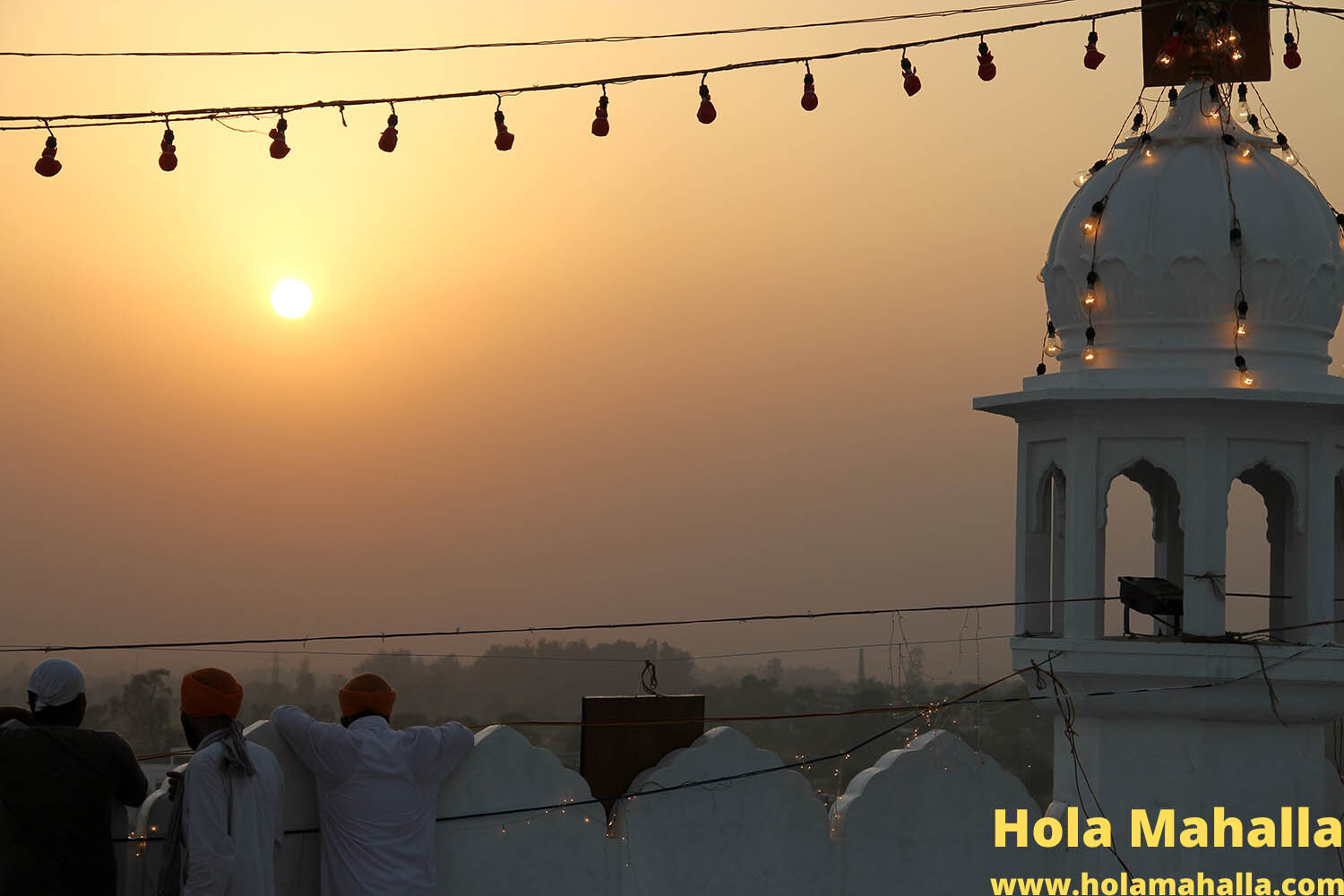

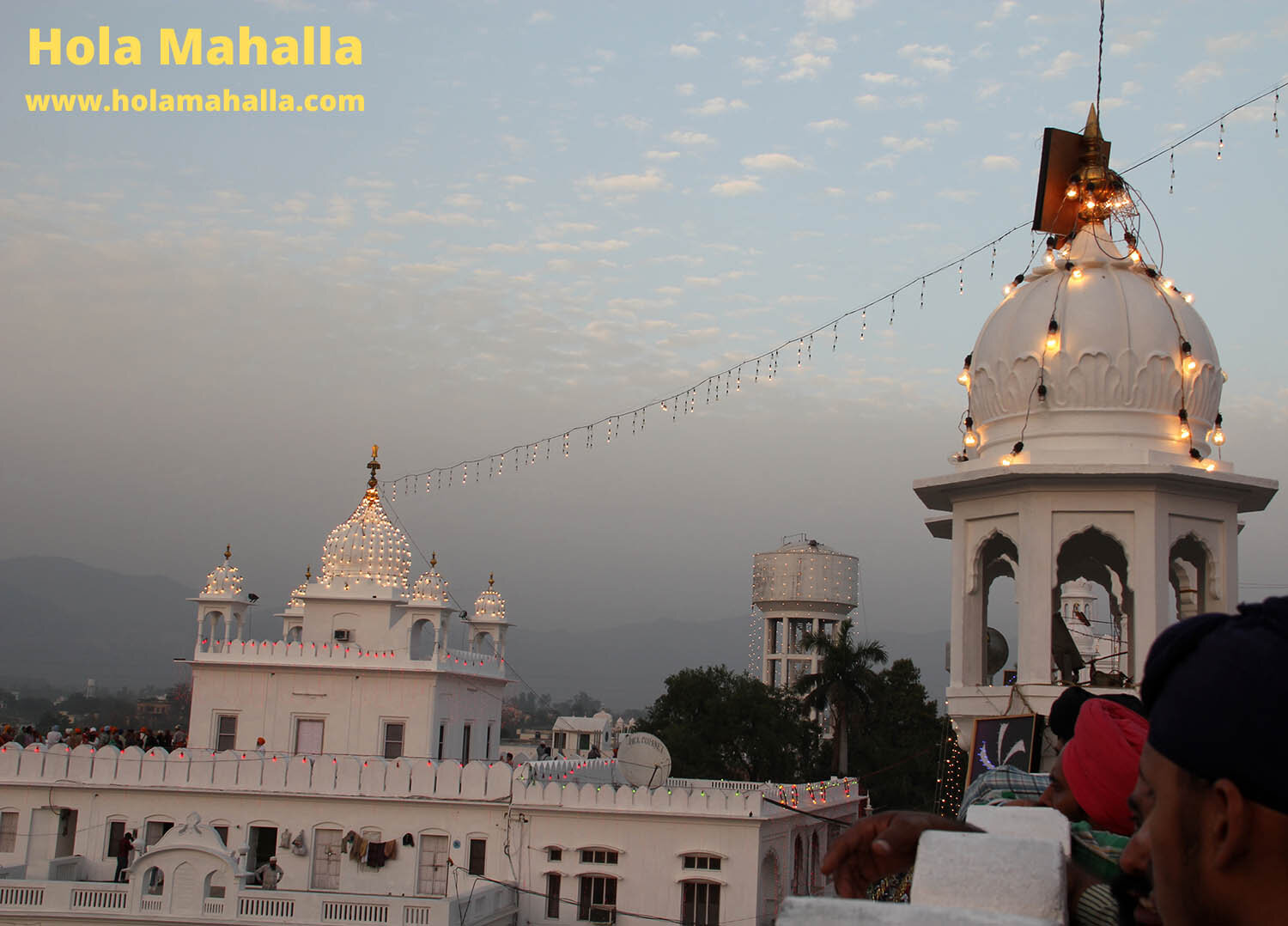

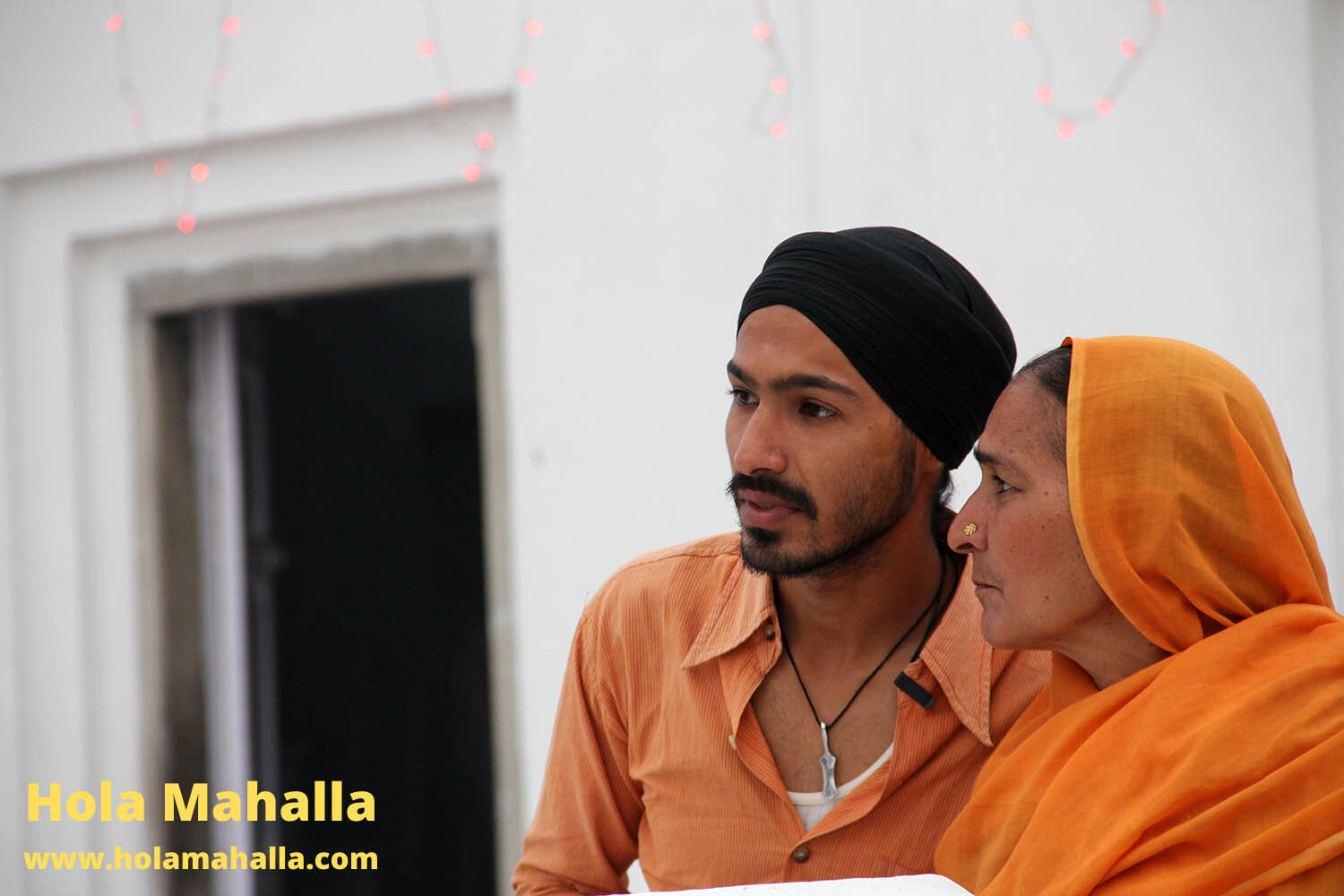


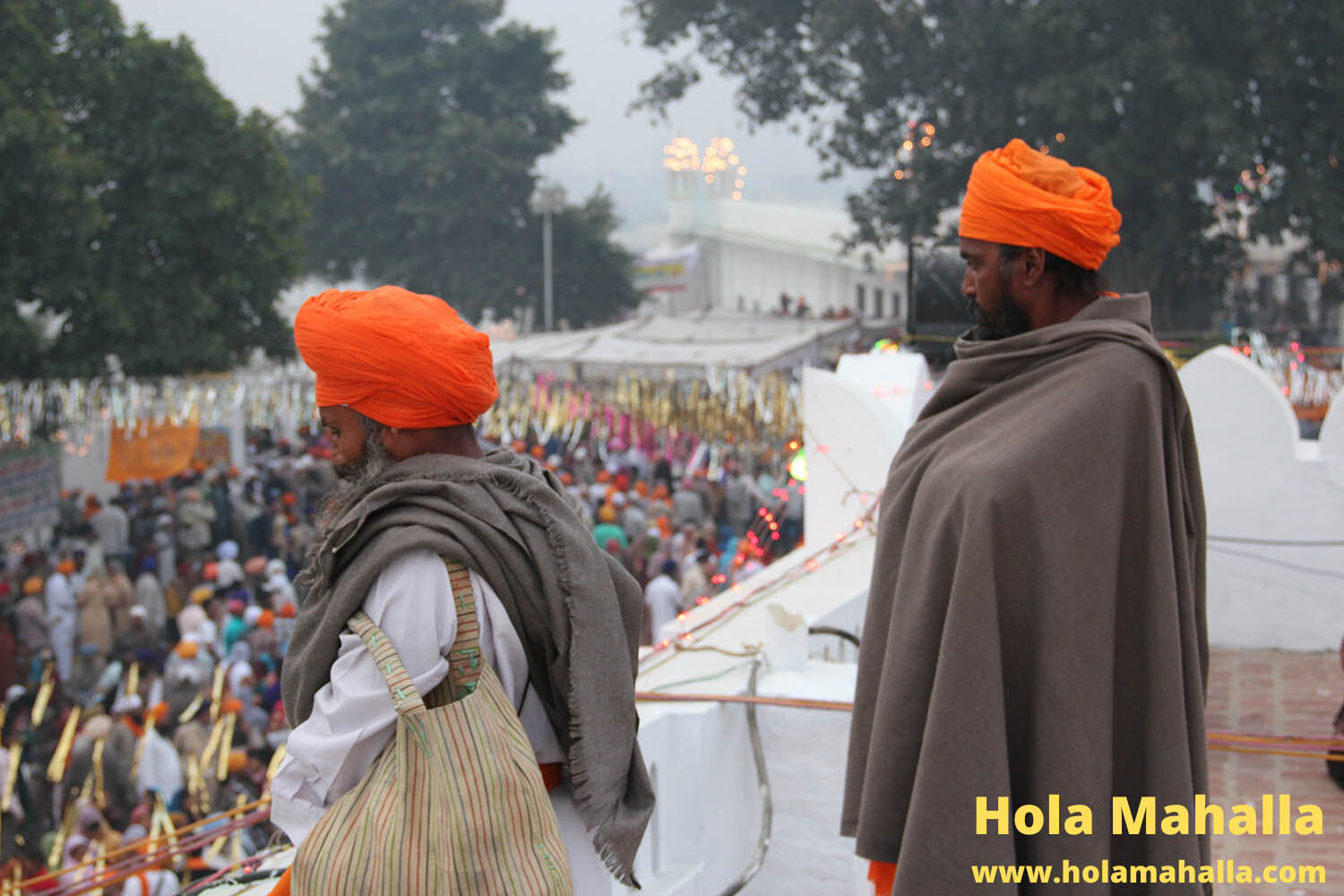
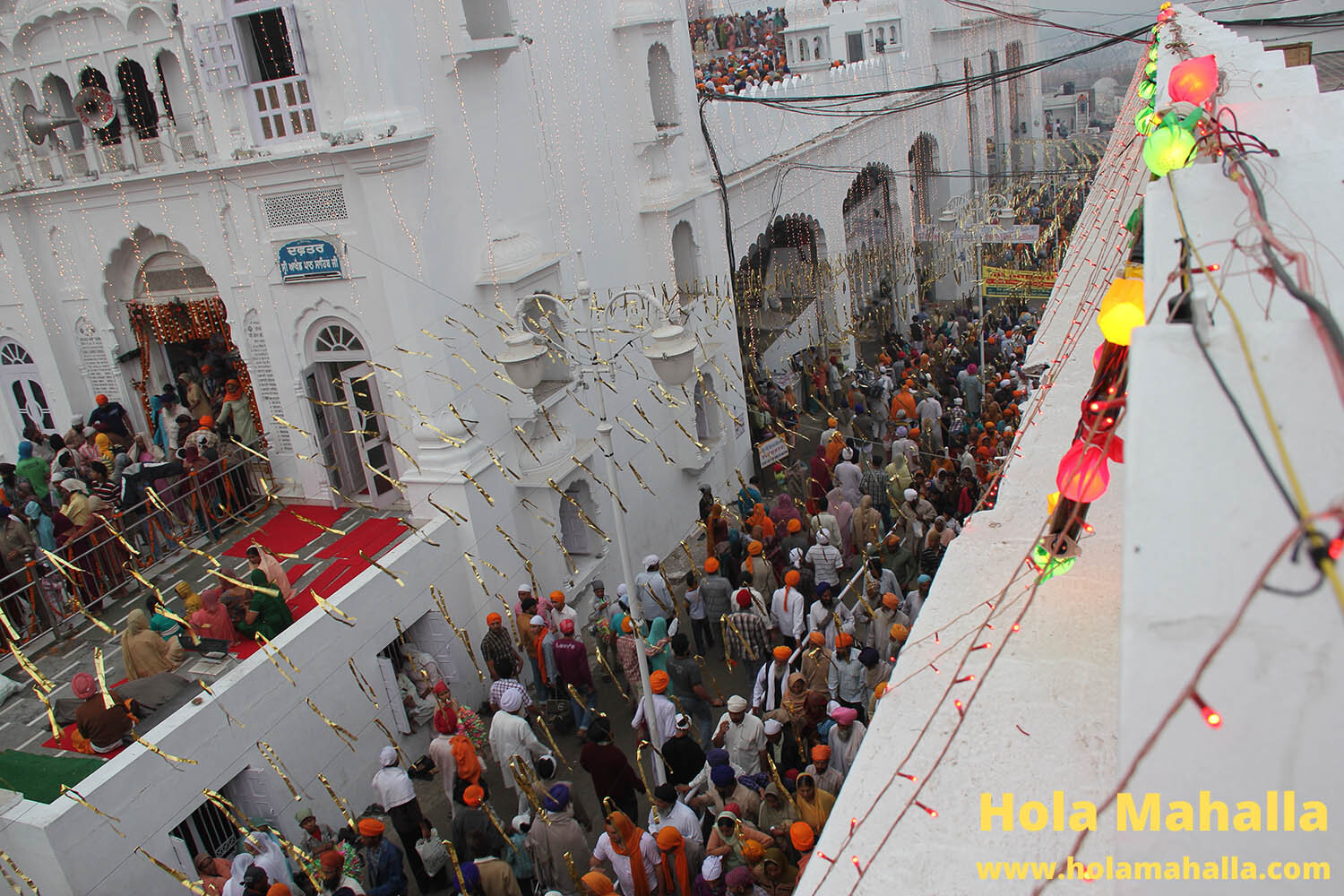
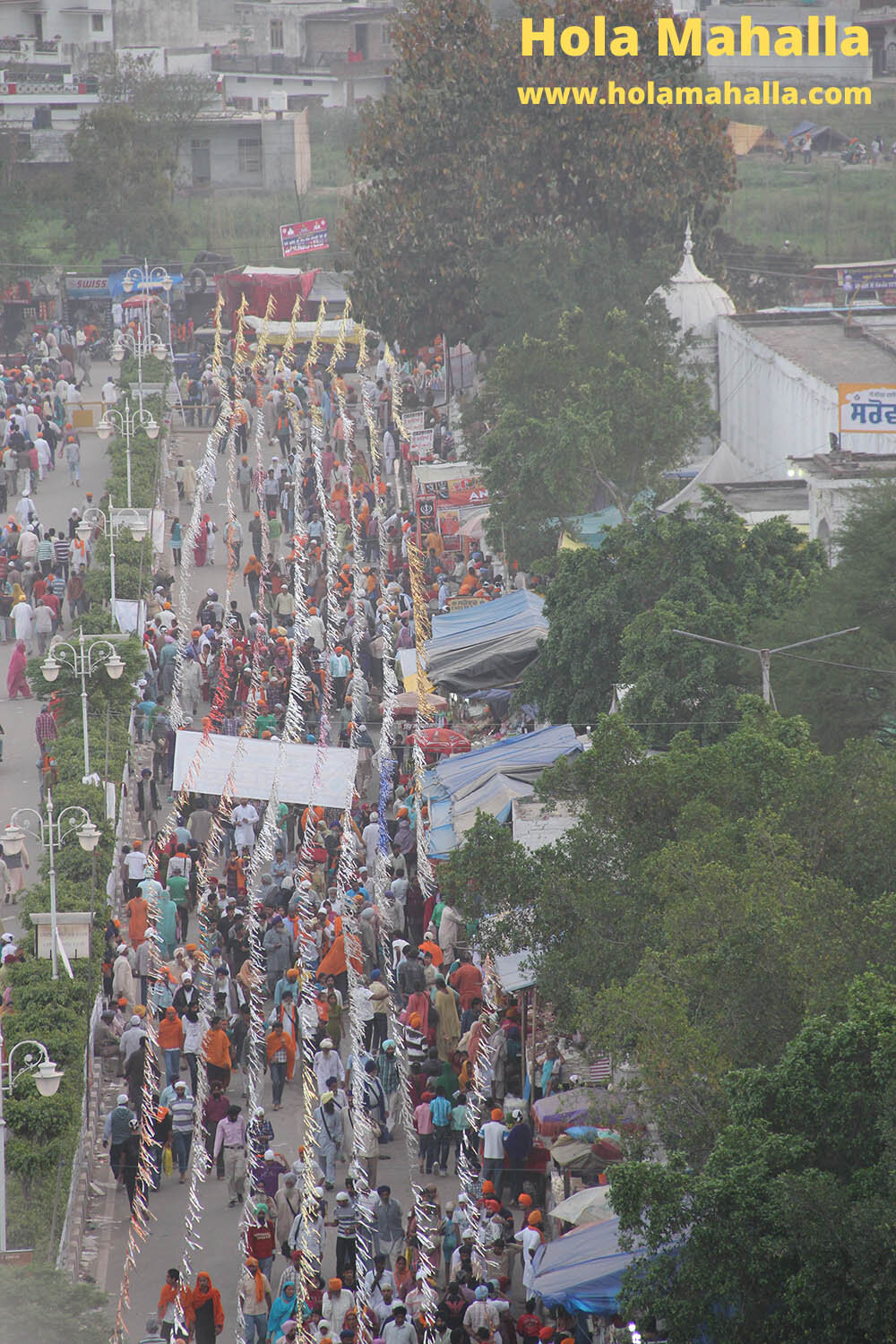
Anandpur Sahib through the early hours during Hola Mahalla.
The Bazaar (Market)
The Nagar Kirtan/prosession passes through the bazaar/marketplace, during the festival it is full of people and very difficult to walk to through.
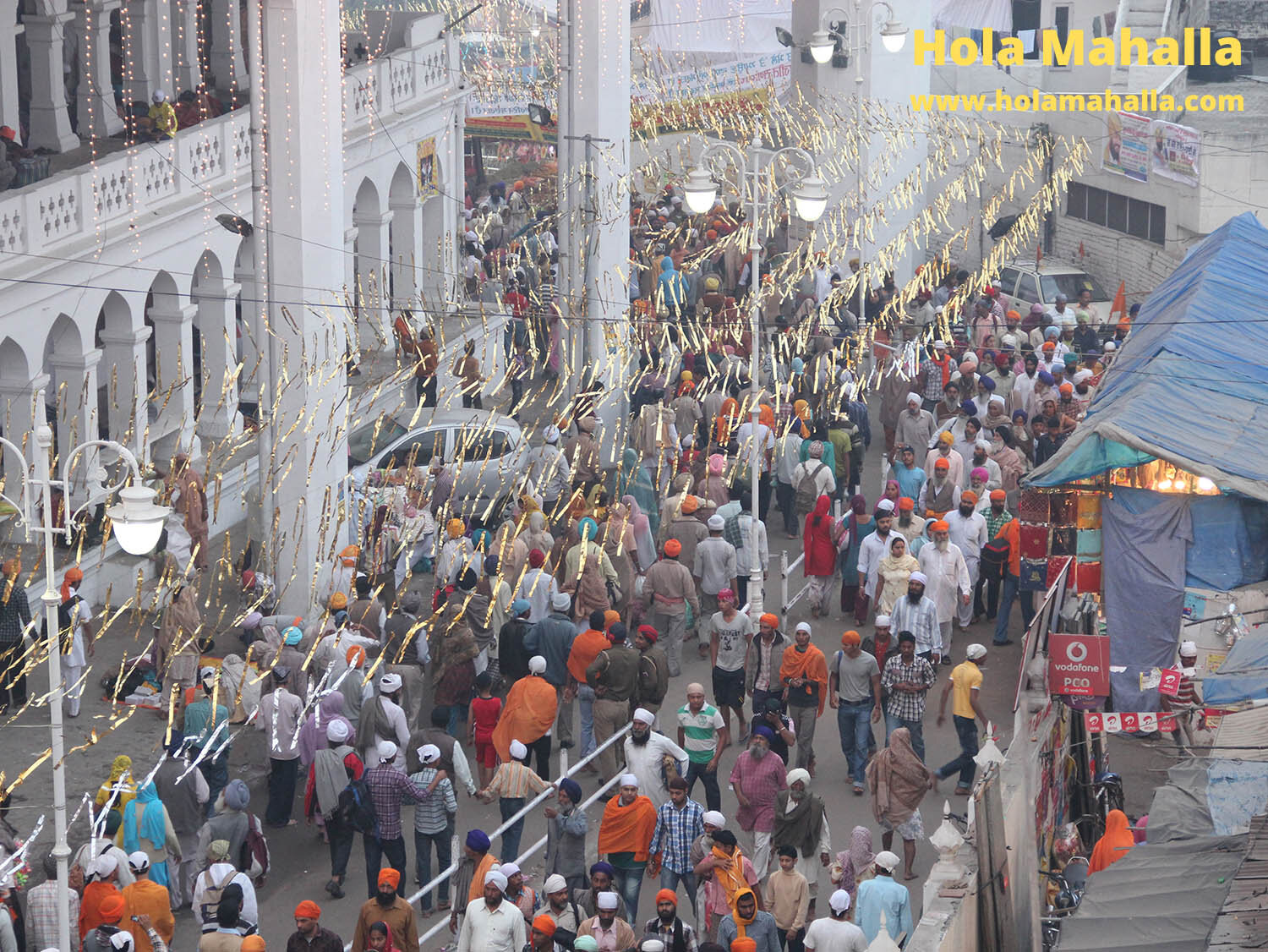

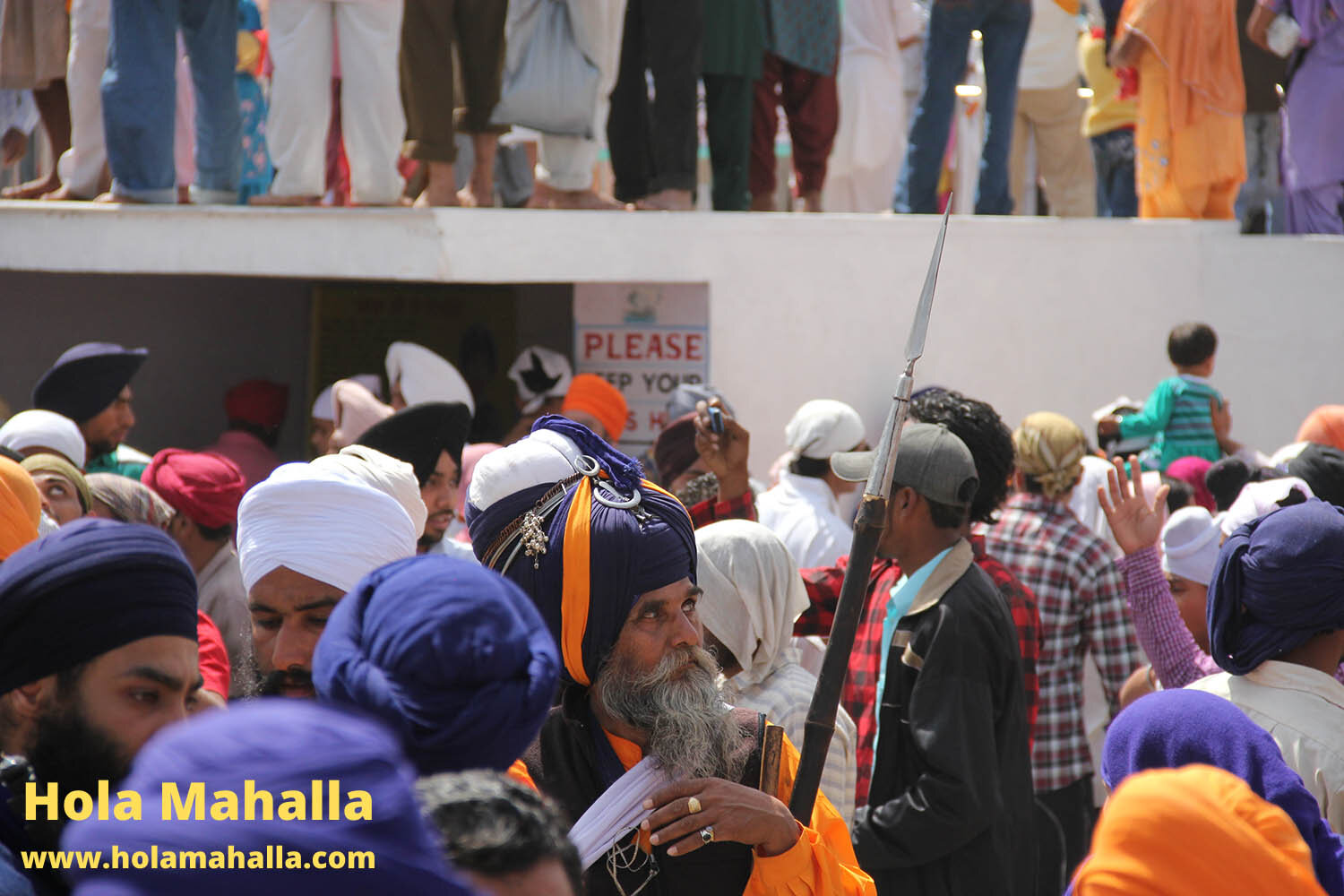
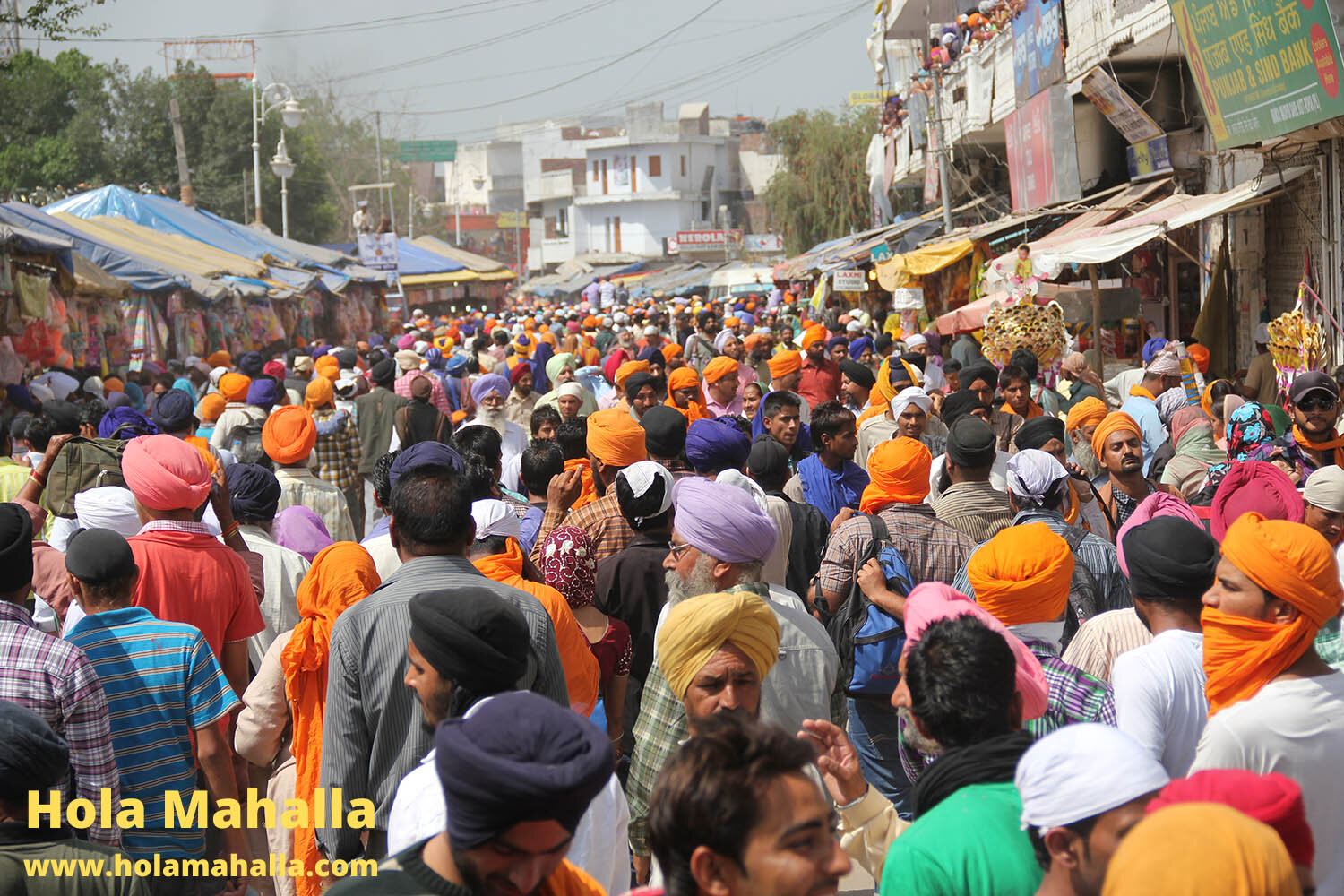
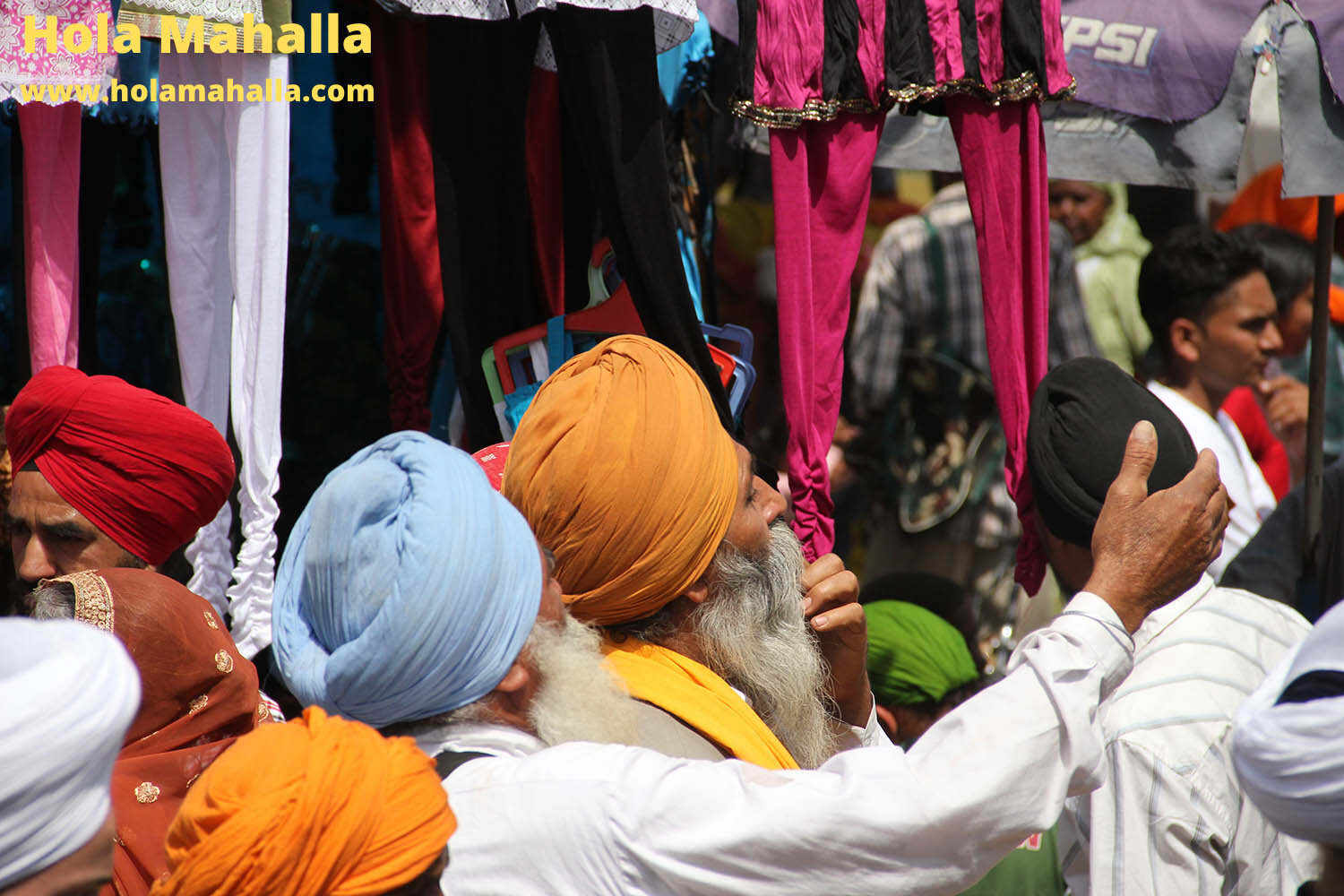
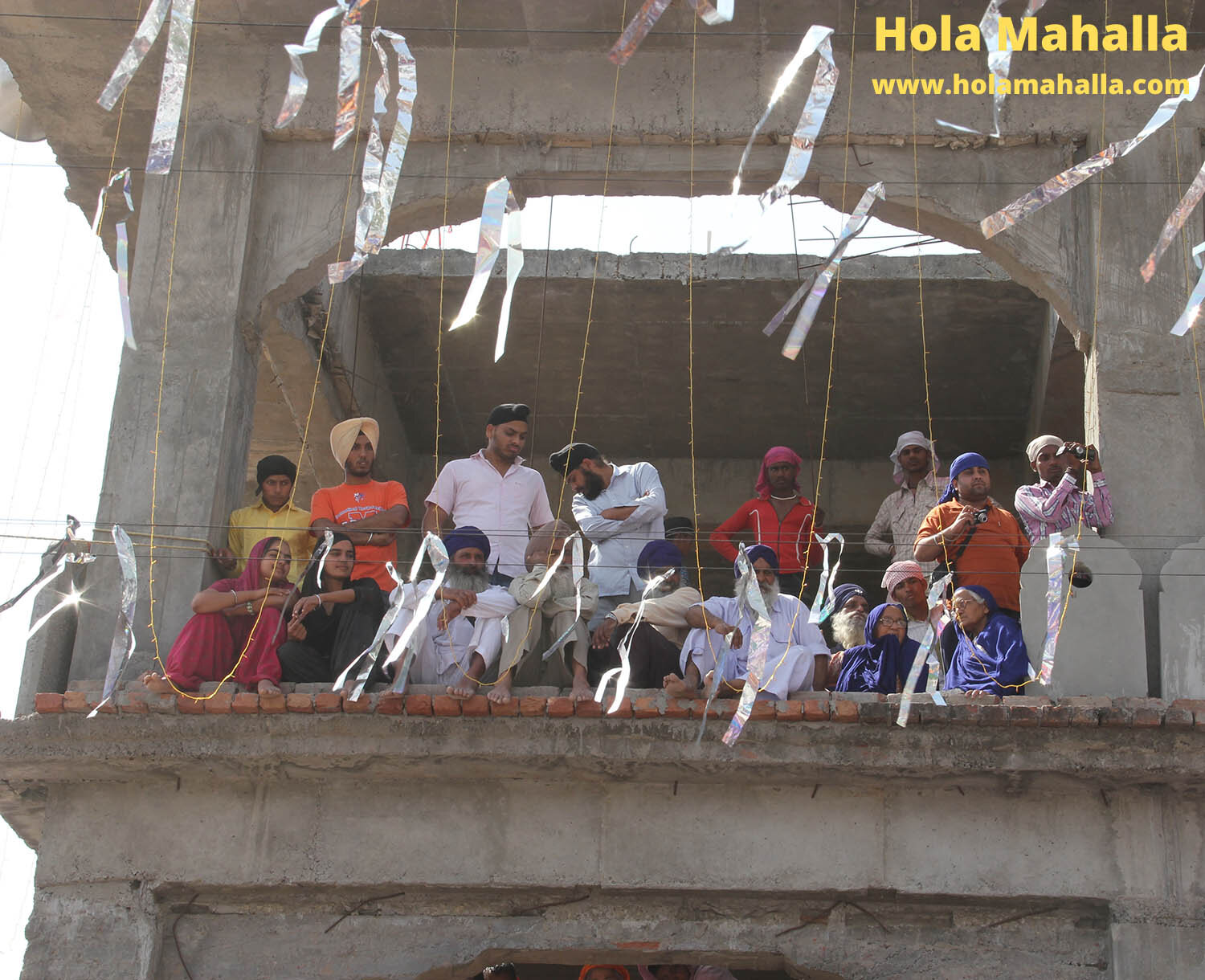
Nihang Dehrae
The Nihang Dehrae are situated either side of the marketplace where they have set up camp. Members of the Dehra congregate together to take part in gatka demonstrations before the procession.
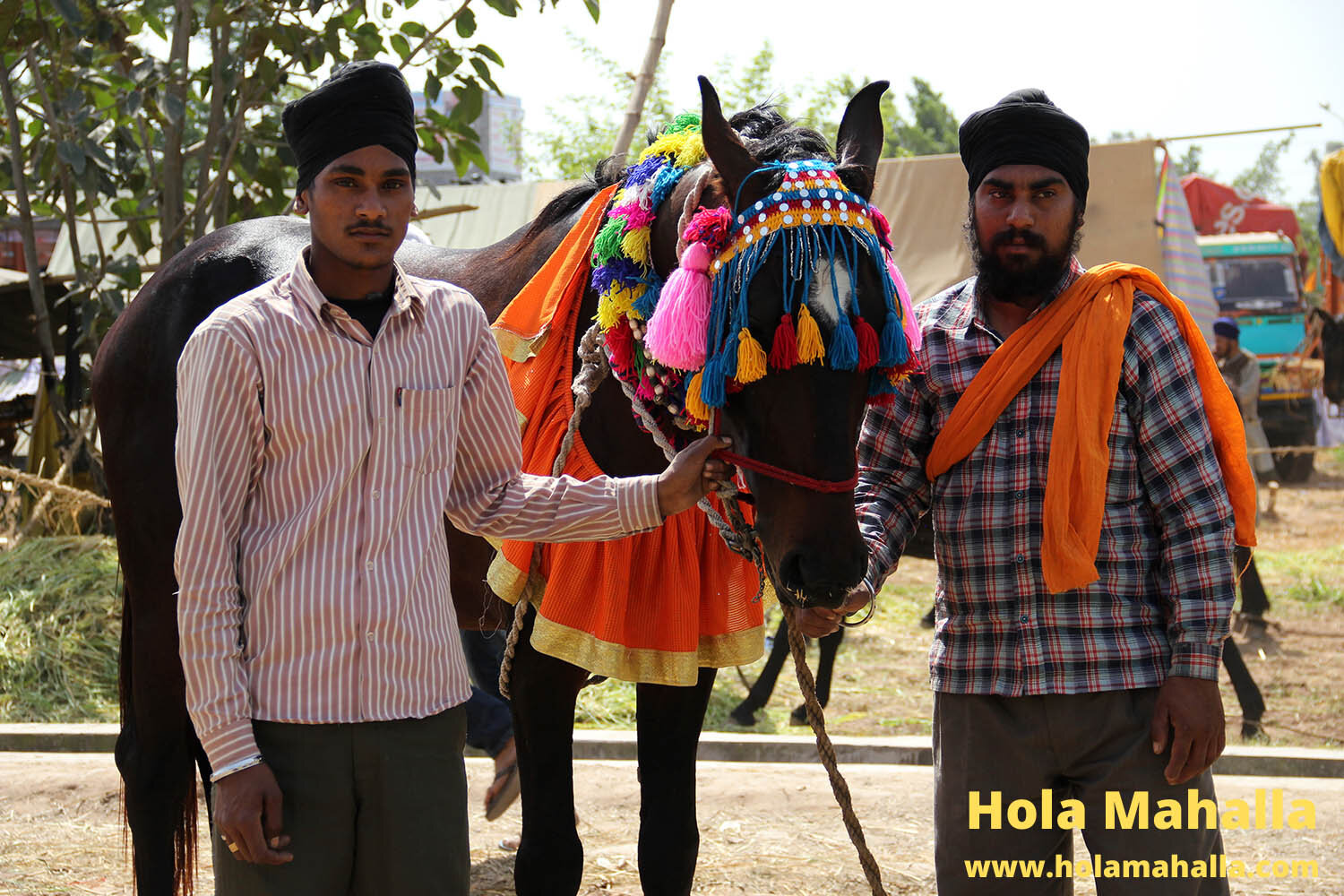
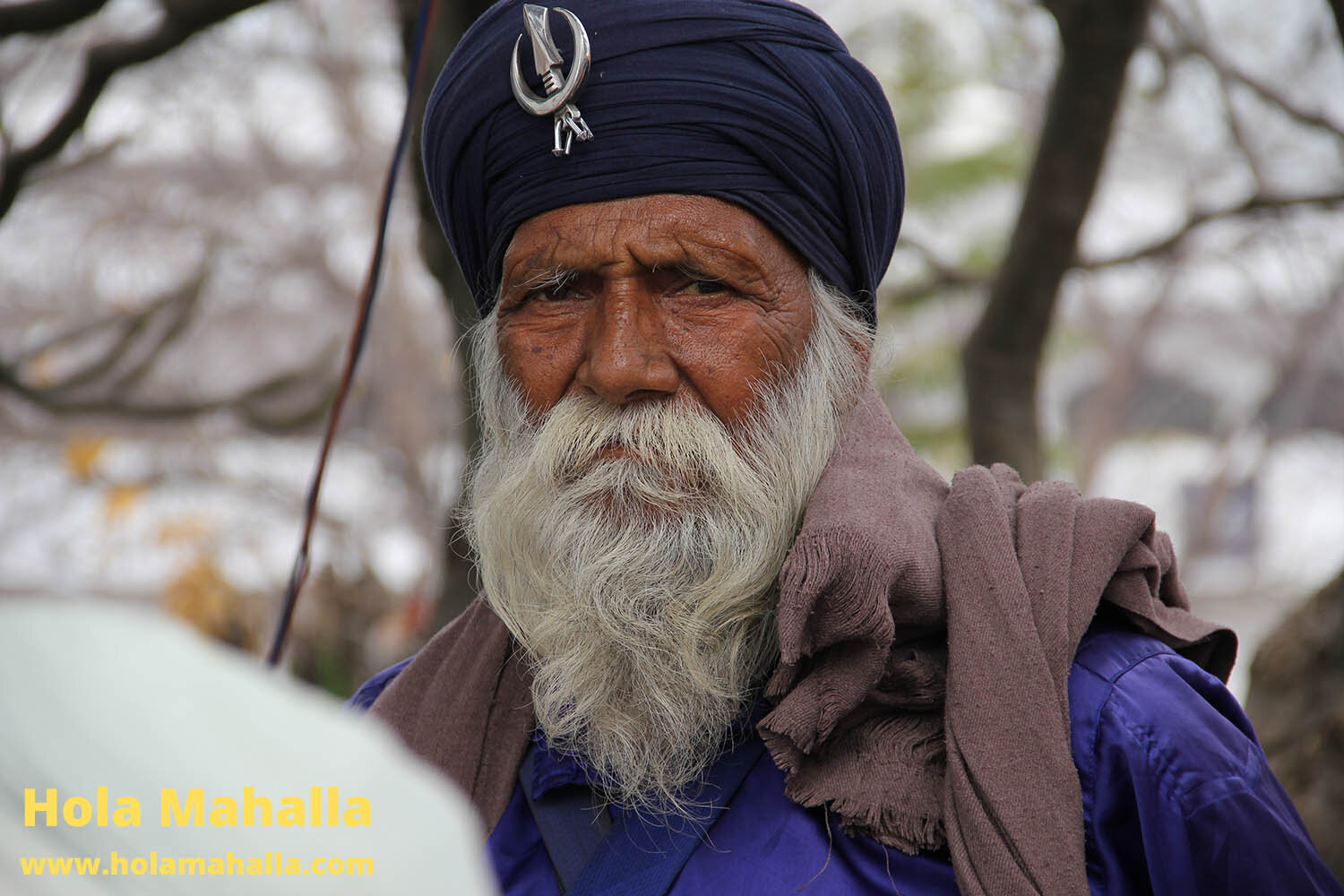
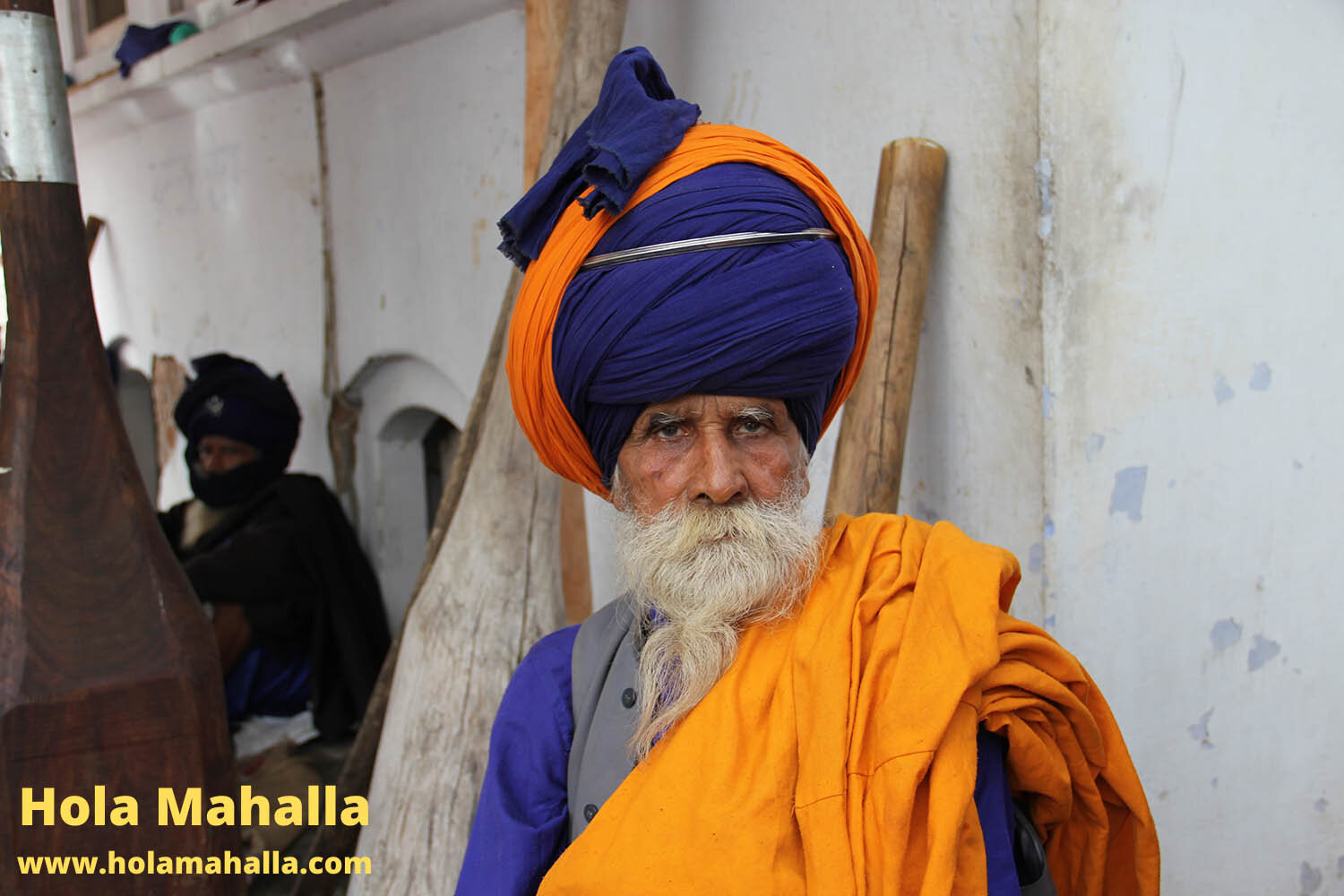
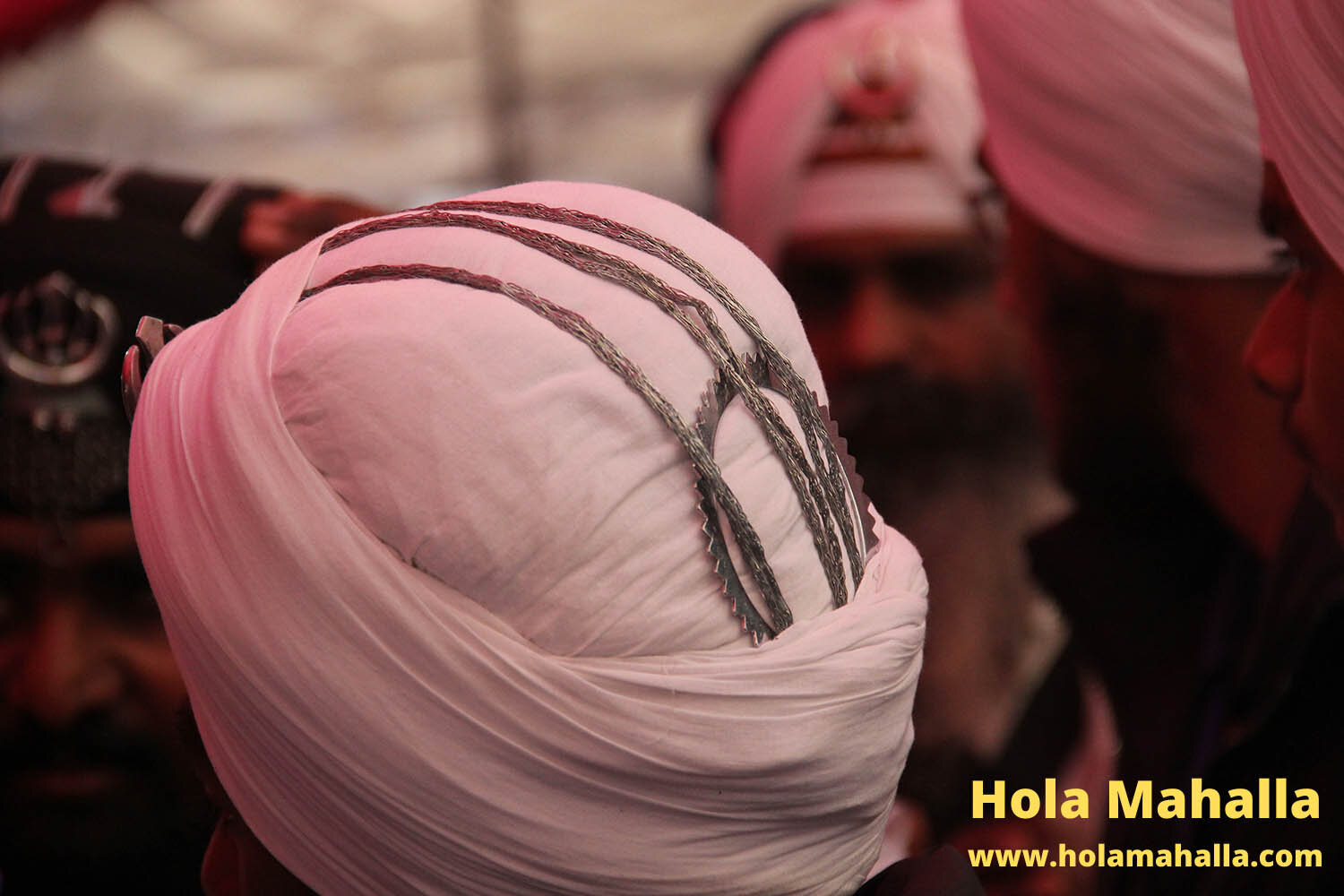
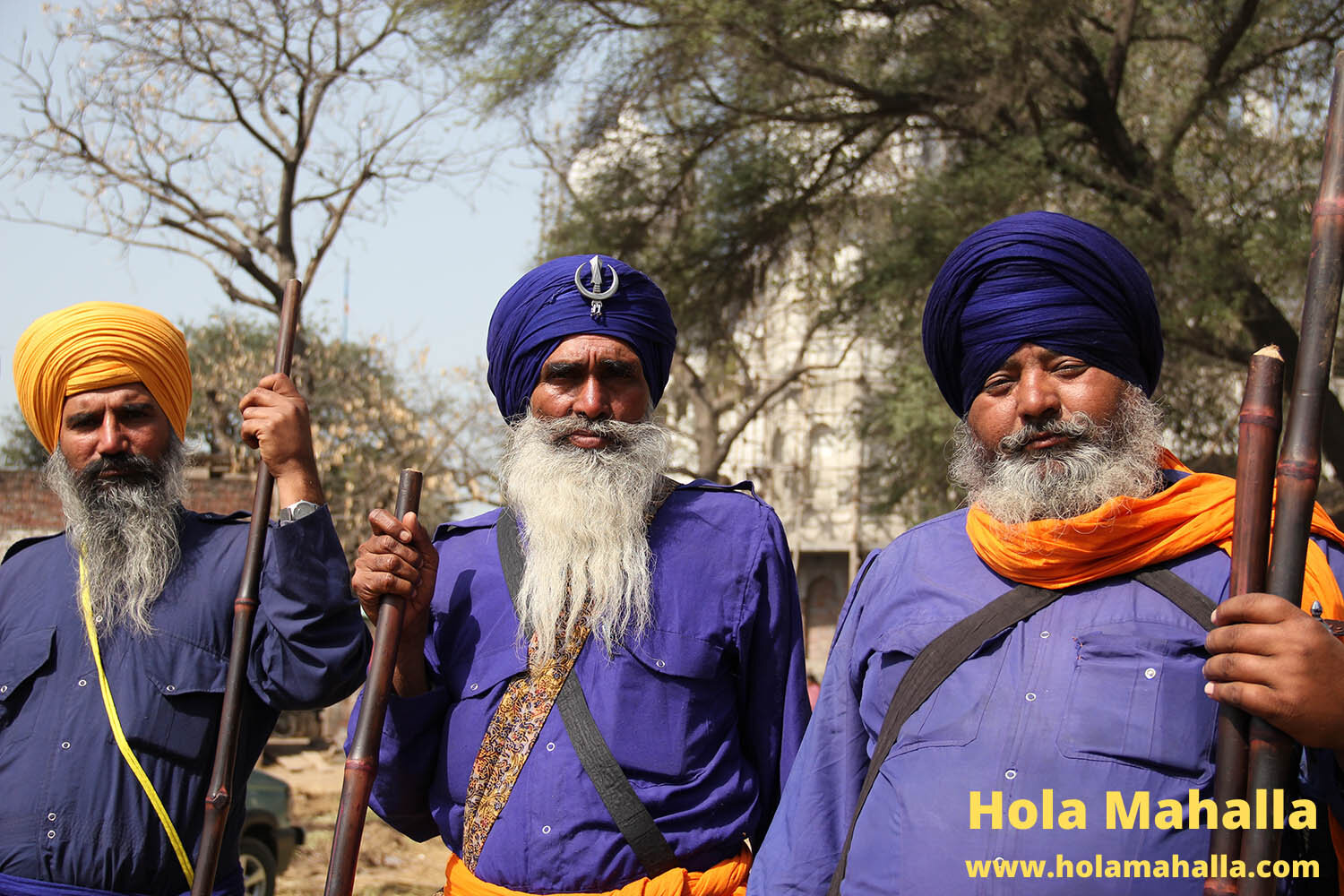
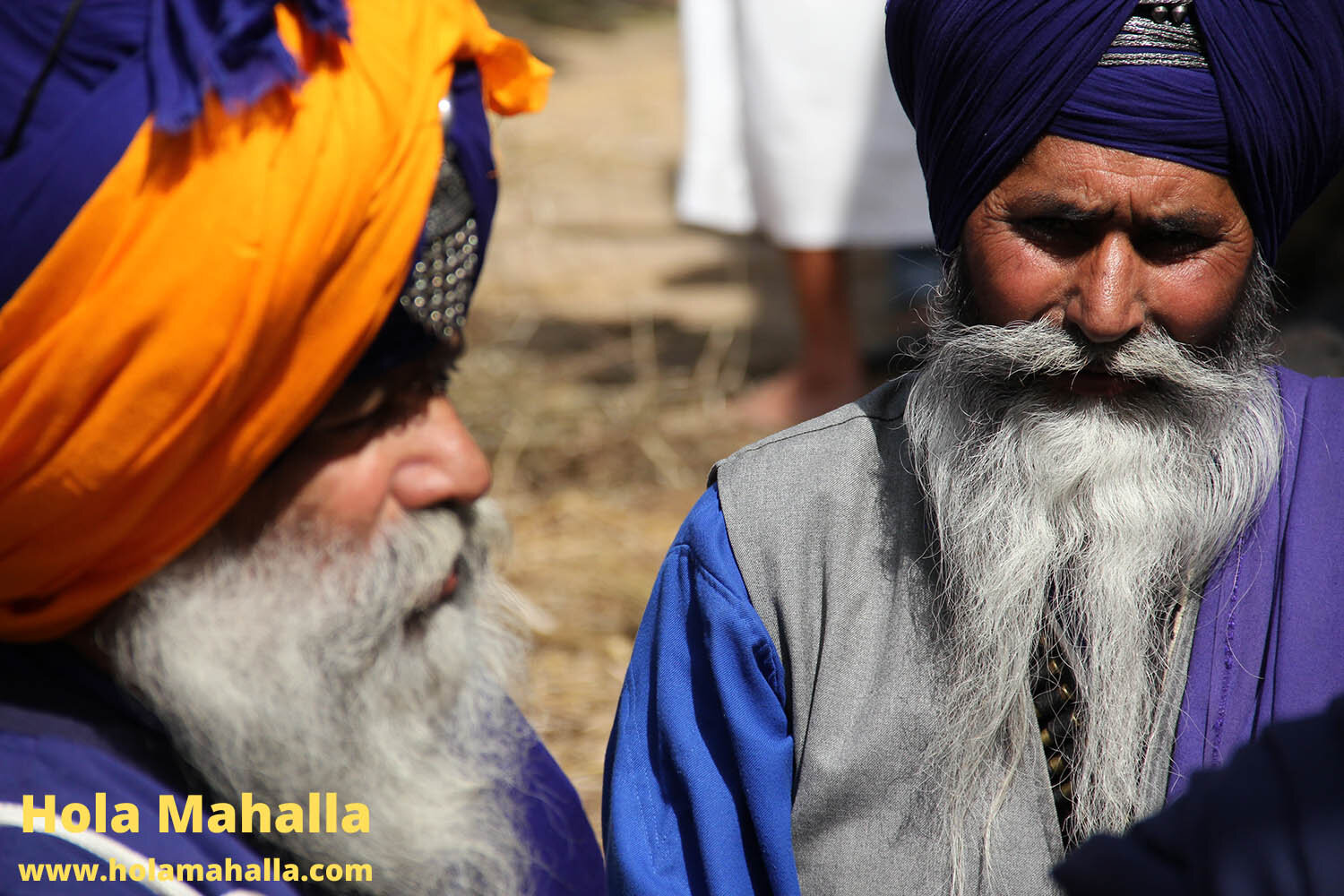

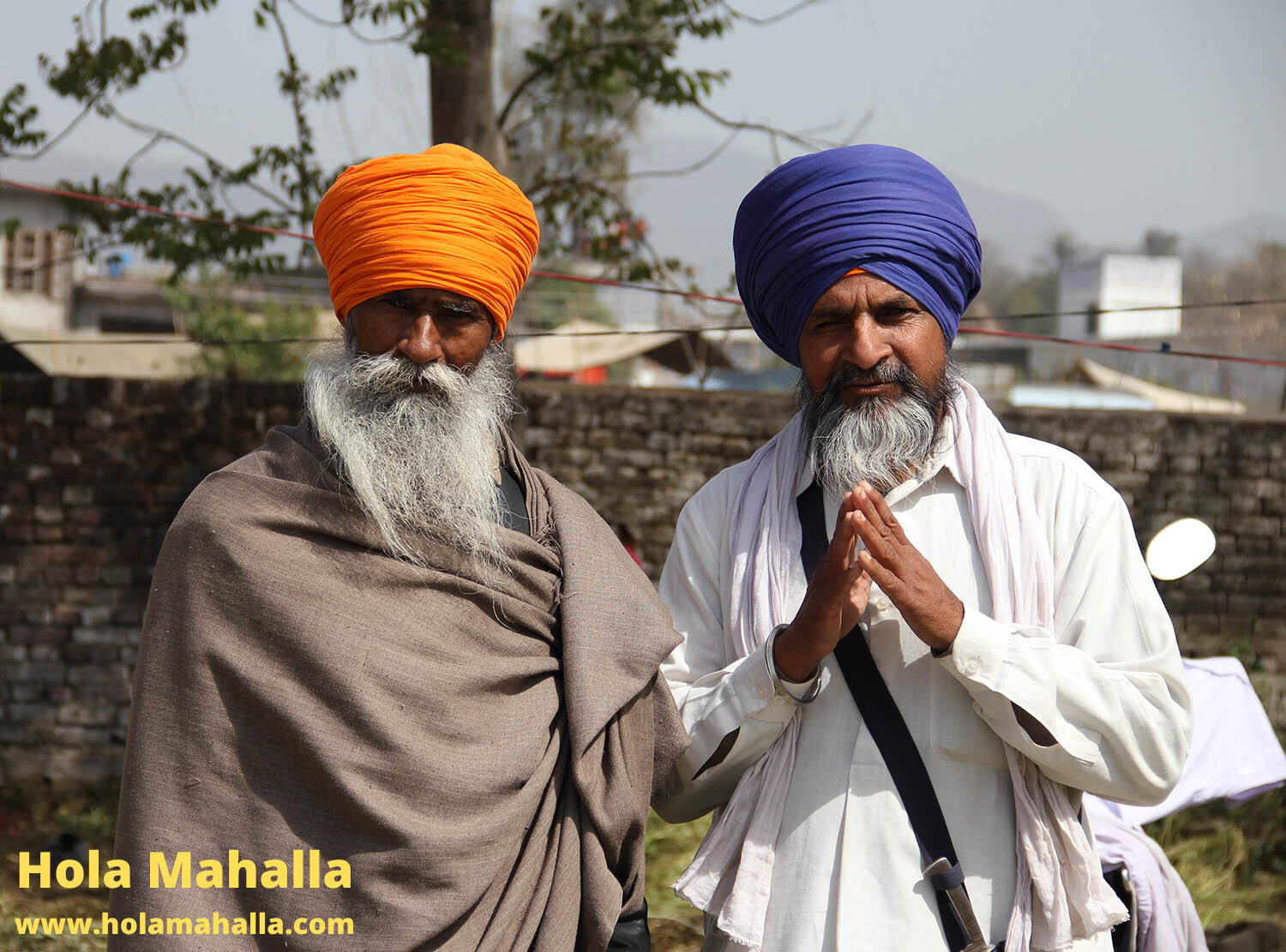
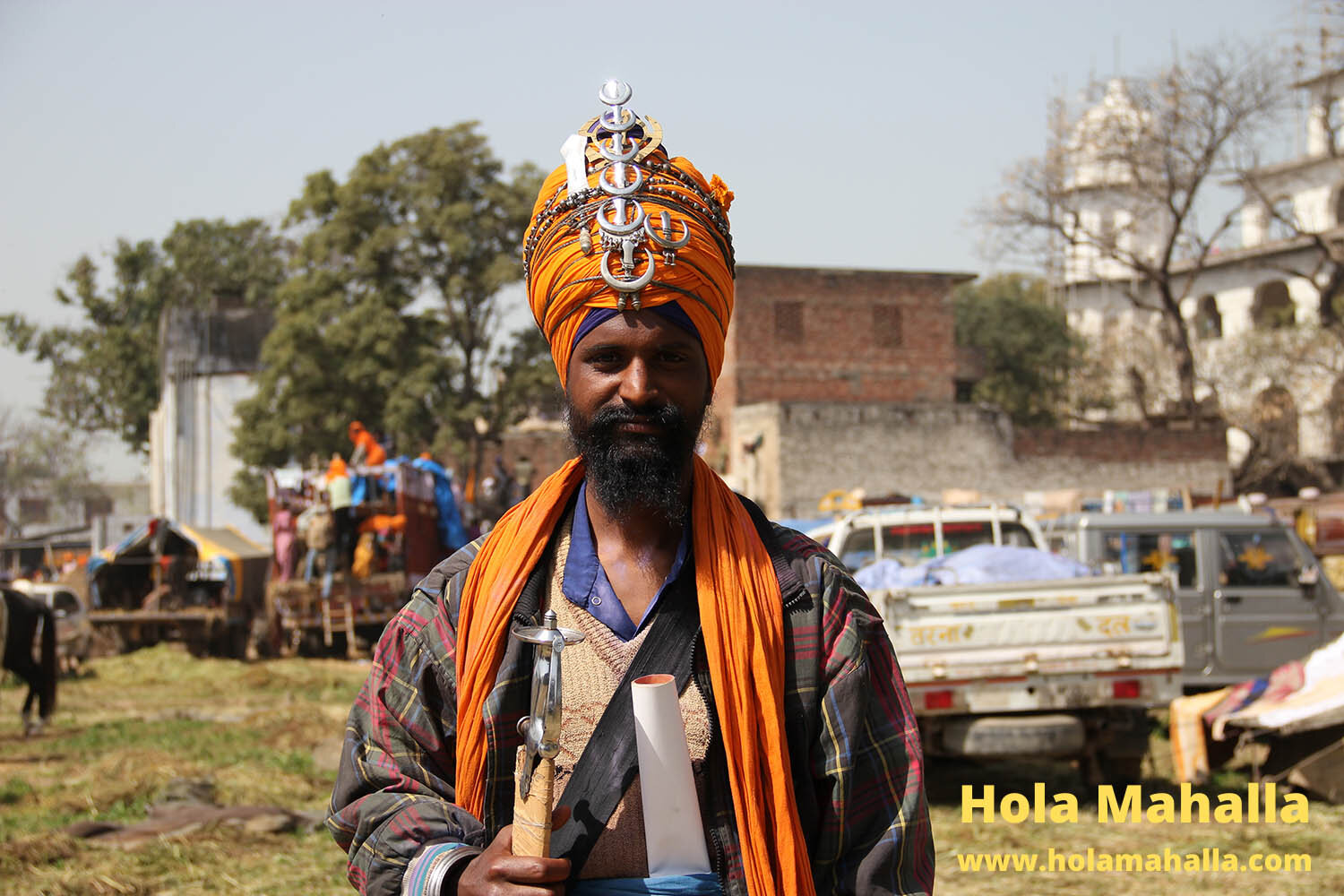
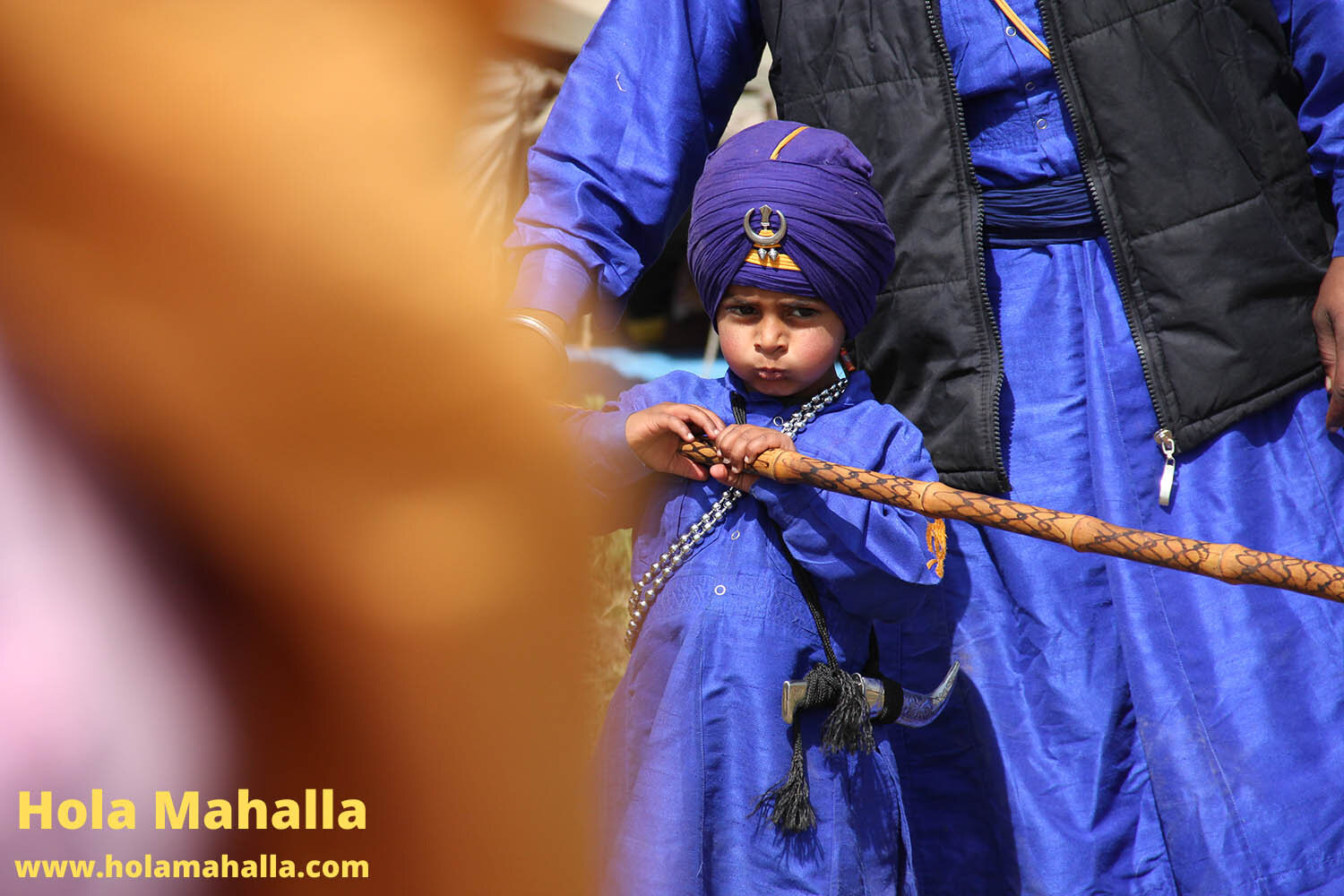



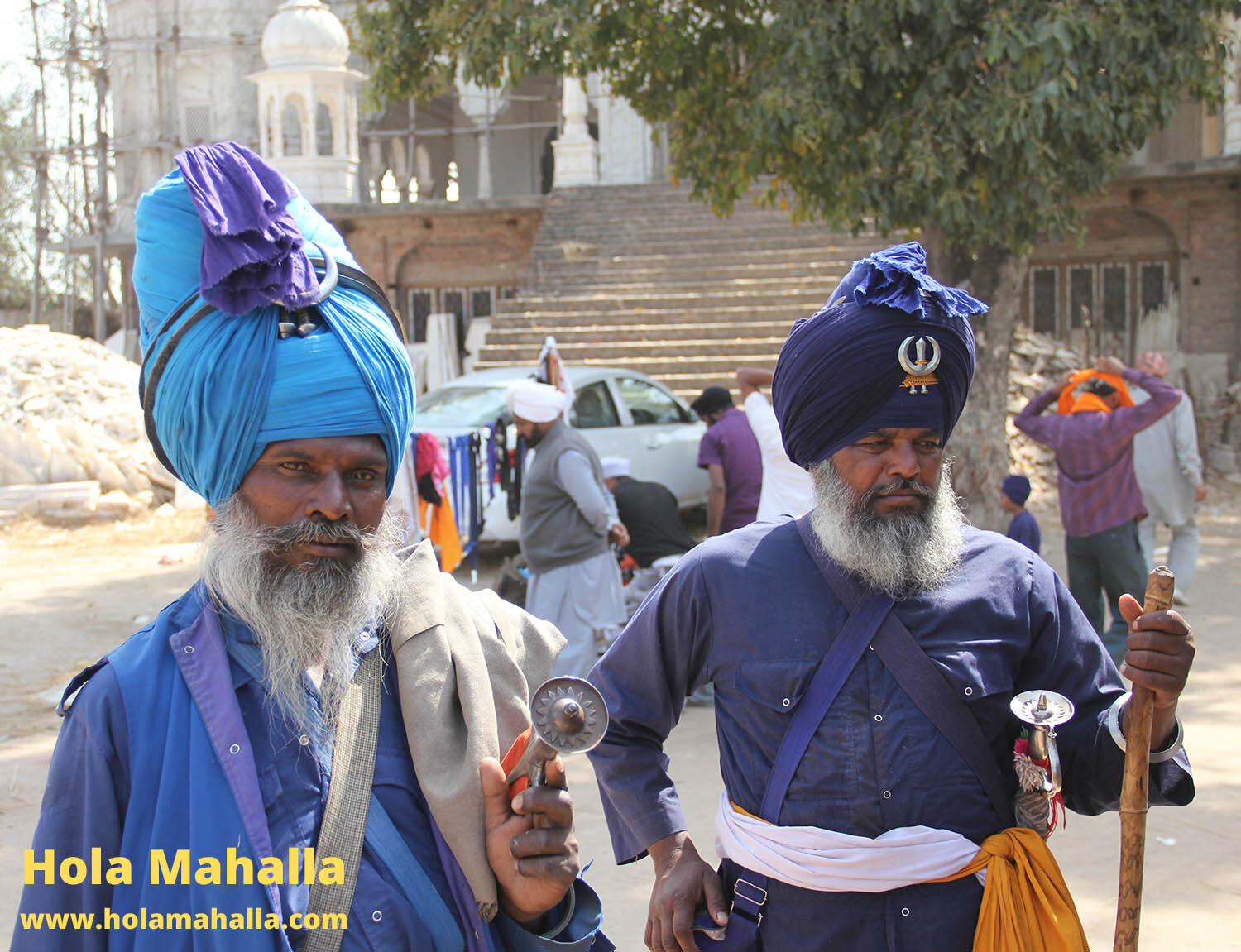
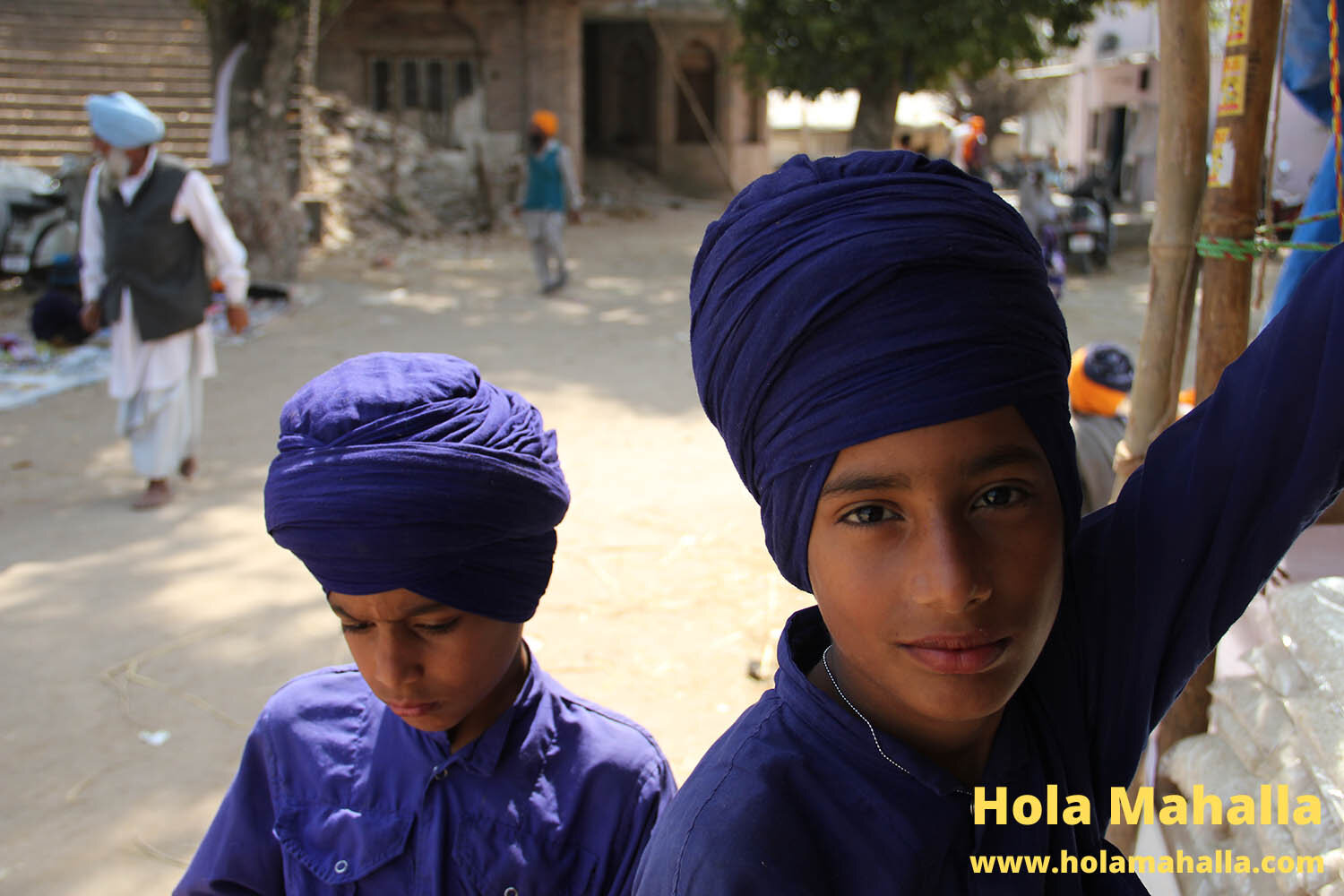

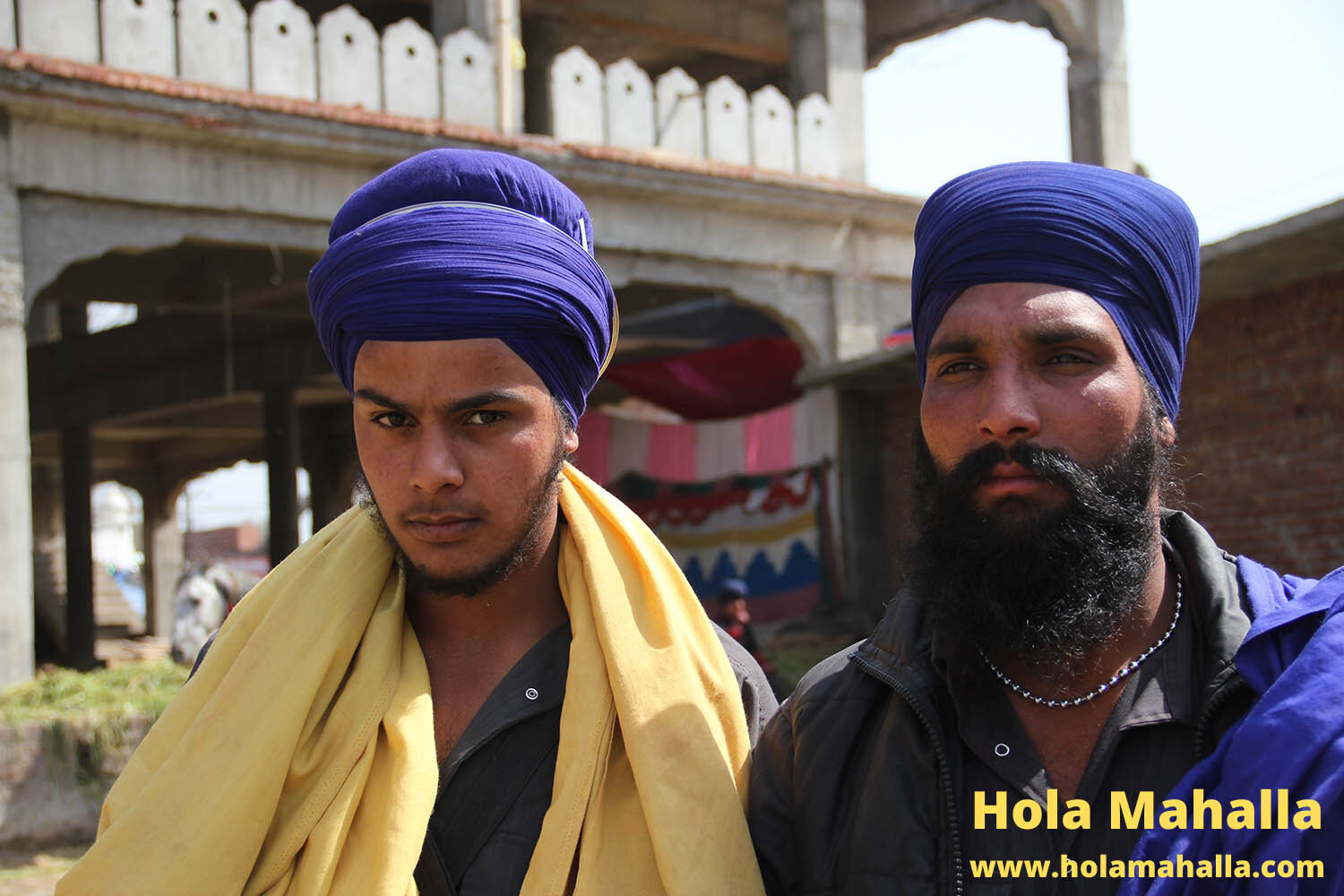
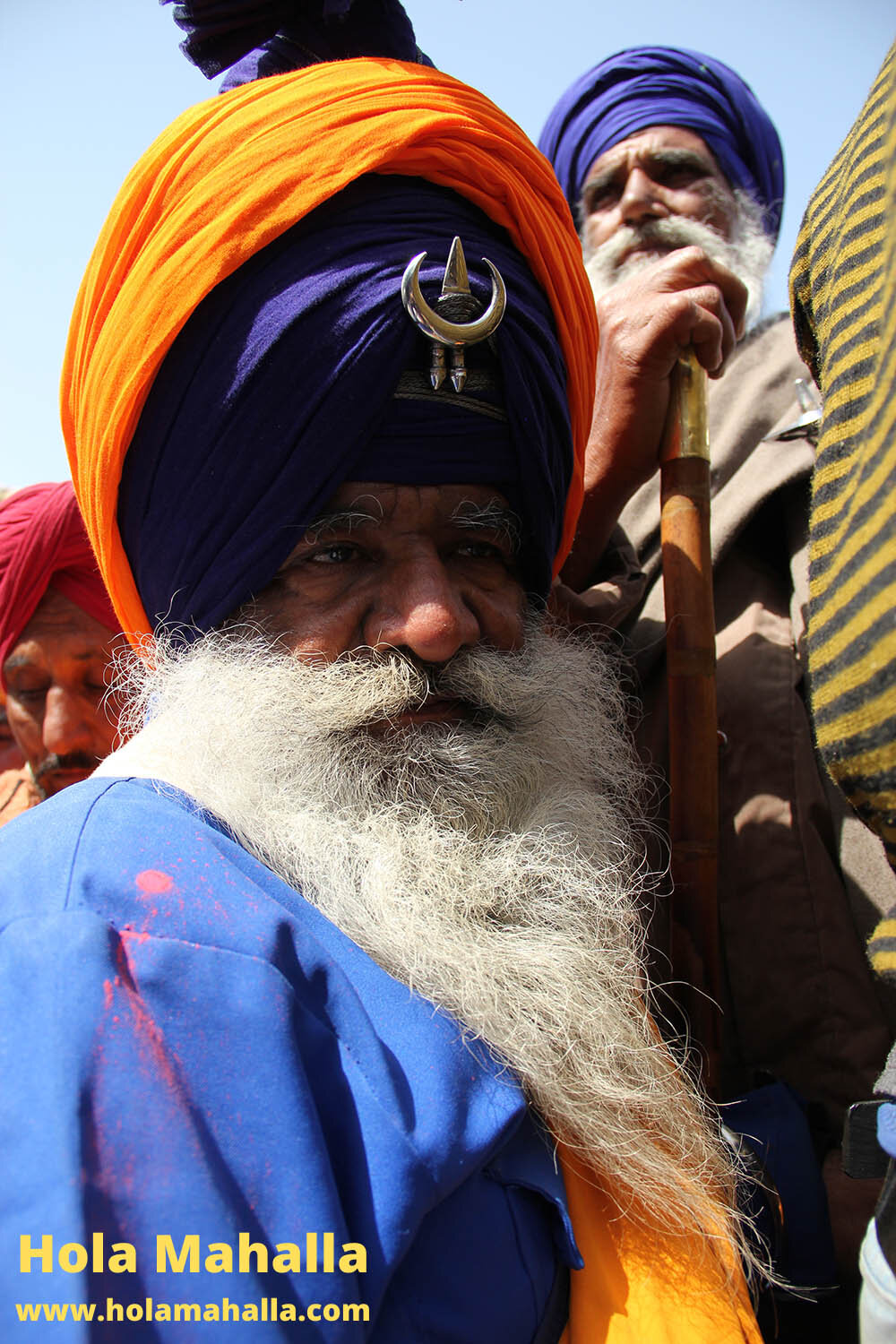
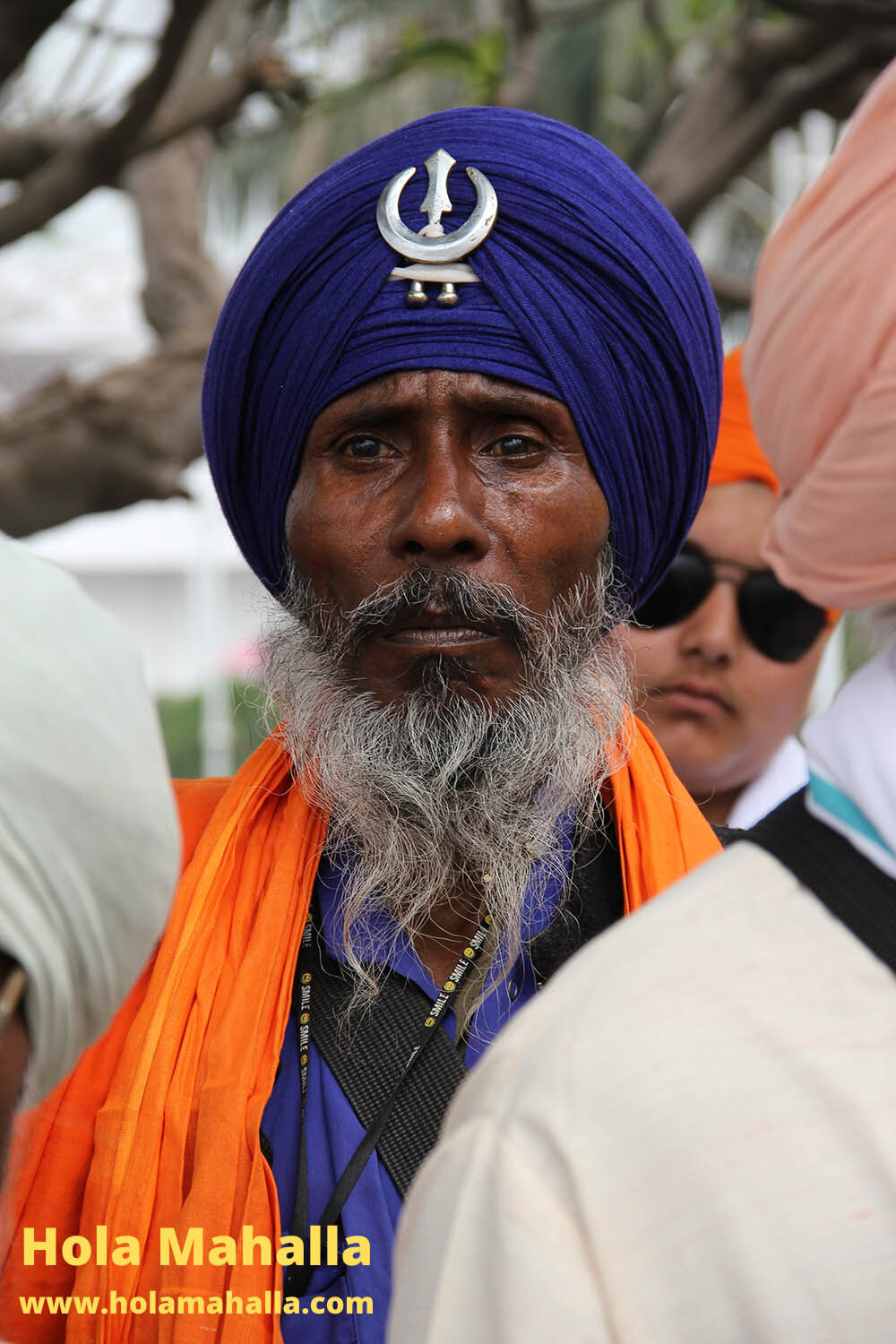
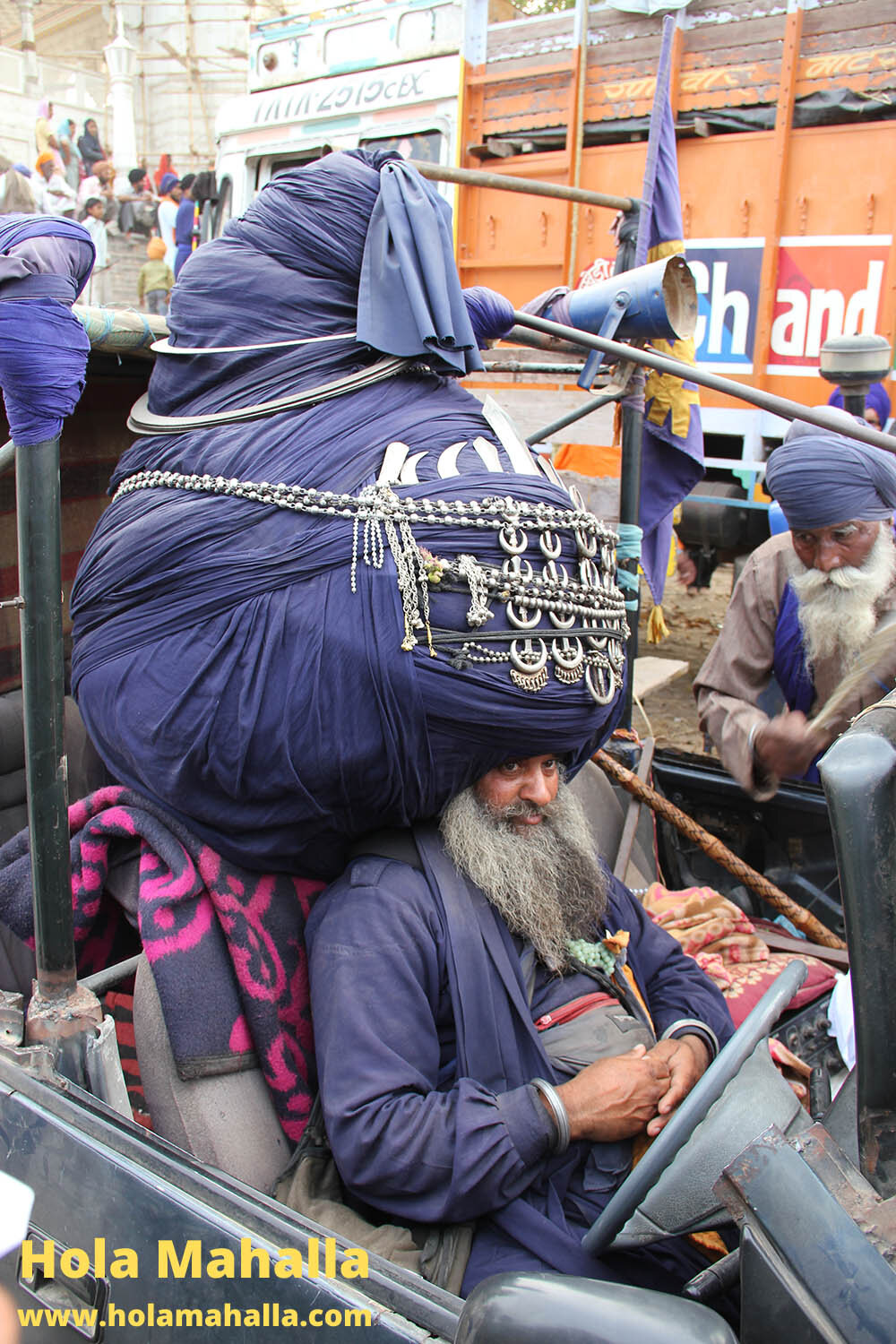
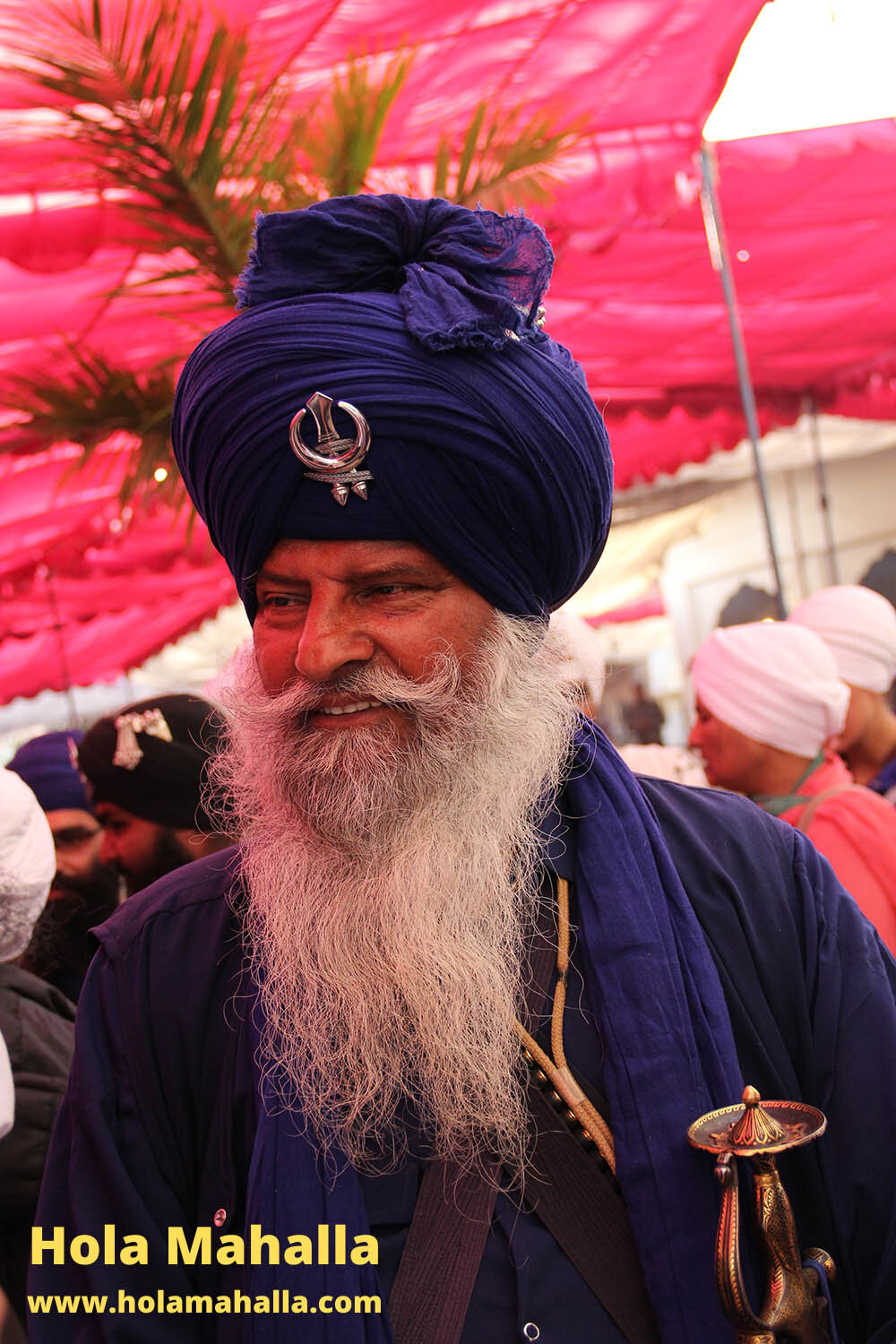
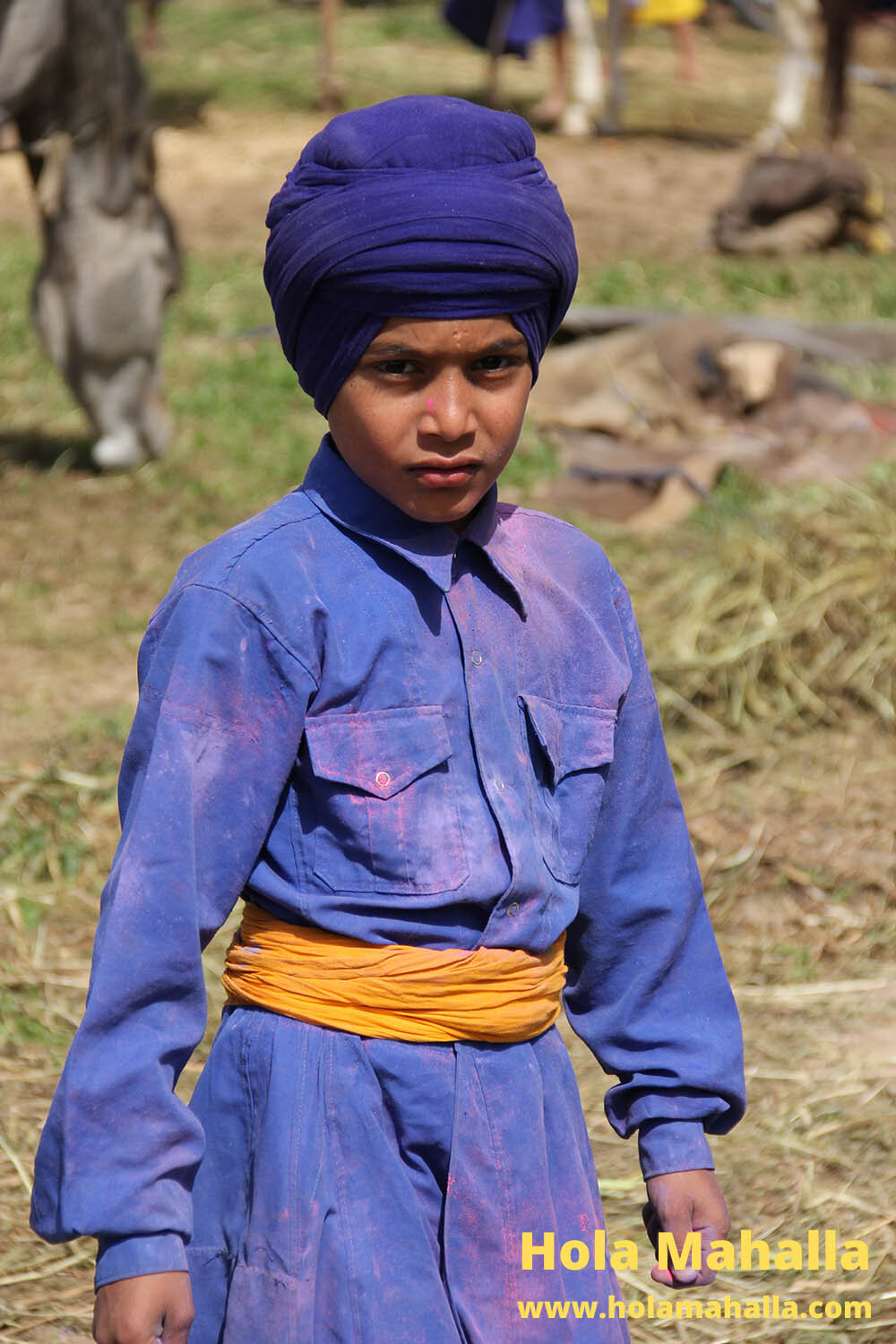
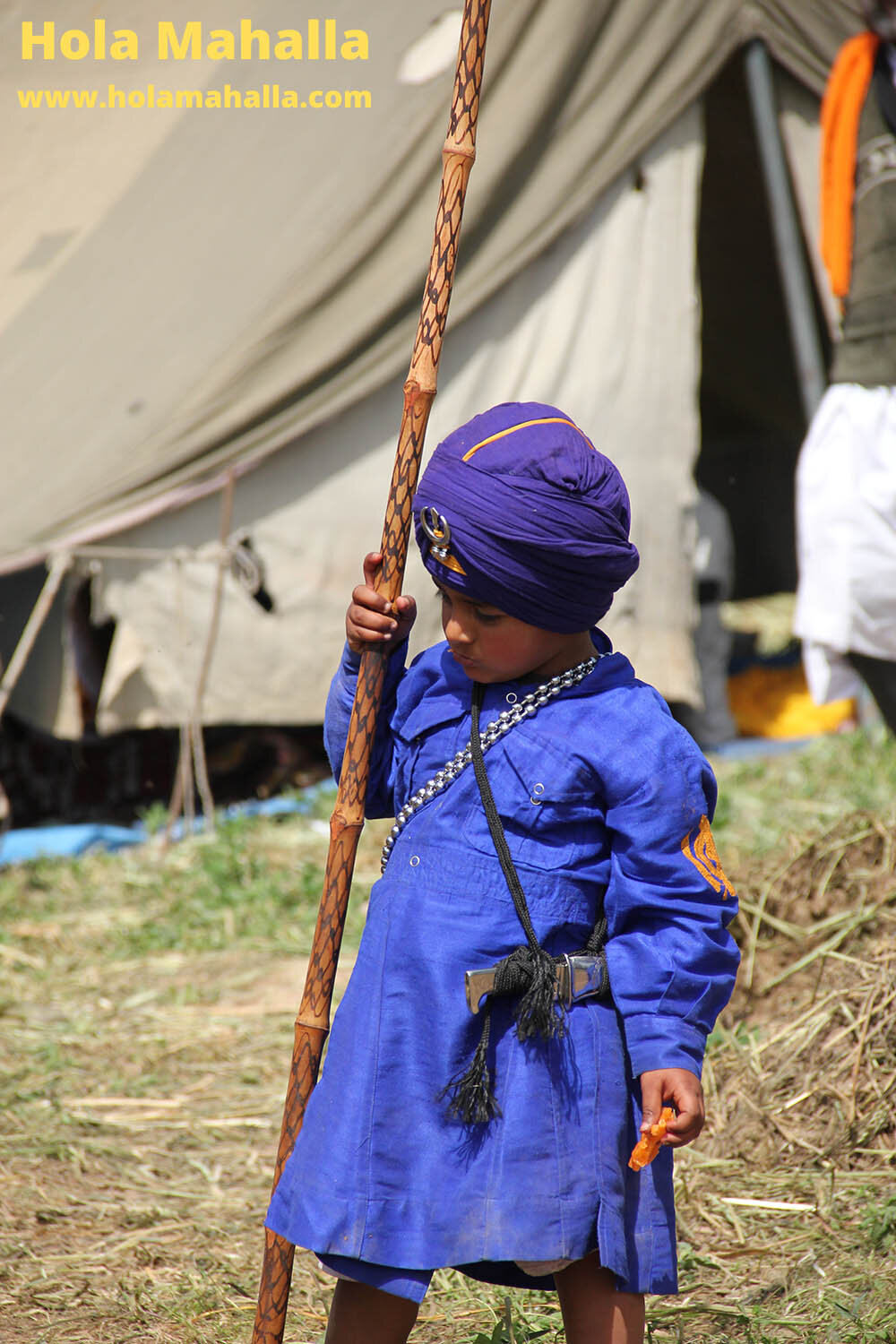
Gatka at the Nihang Dehrae


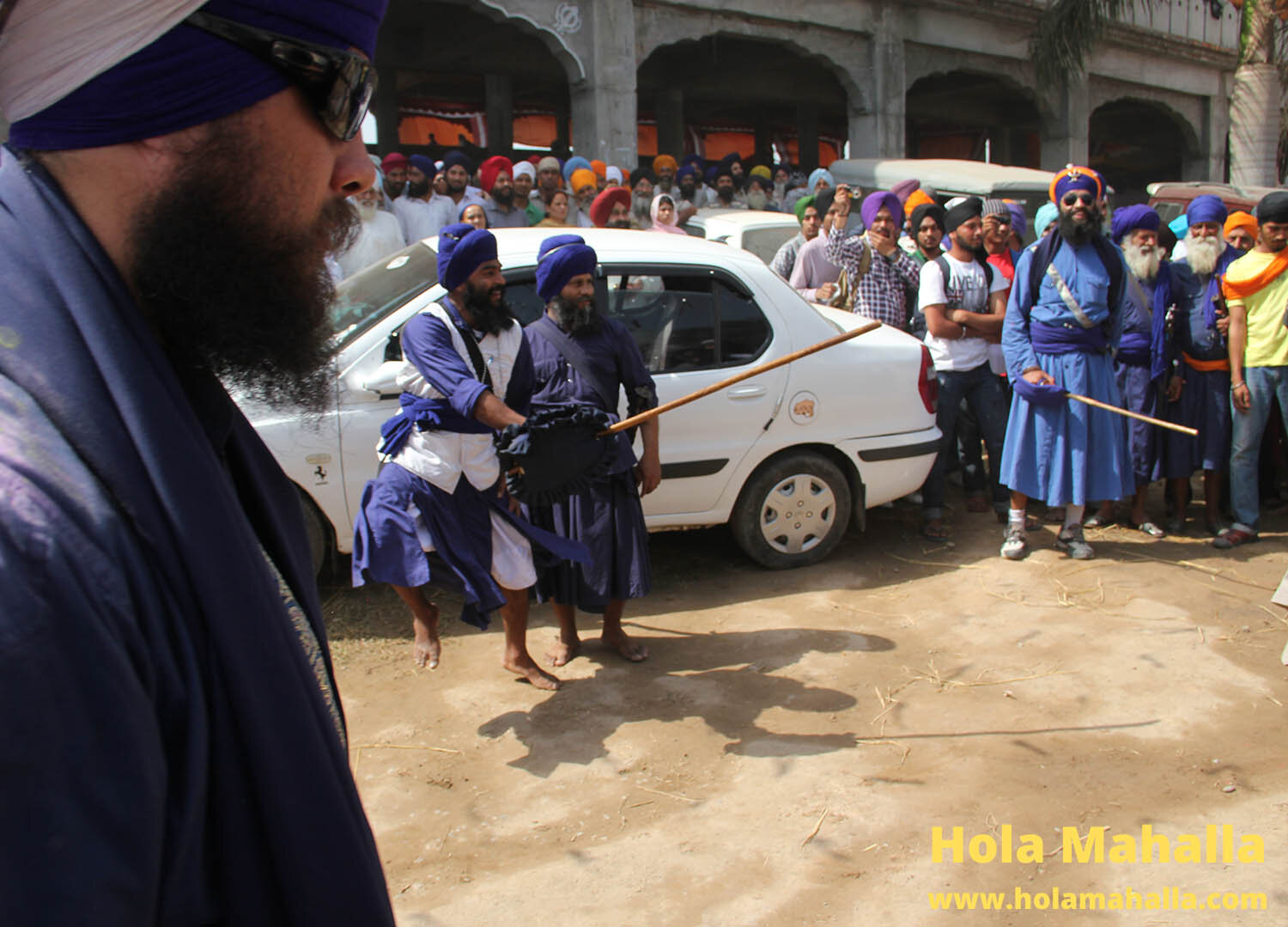
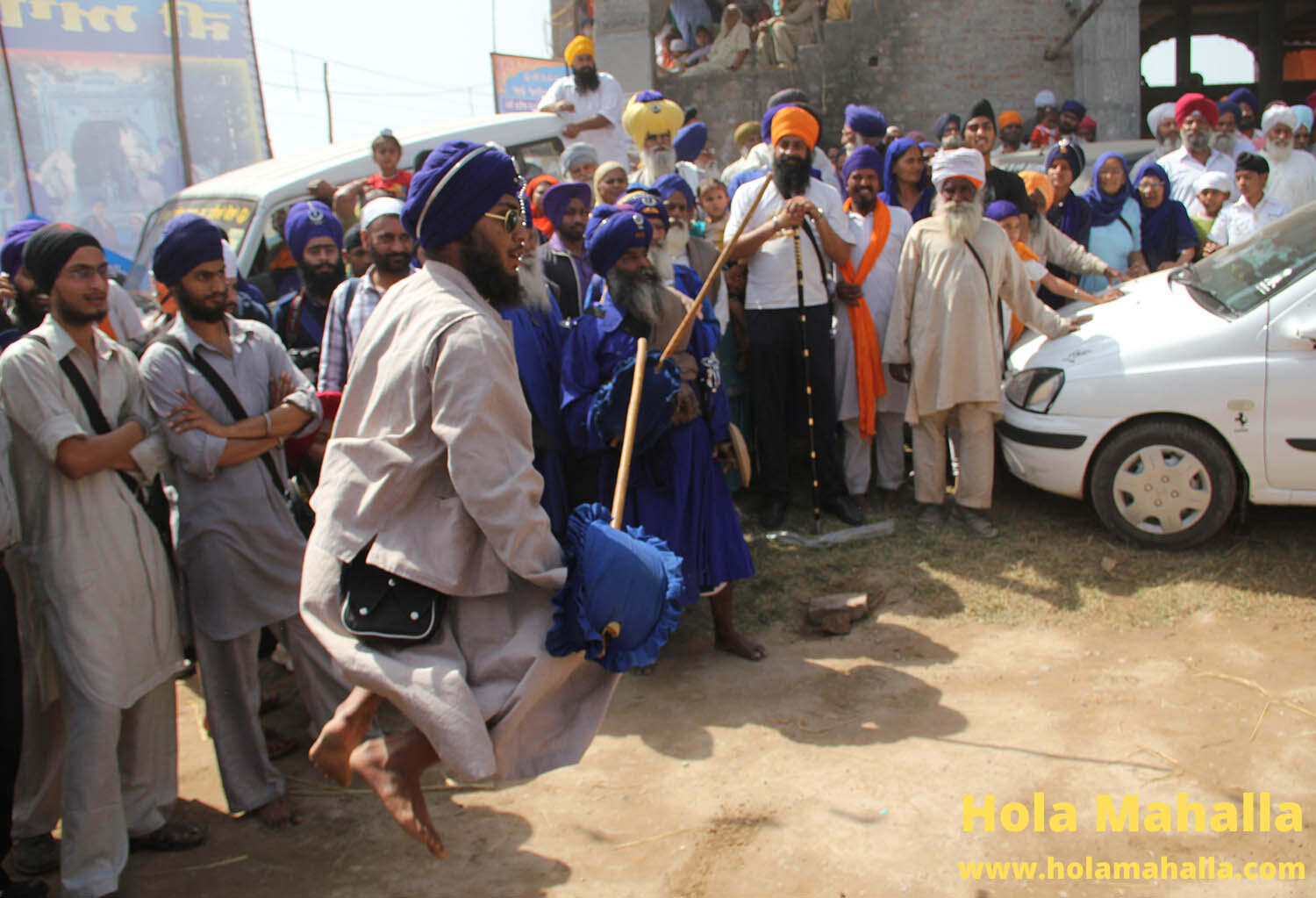

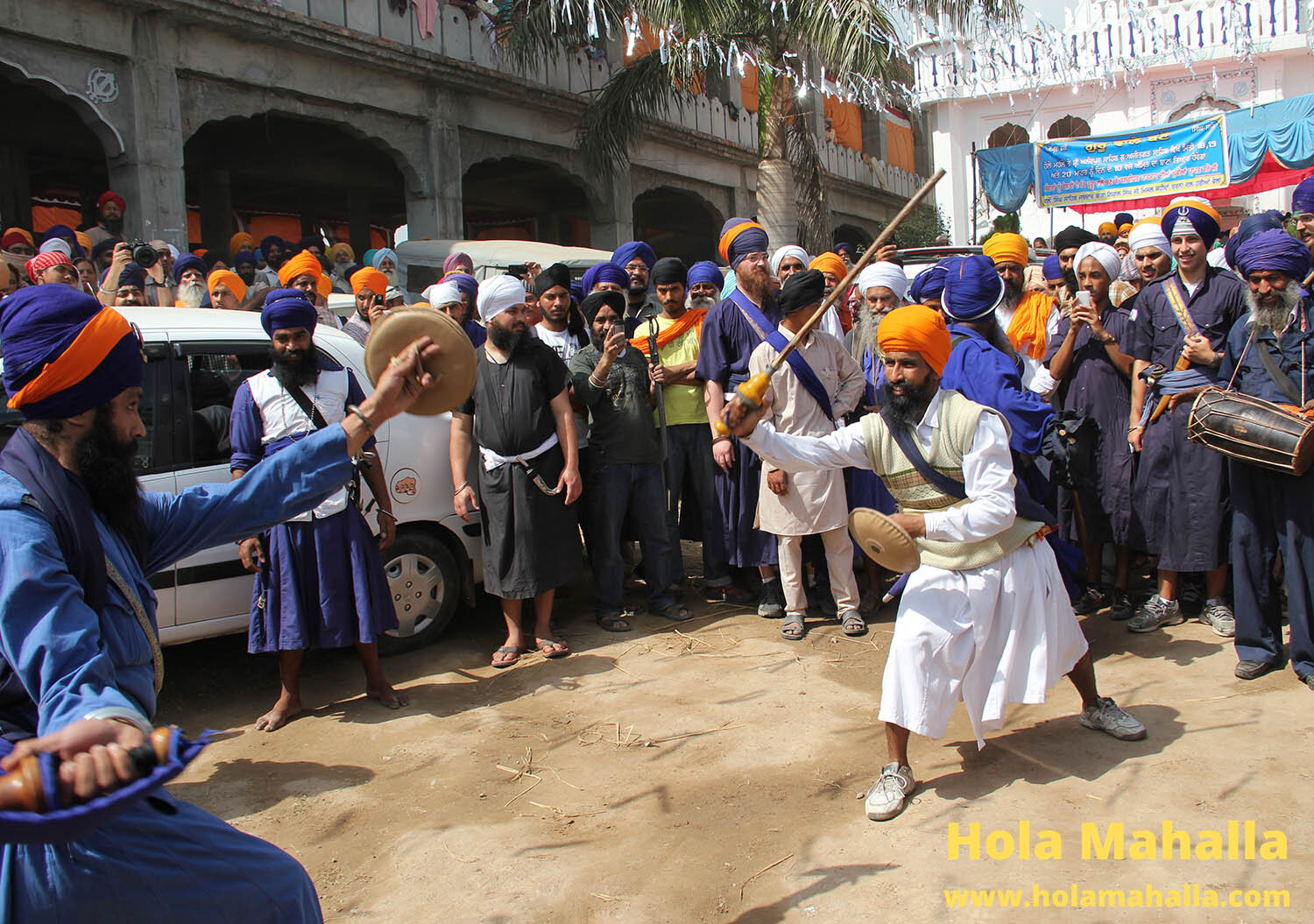


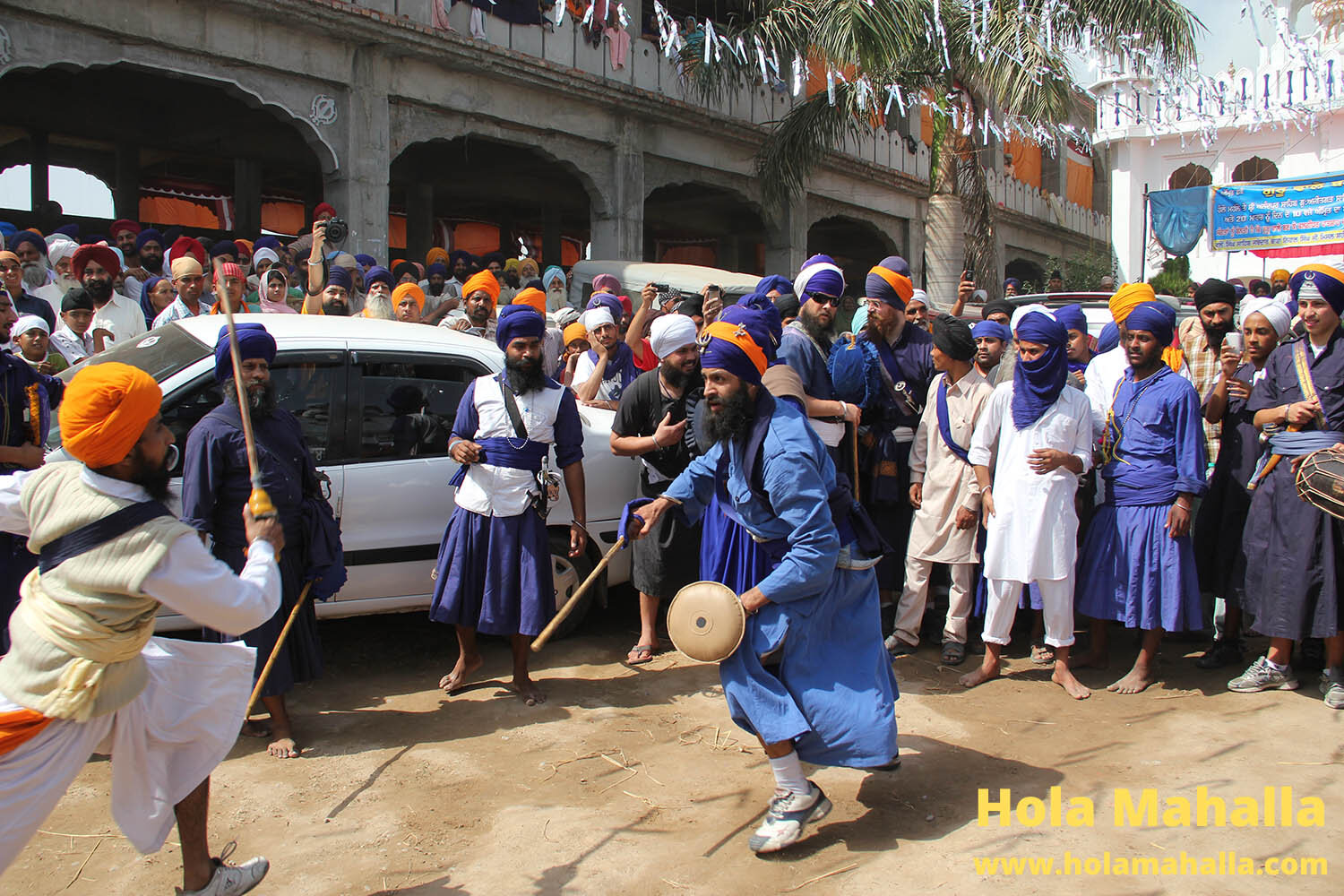
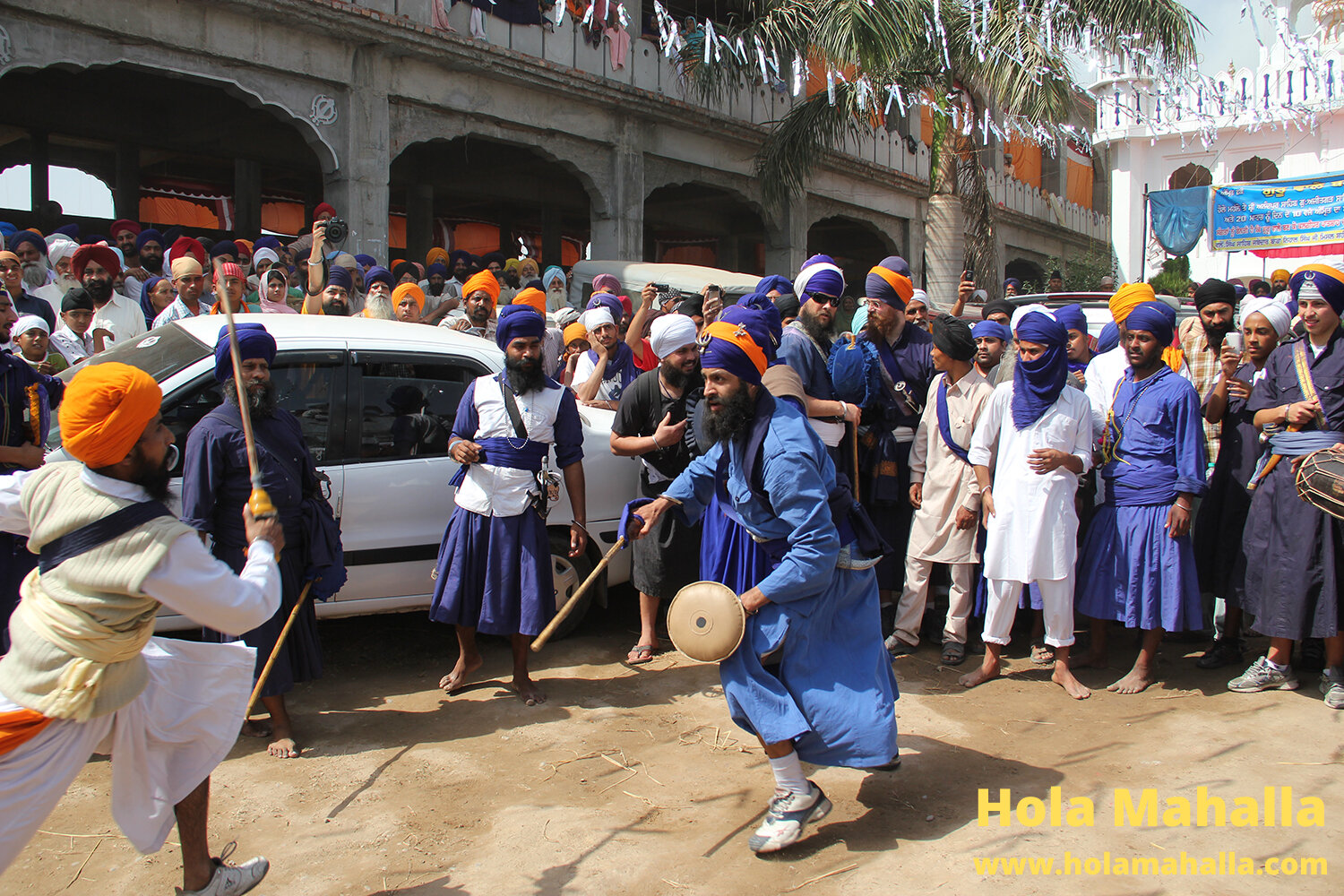
Nagar Kirtan - Procession
Wearing electric blue, the Nihangs warriors form the vanguard of the procession. Nihangs are part of an historic military order, and their seniority is shown by the farlah, an extra piece of cloth dangling off the top of their turbans. They ride horses while the rest of the procession is on foot.
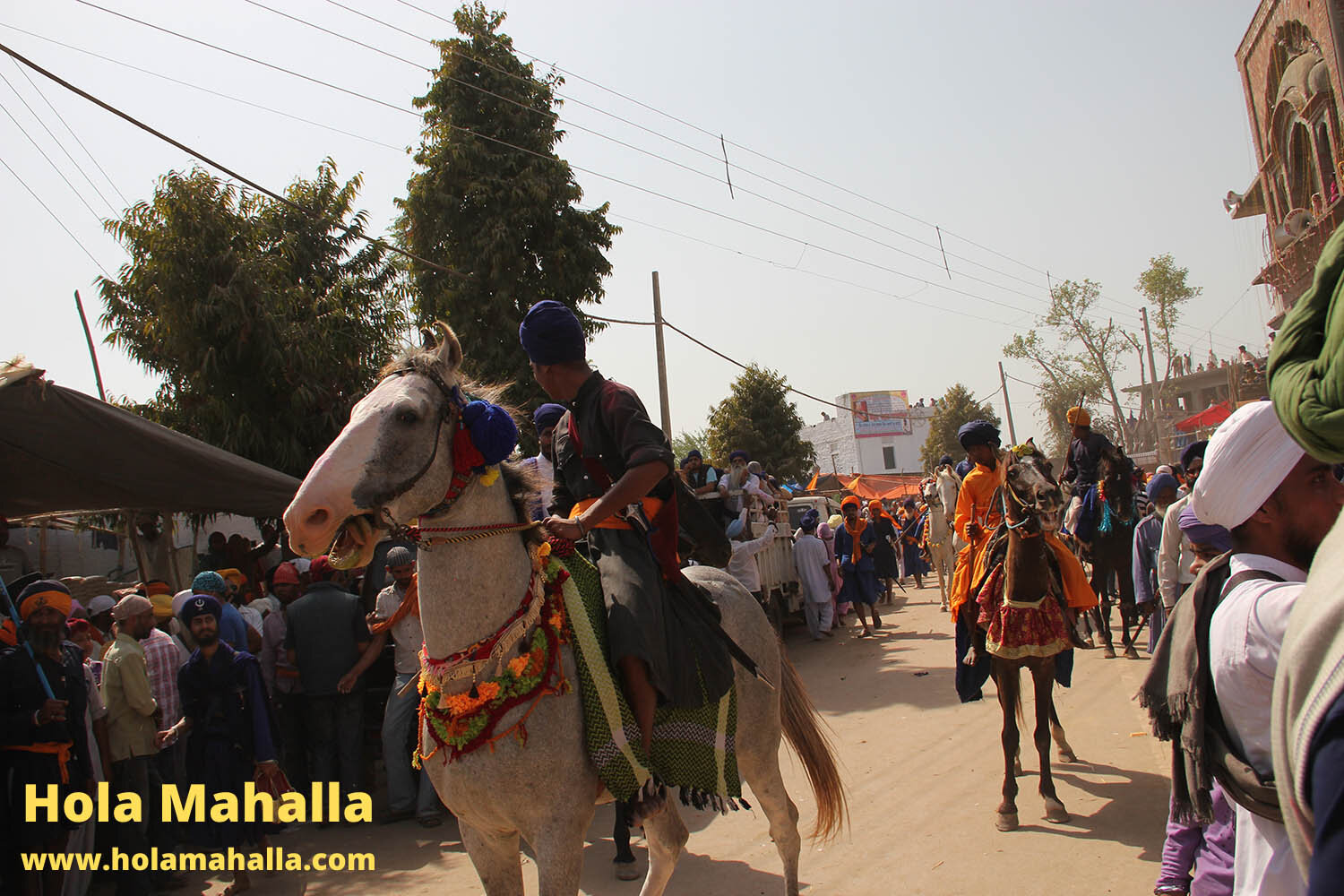
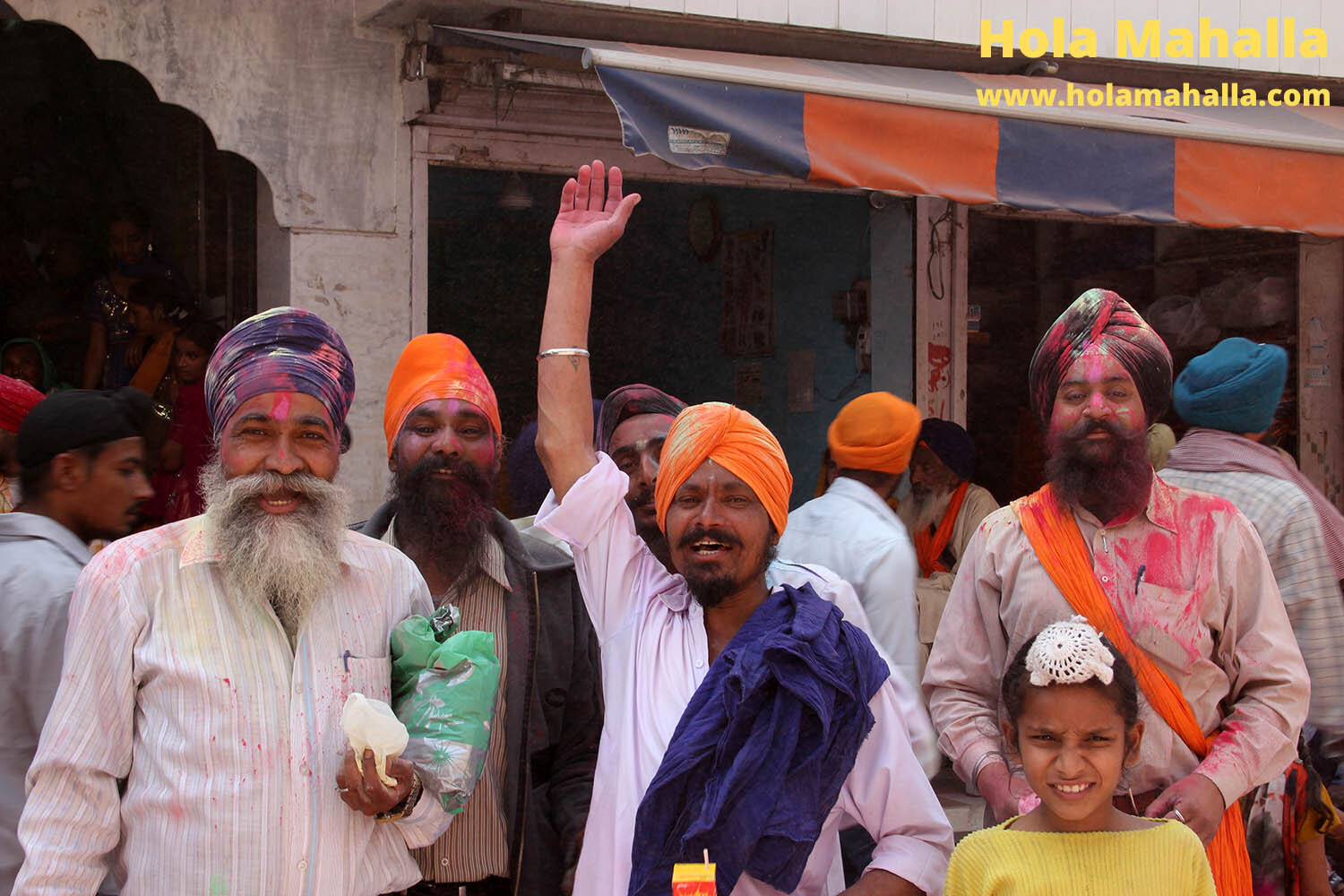
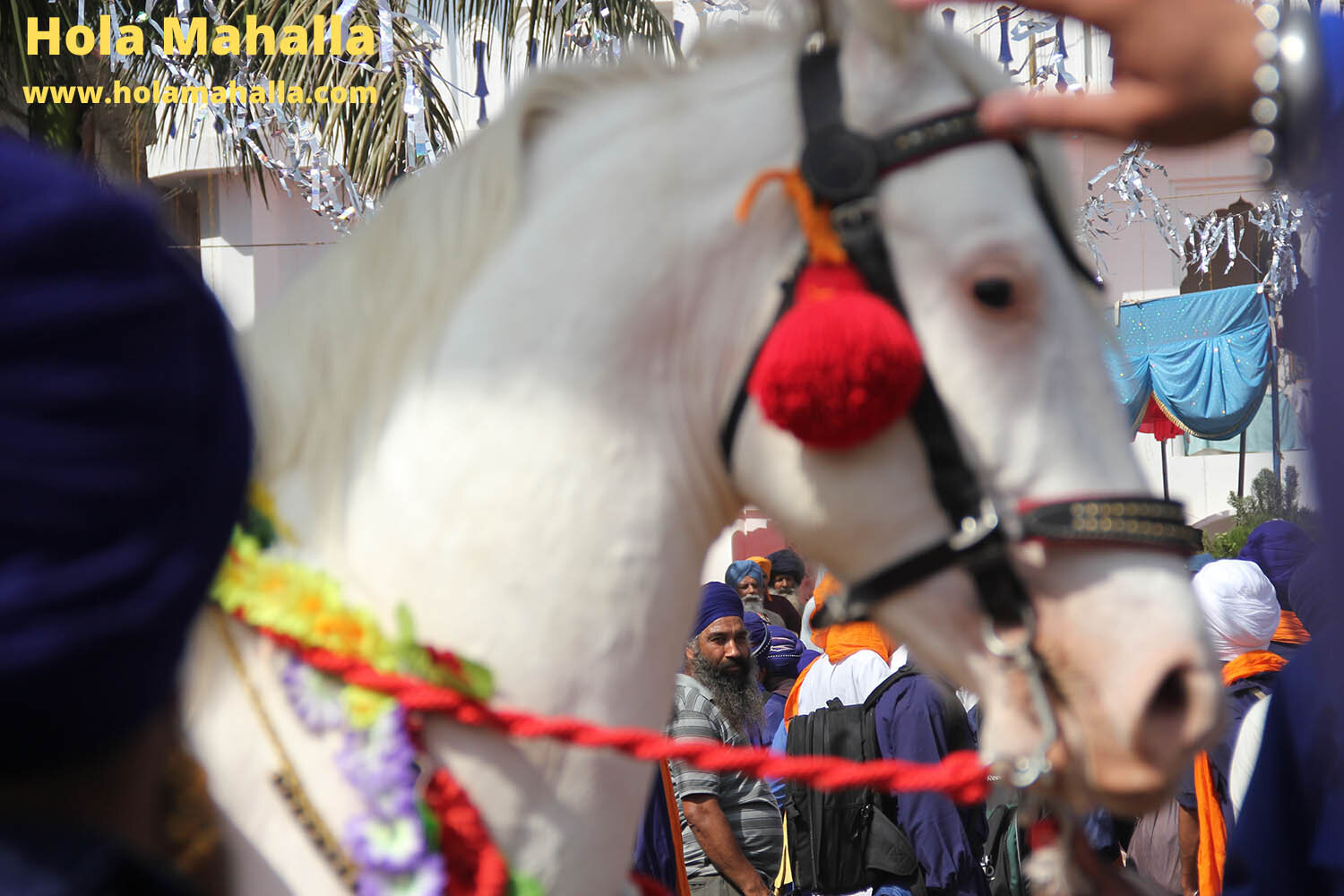
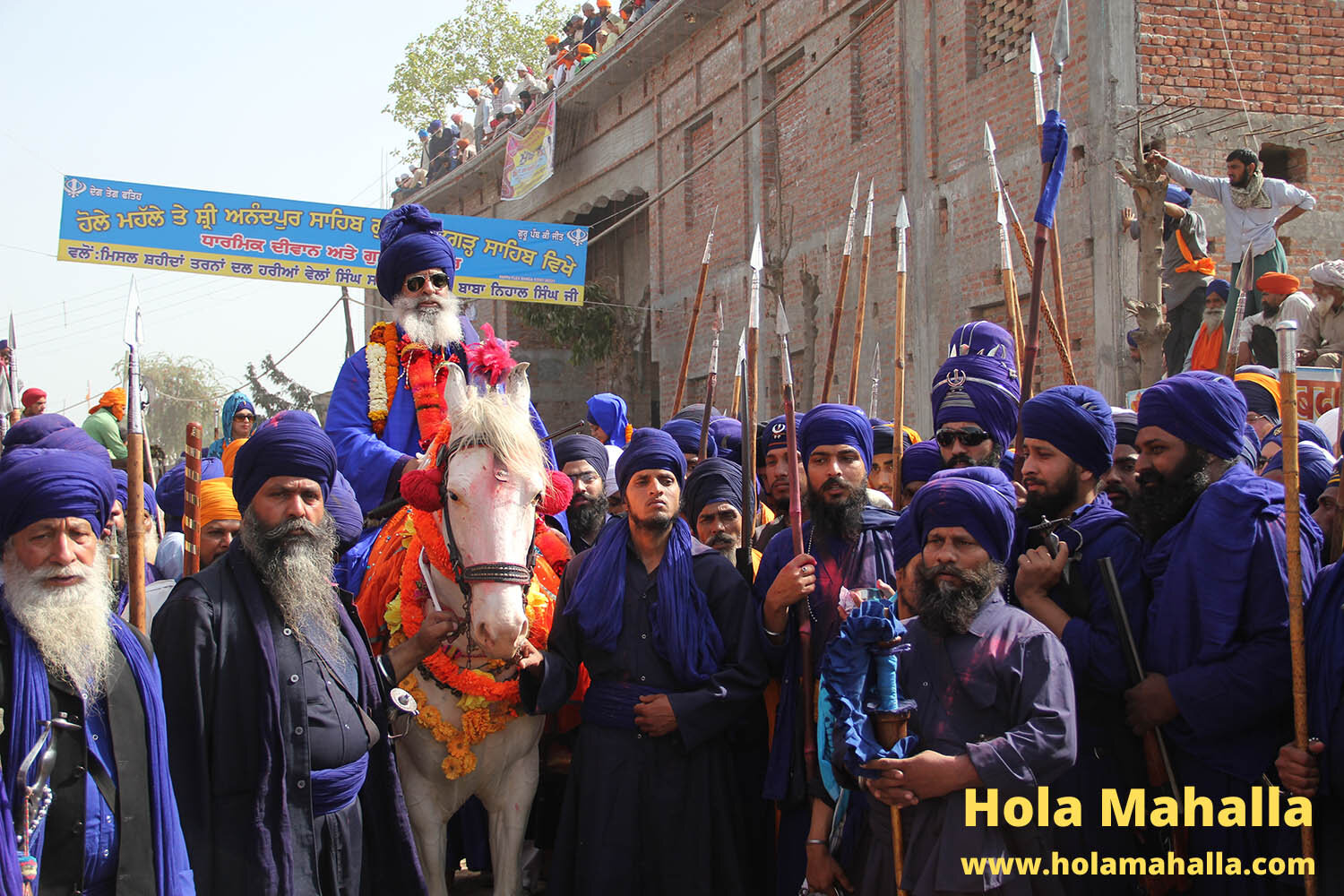

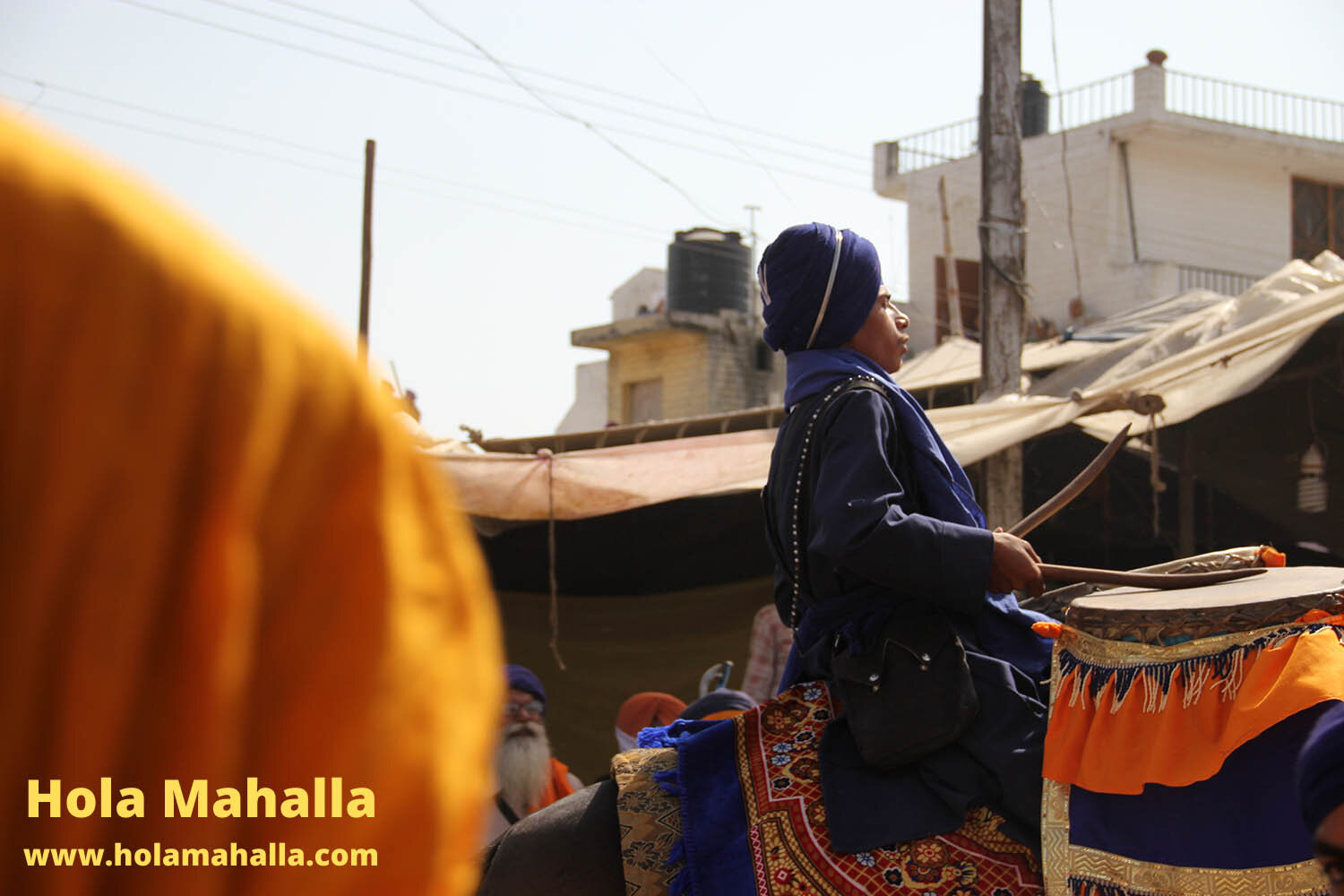
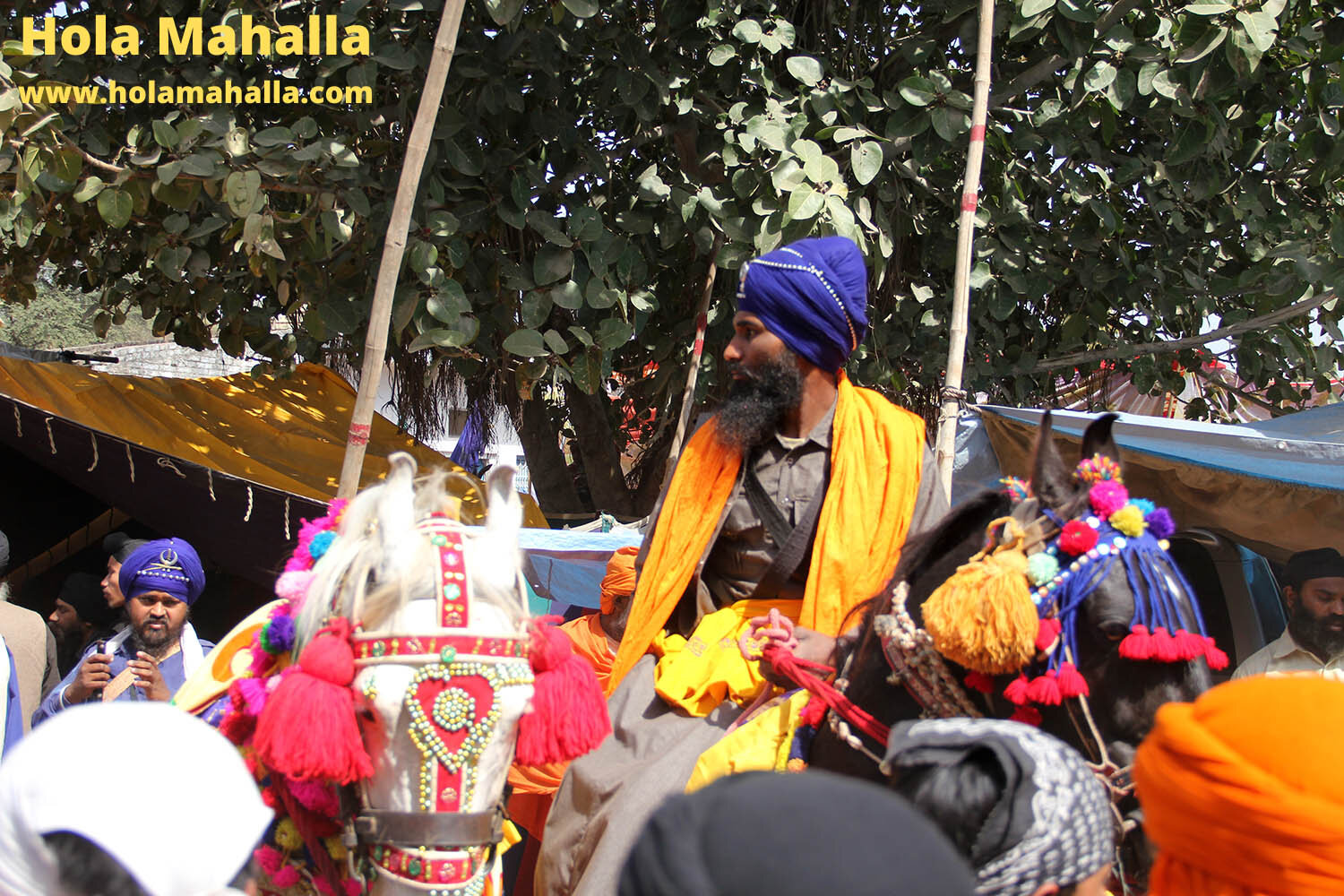
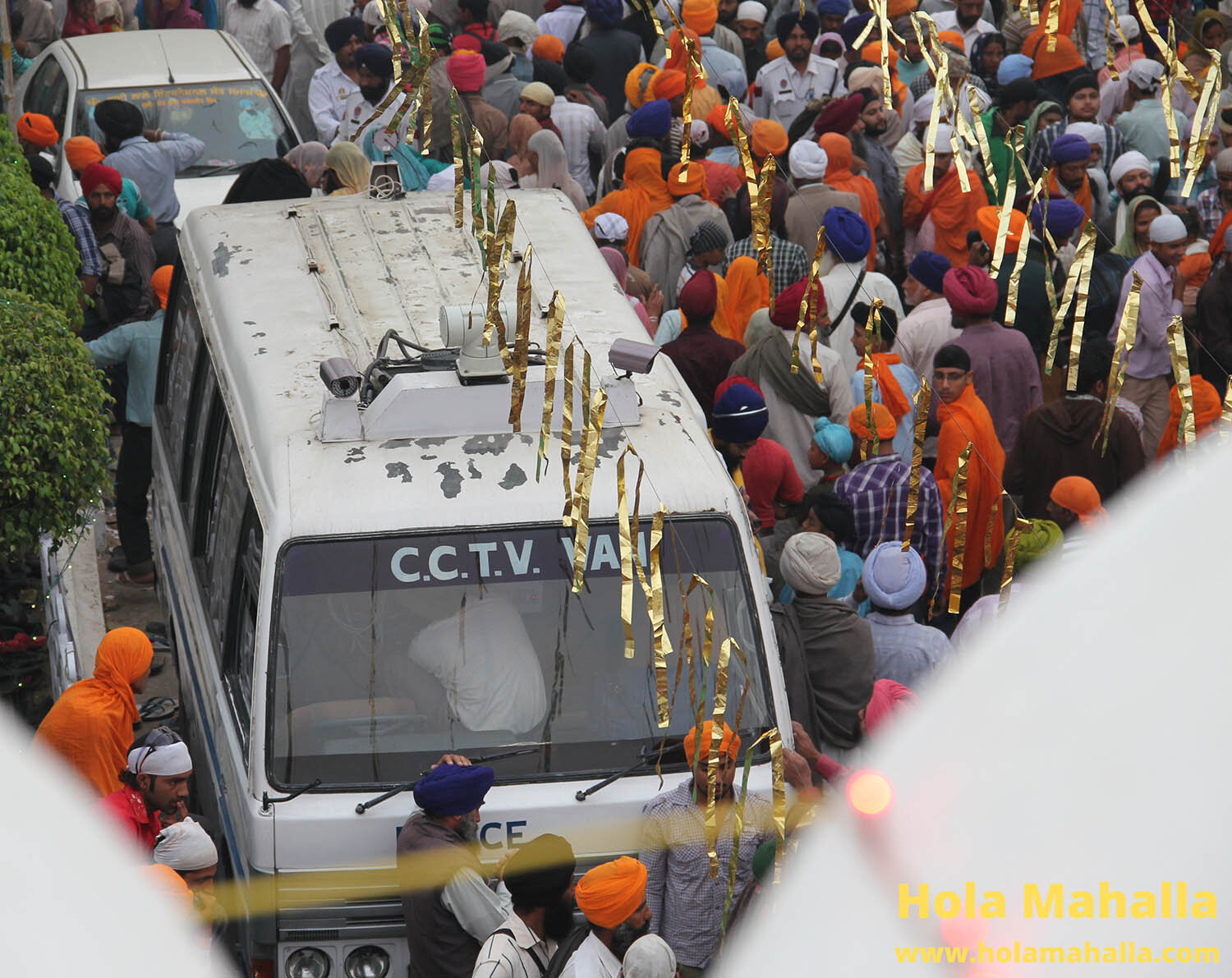
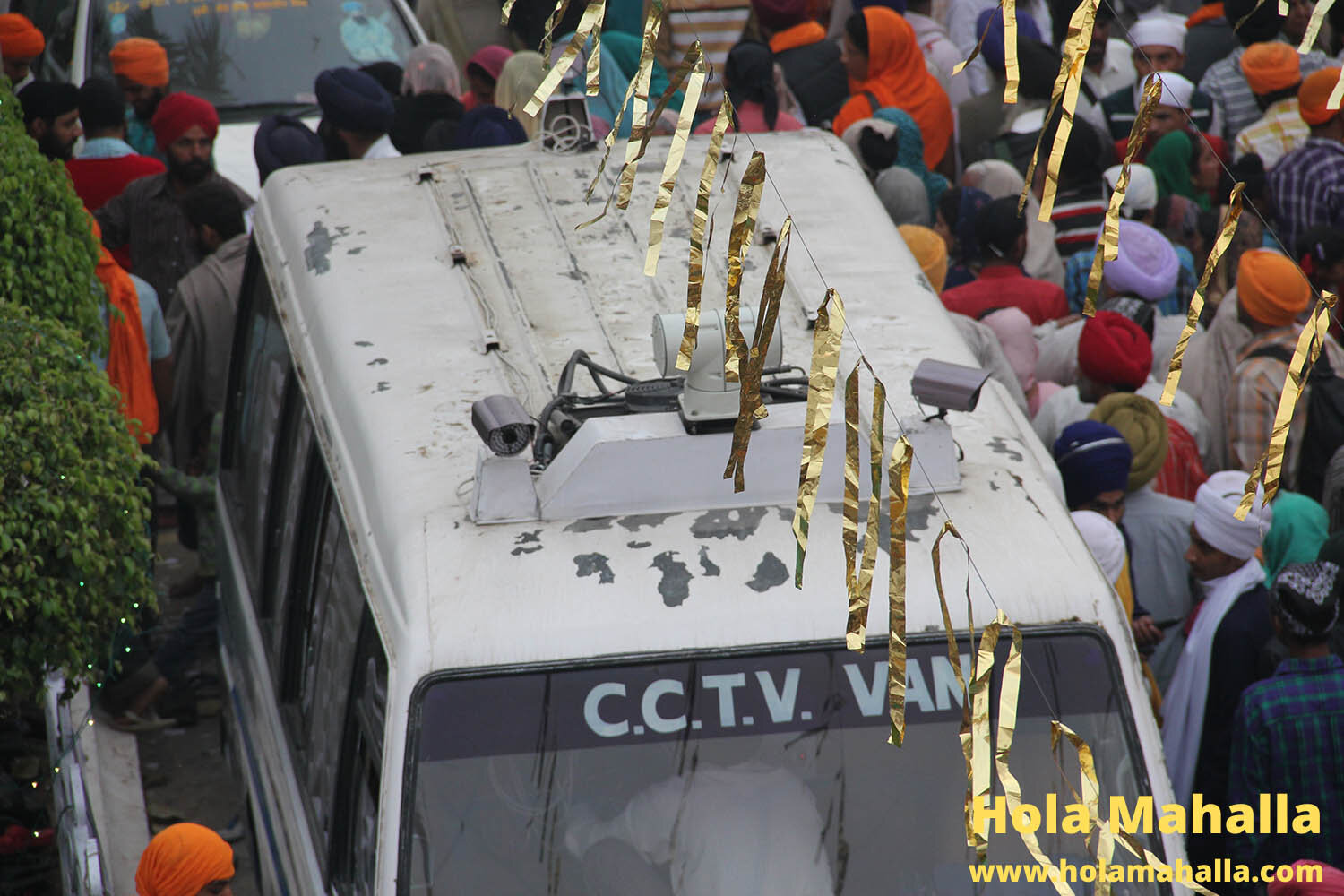
Hola Mahalla and Holi
Hola Mahalla happens a day after Holi. Whilst not strictly part of the Sikh religious festival, throwing colour at each other is embraced by some. Hola Mahalla takes place a day after the Hindu festival of colour Holi. As both festivals originate from and are celebrated in India, there is some cross cultural pollenisation.
main event
Arriving at the ground
As people get to the ground, they find somewhere to either sit or stand and observe the events from where ever they can.
The Nihangs filter through the entrance of the stadium and charge like one big Sikh army. They gather together in the middle of the ground whilst spectators patiently wait for their arrival.
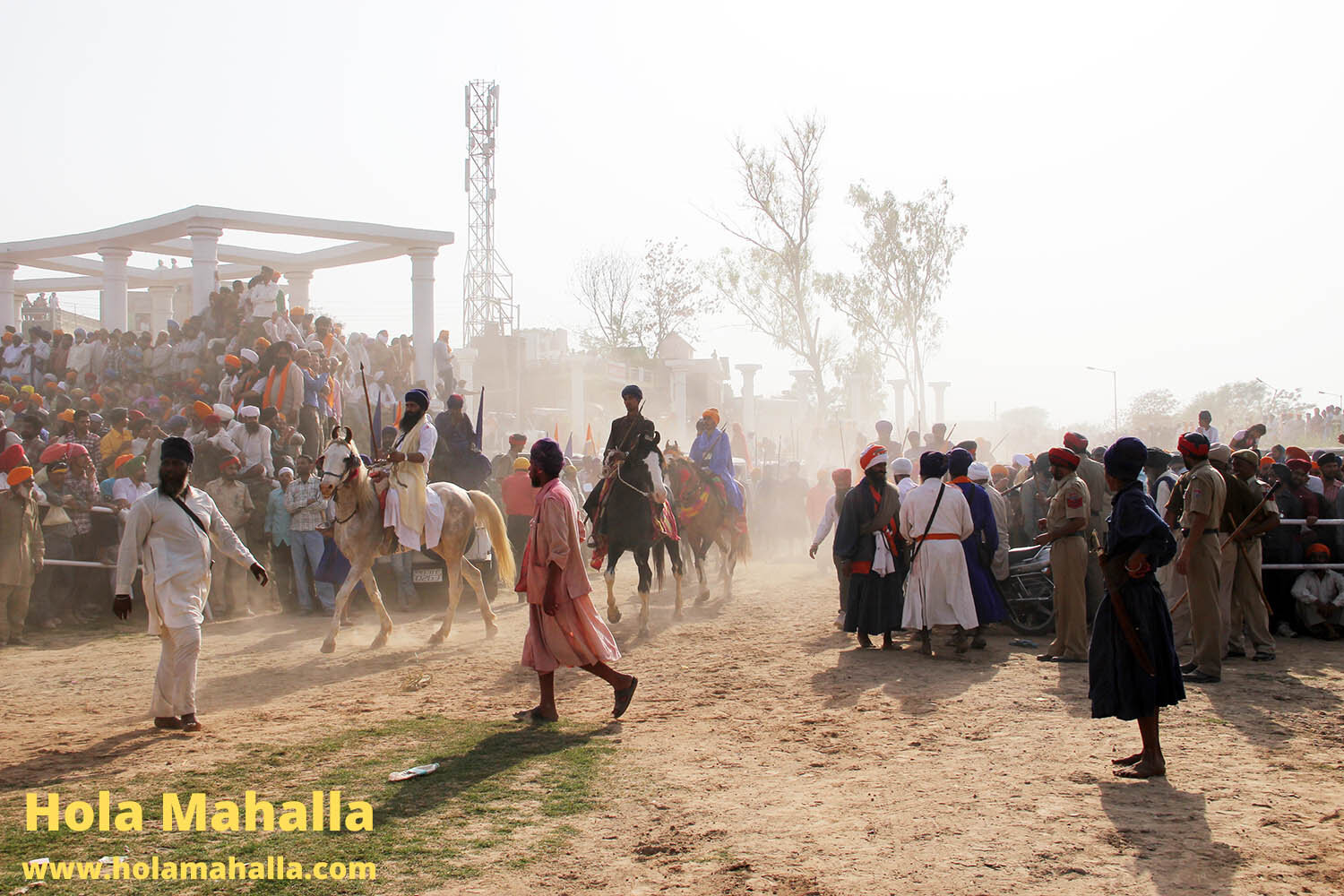
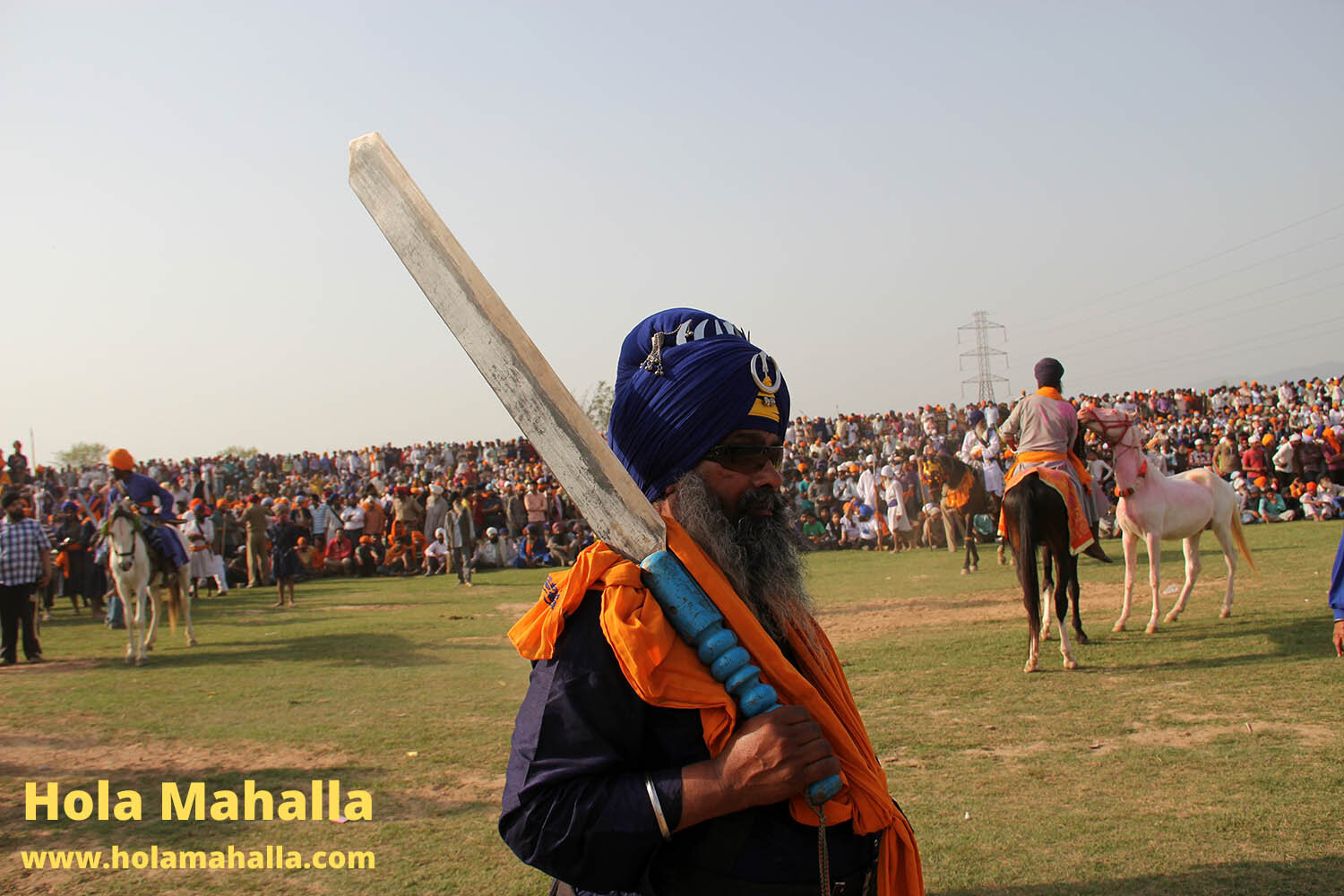
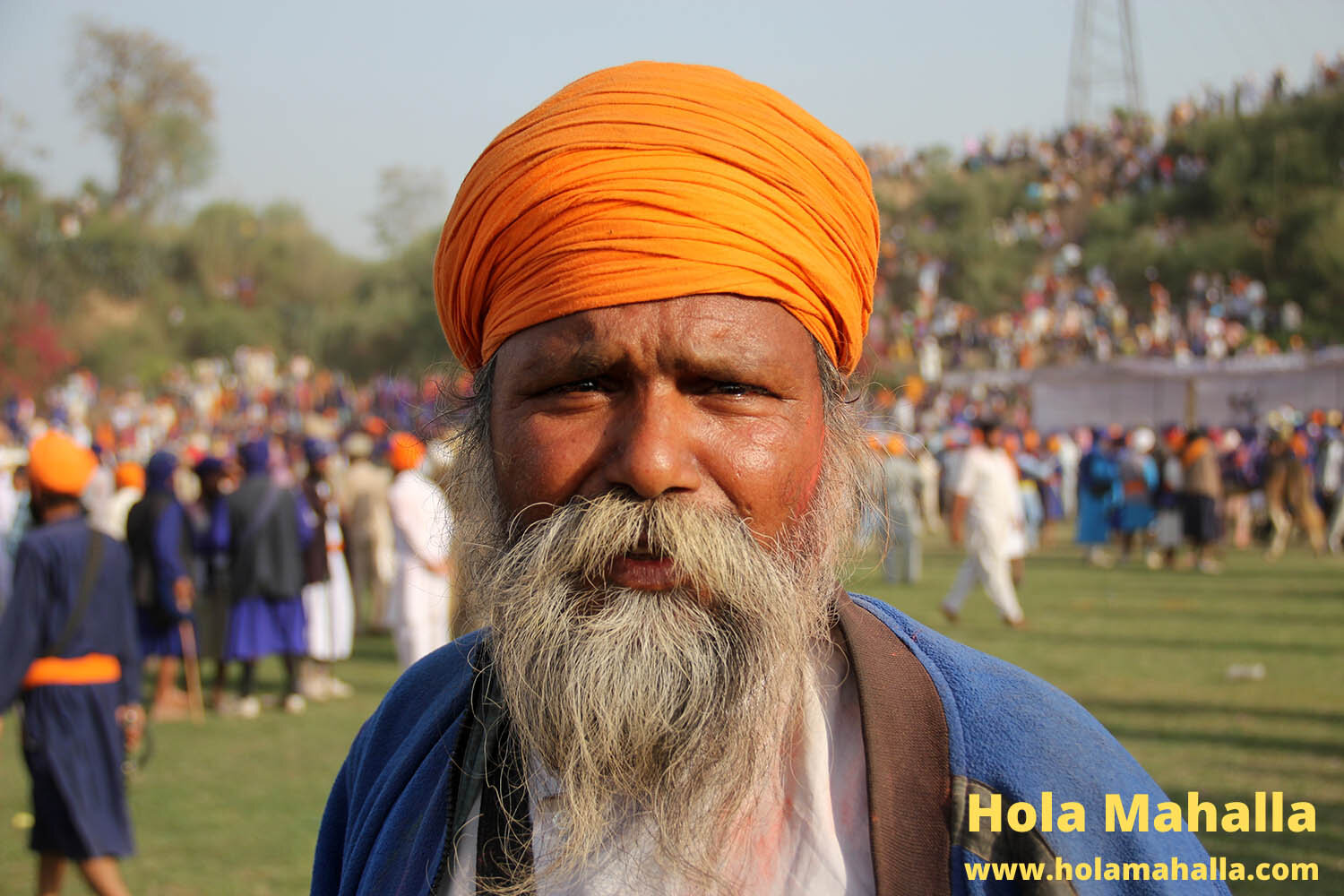
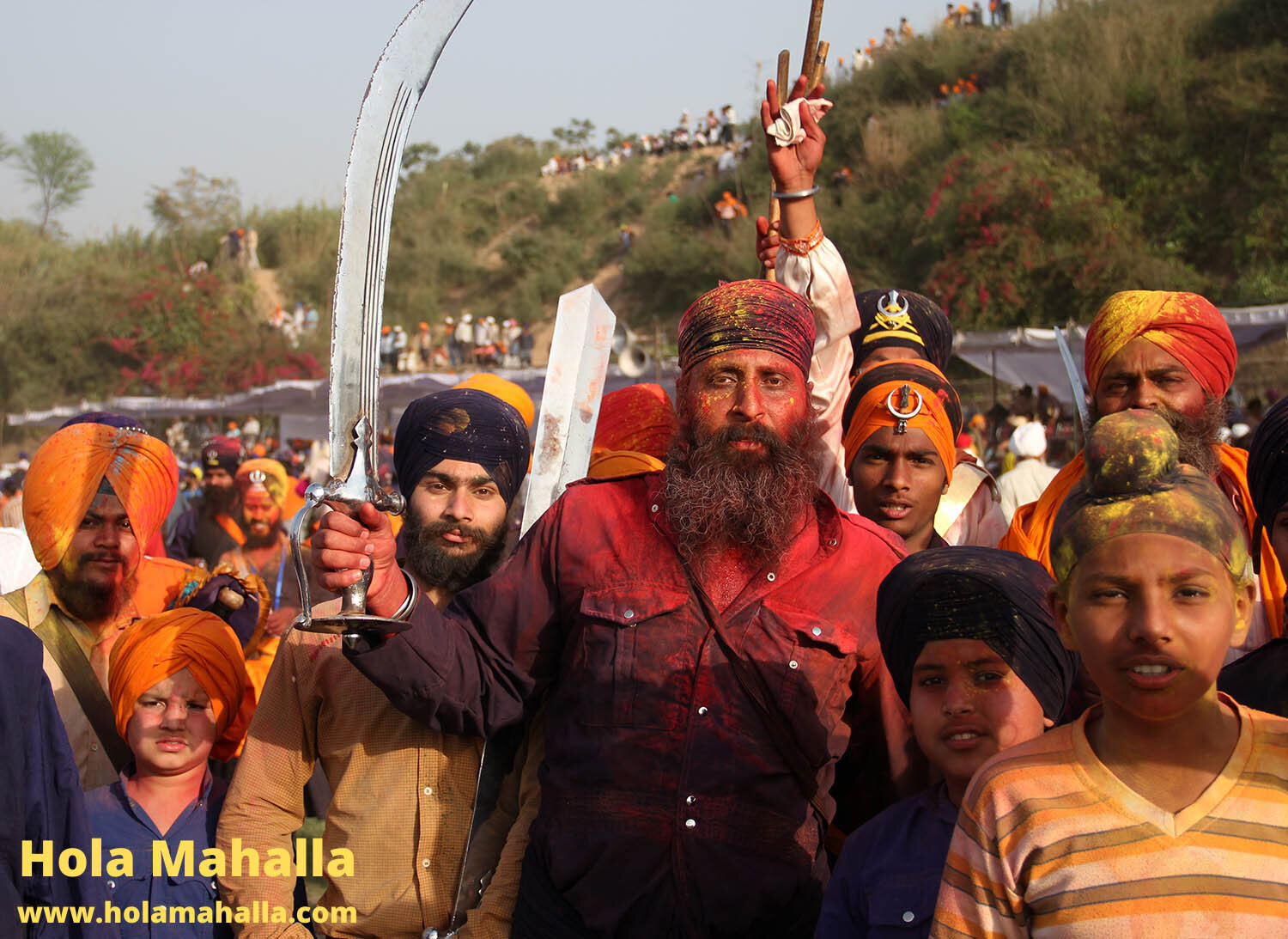

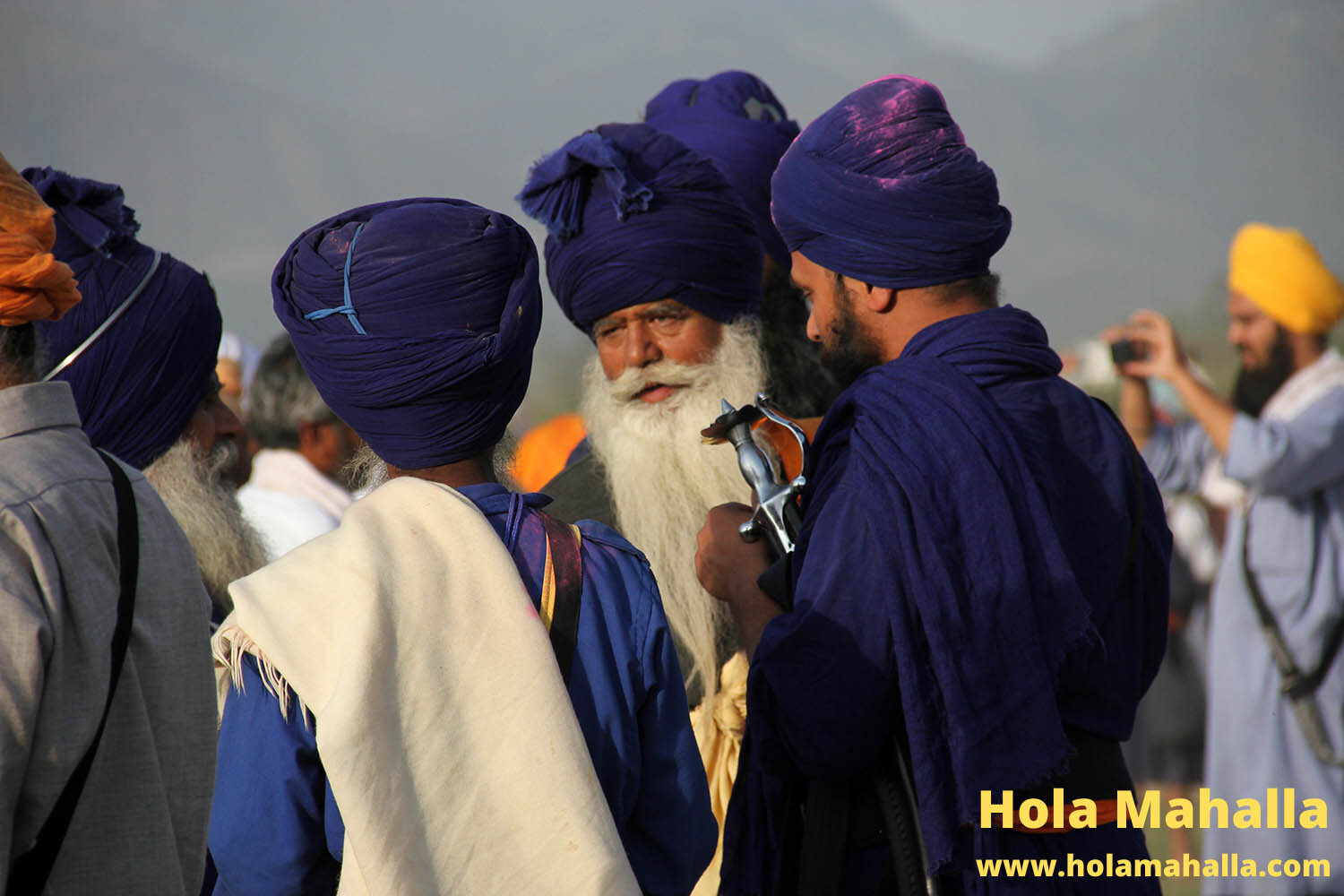
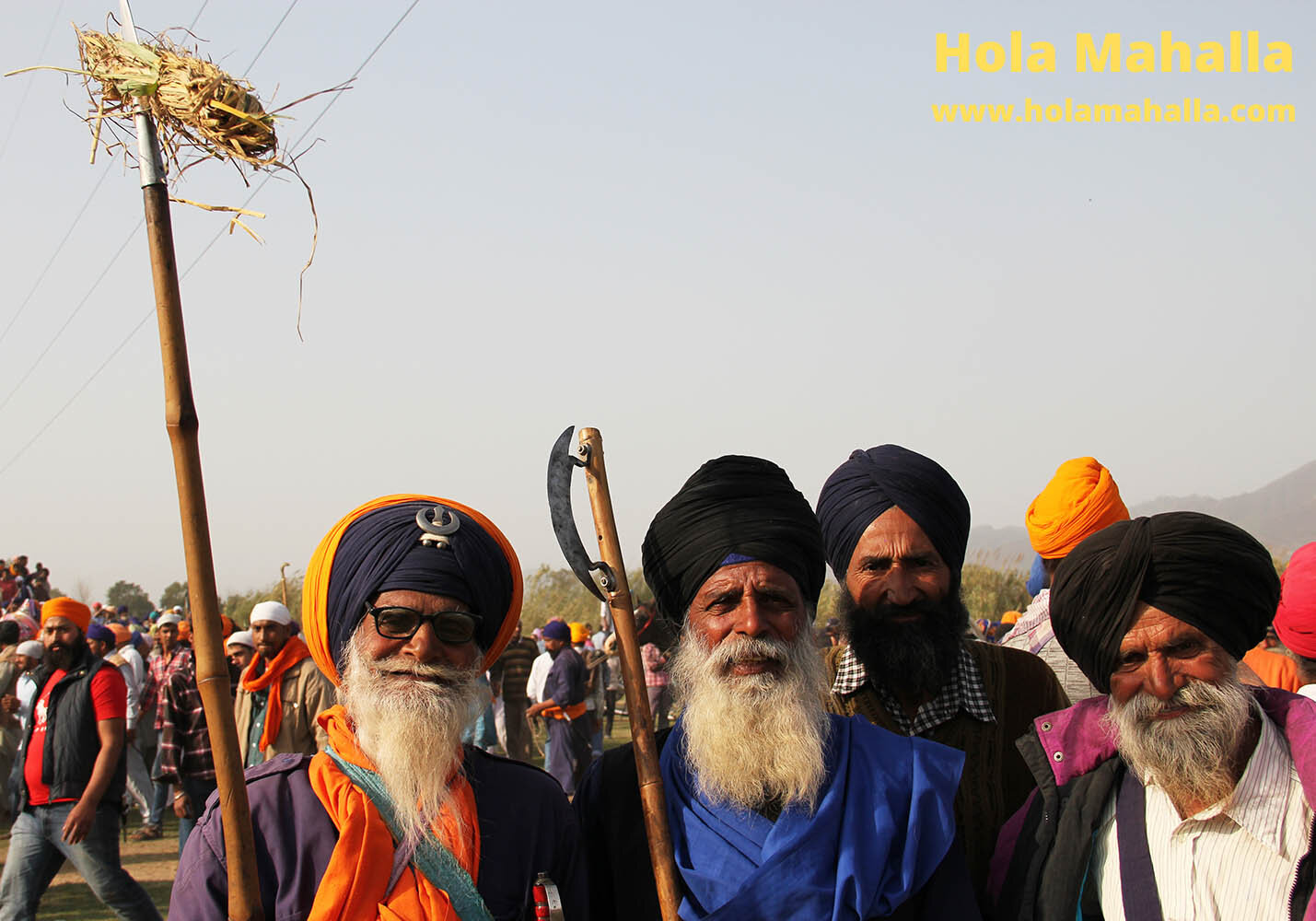
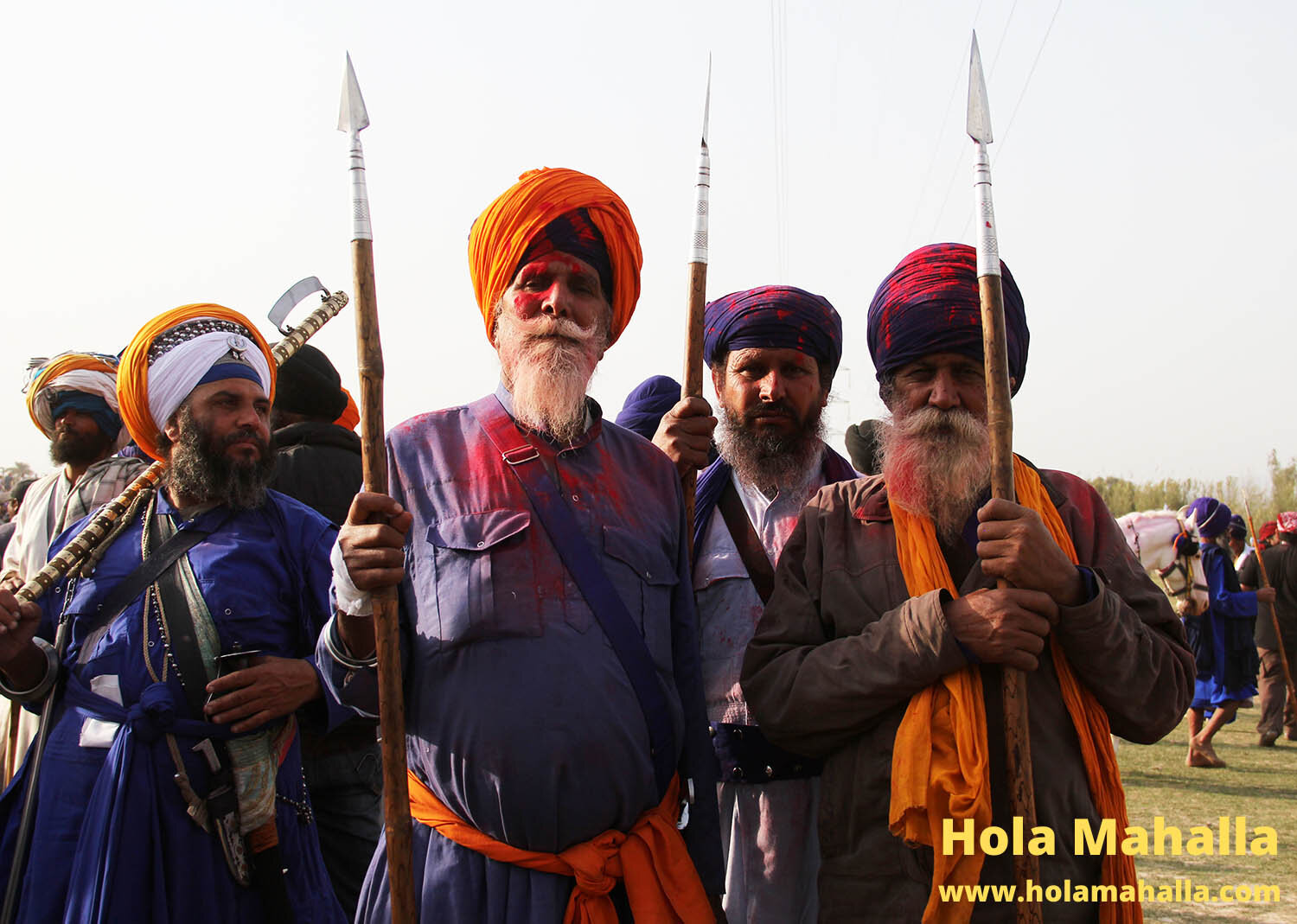
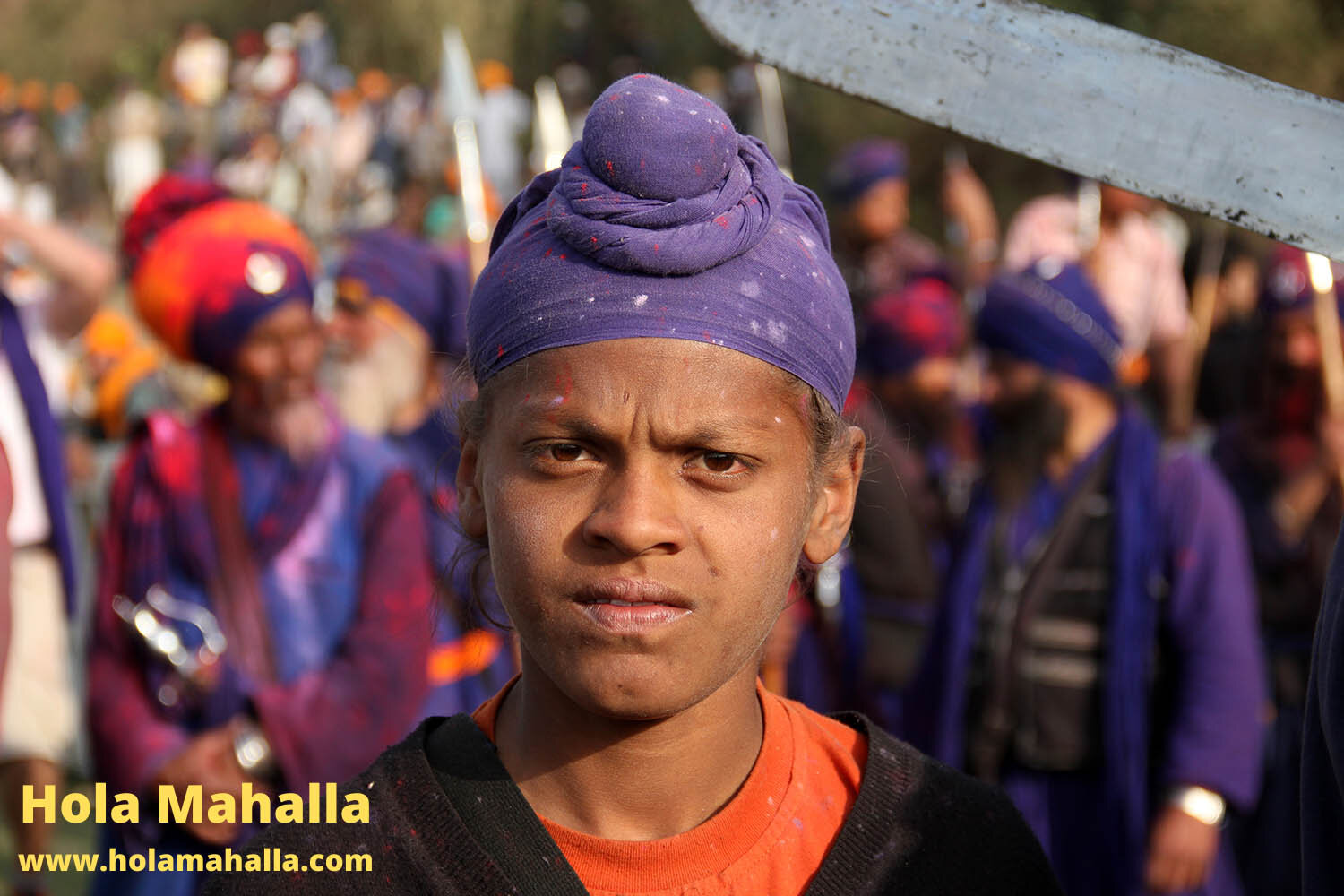
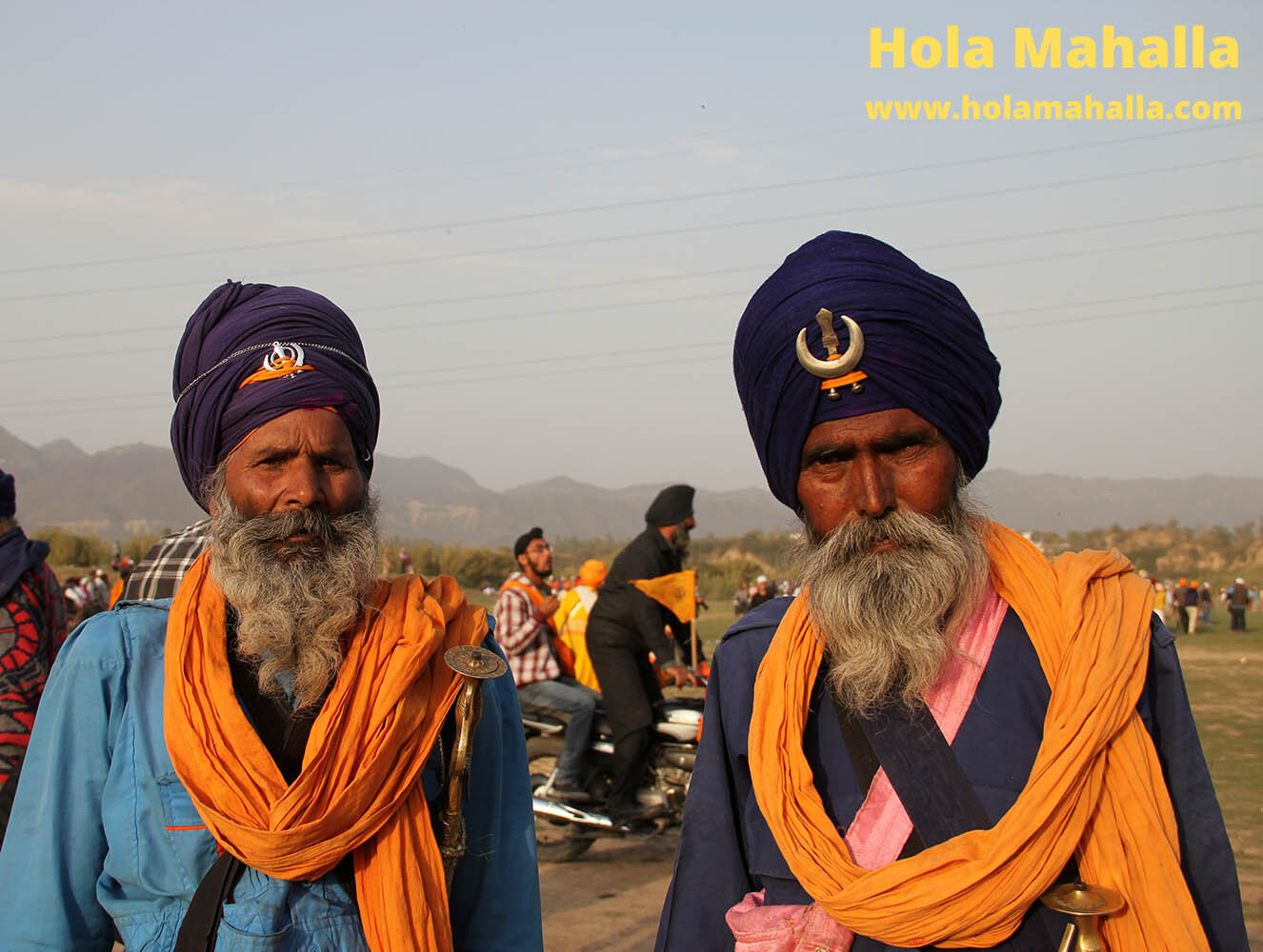
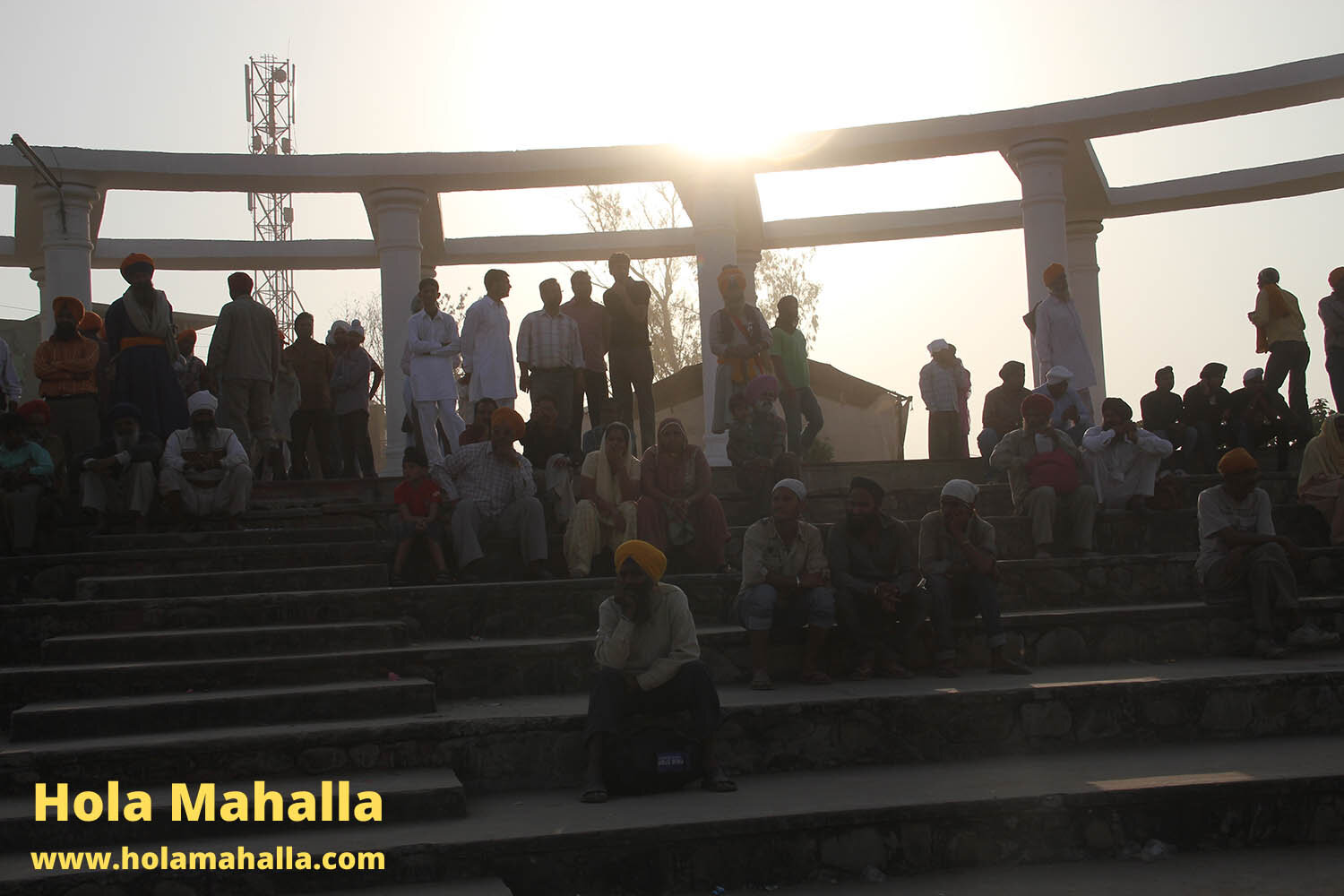
Horses
Here we can see Singhs standing on their horse whilst it is stationary.
It is said that this technique was used in the past during battles. Senior officials such as generals of the enemy would be on elephants and Sikhs would attempt to climb up the elephant by standing on their horse.
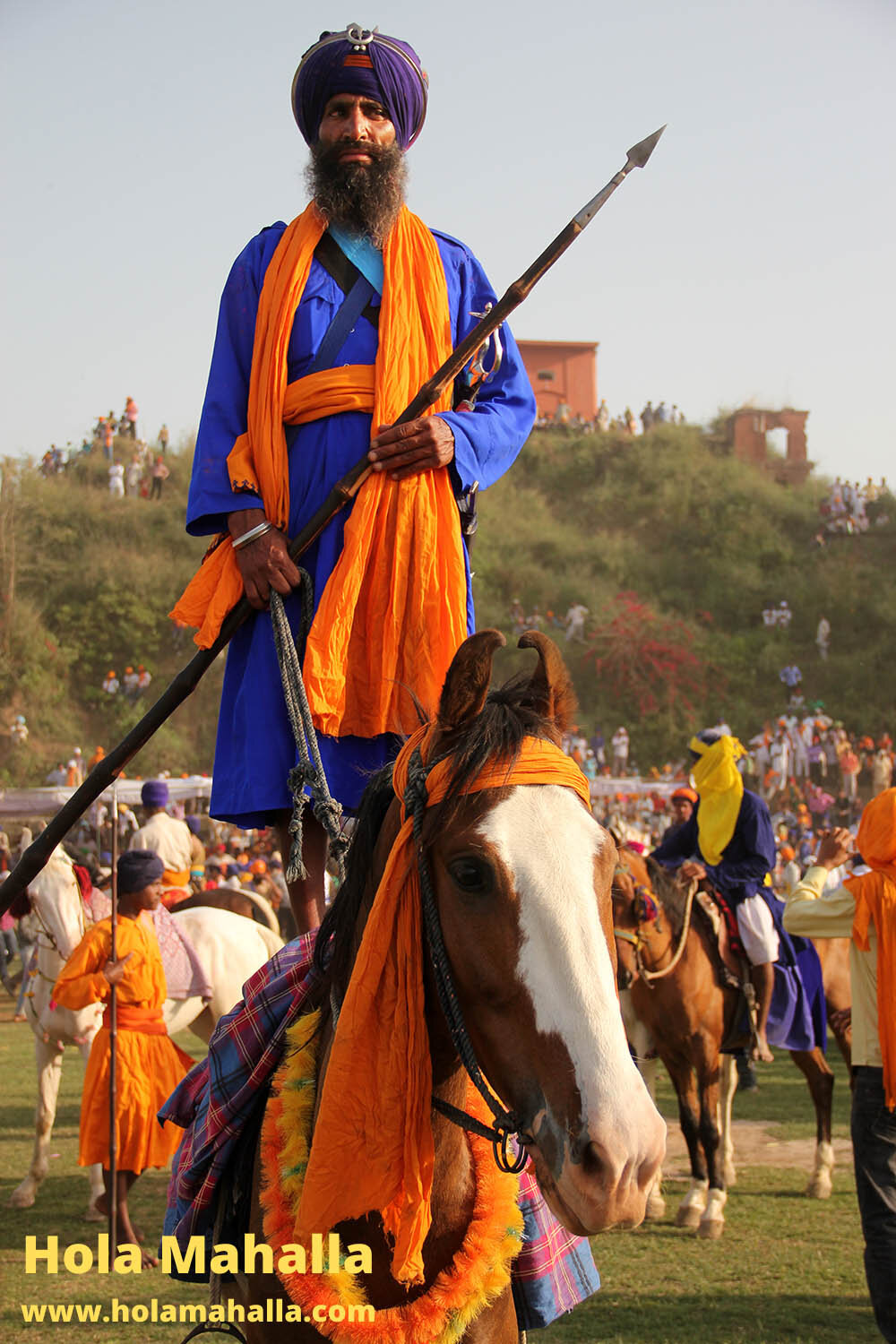
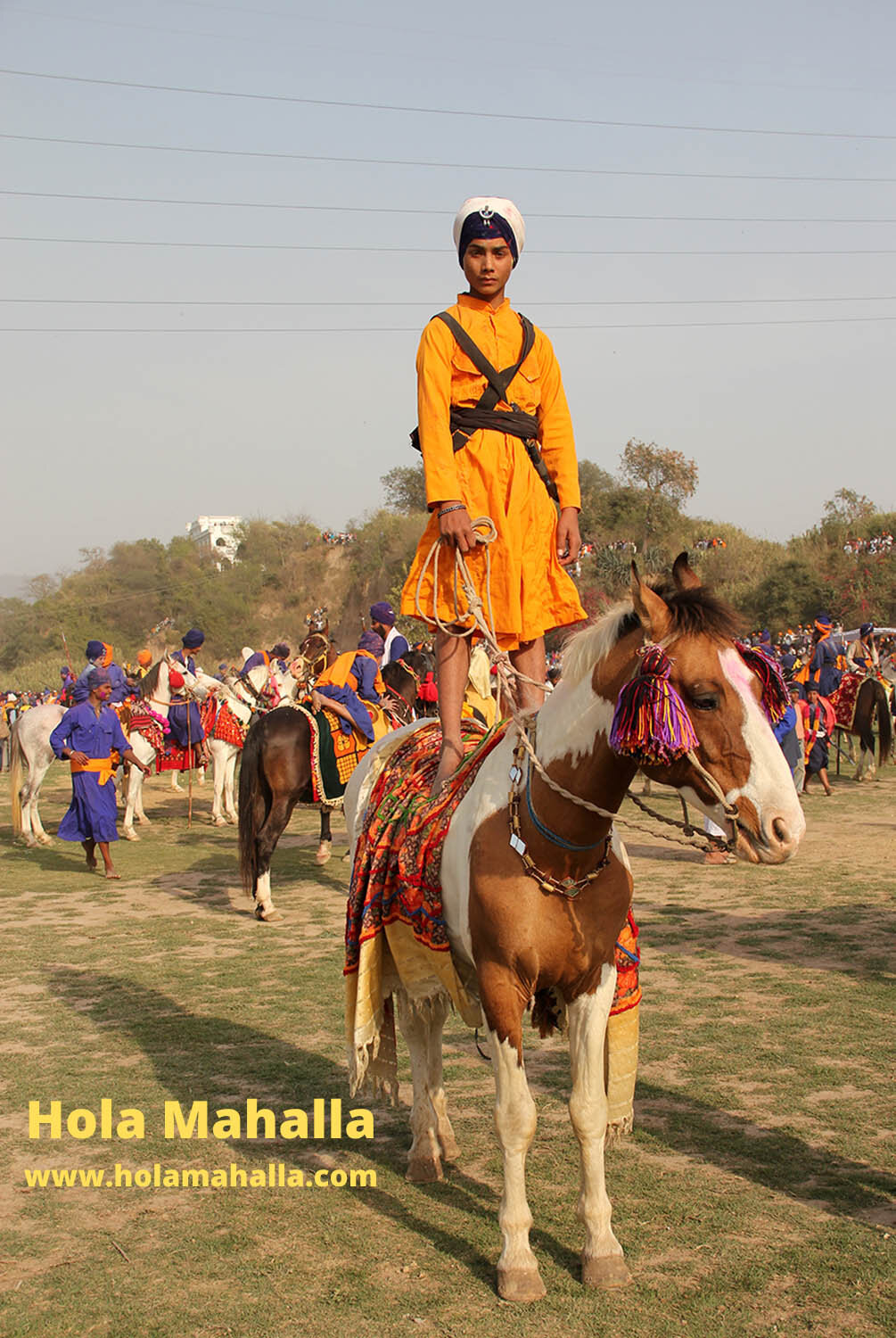
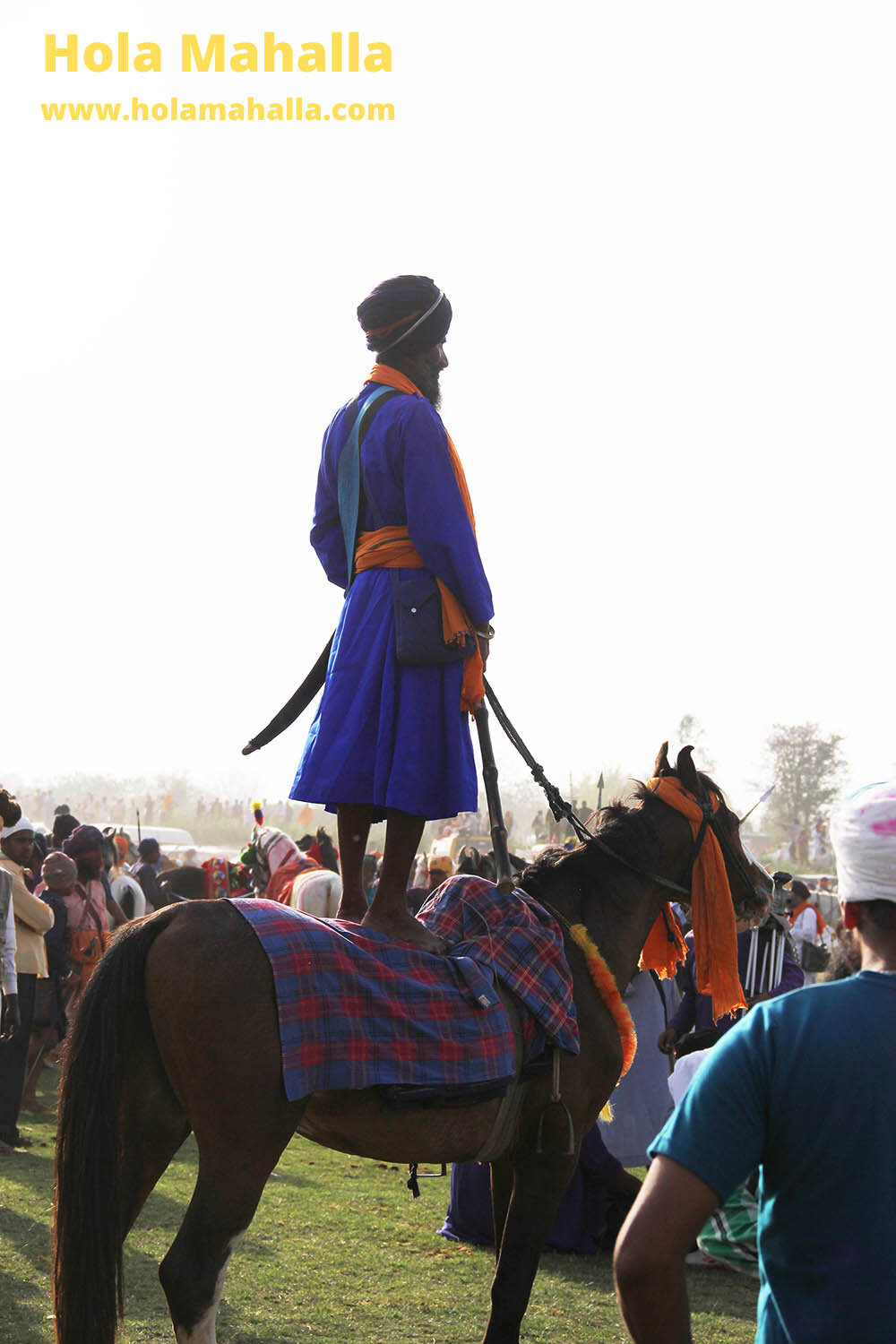
Most of the nomadic Nihangs love having their pictures taken and posing with their horses. As you can see horses are dressed with different colours.
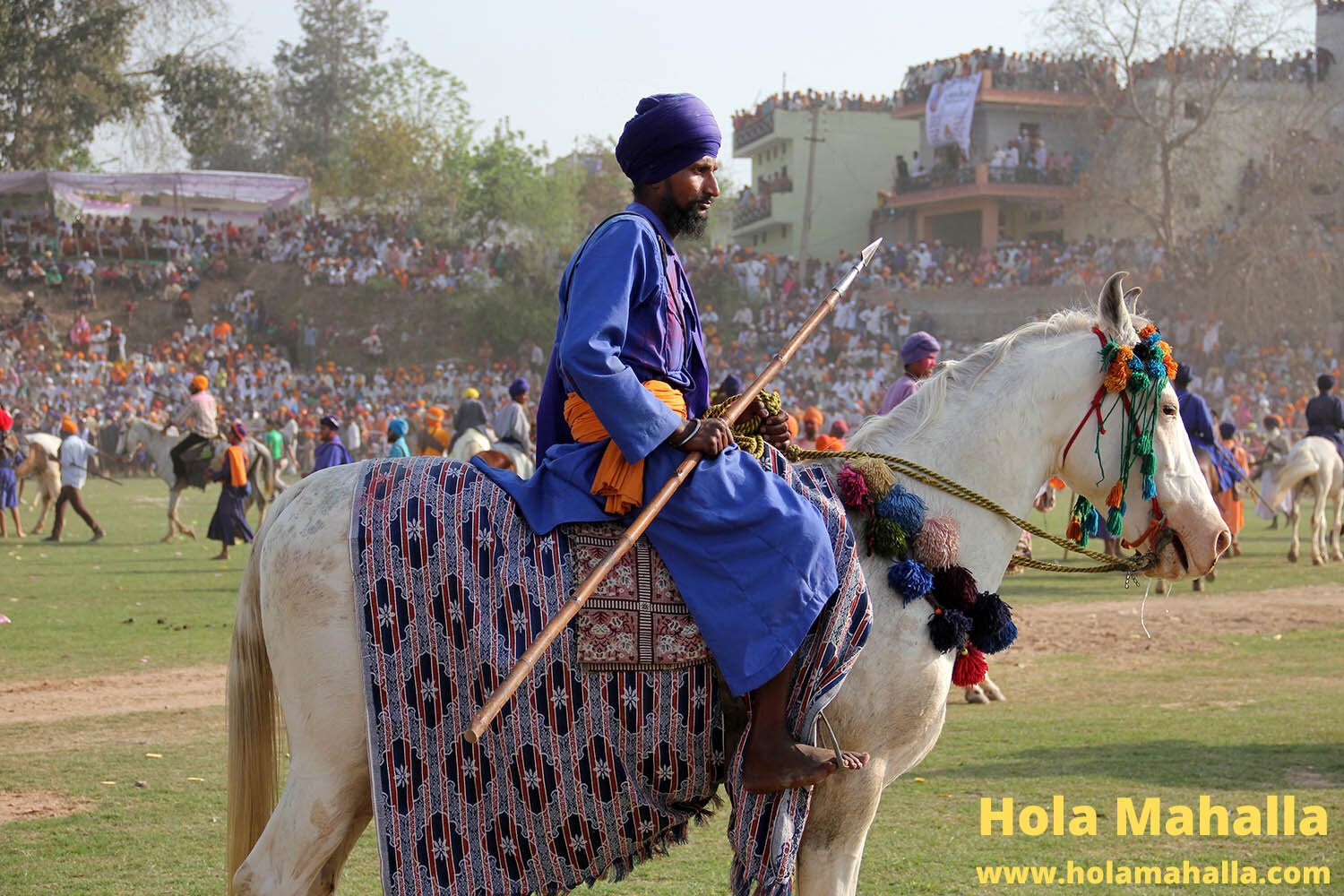
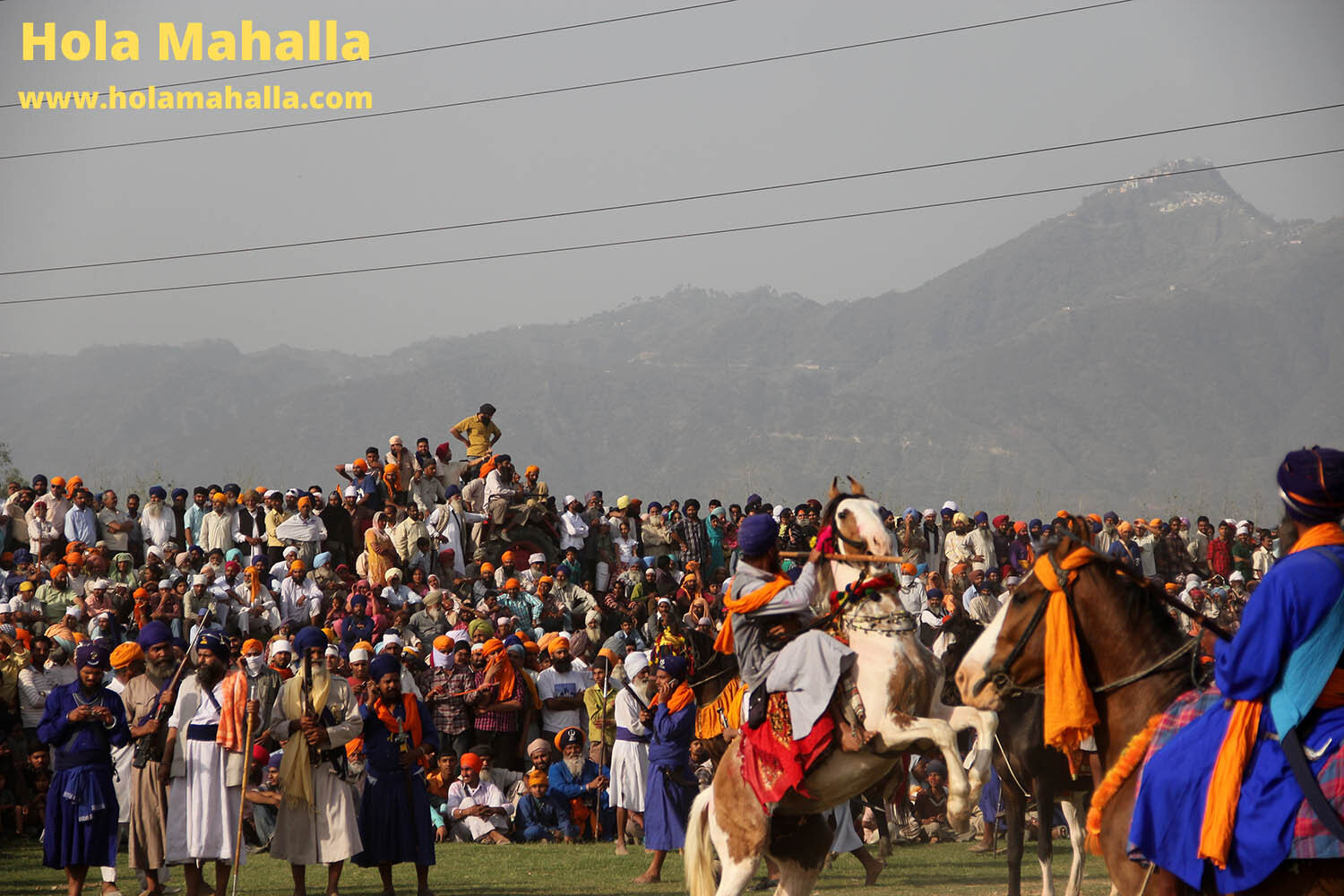

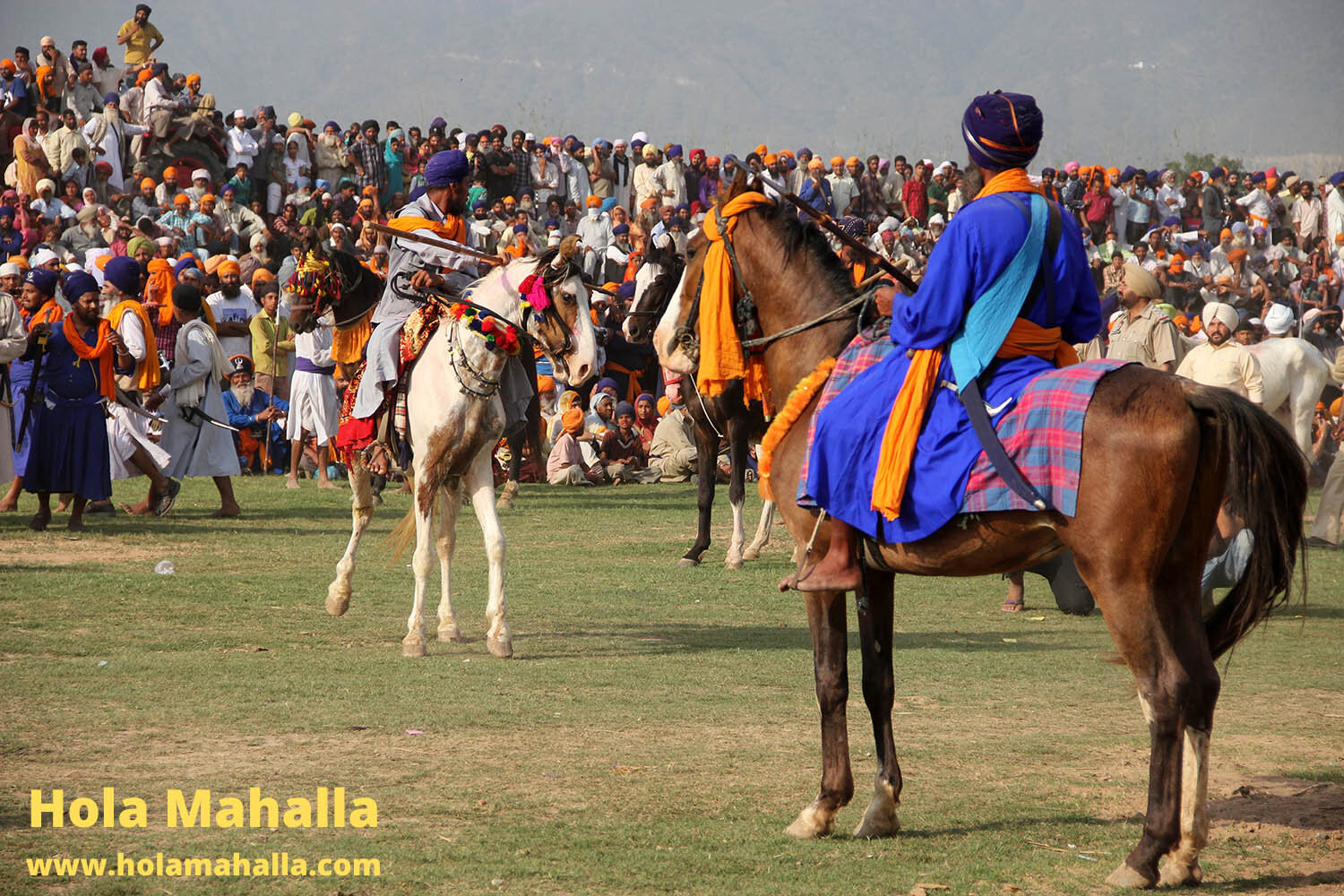
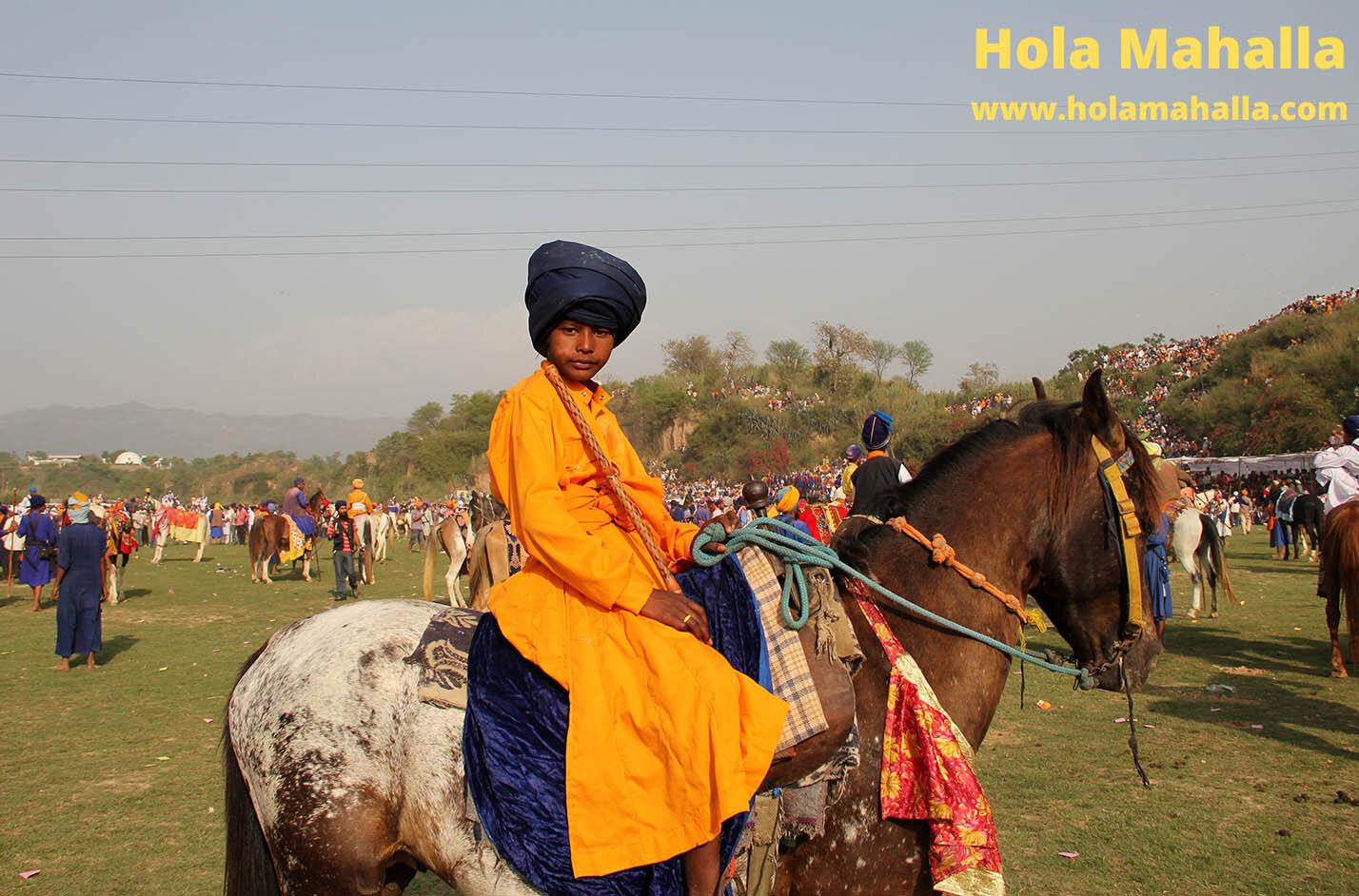
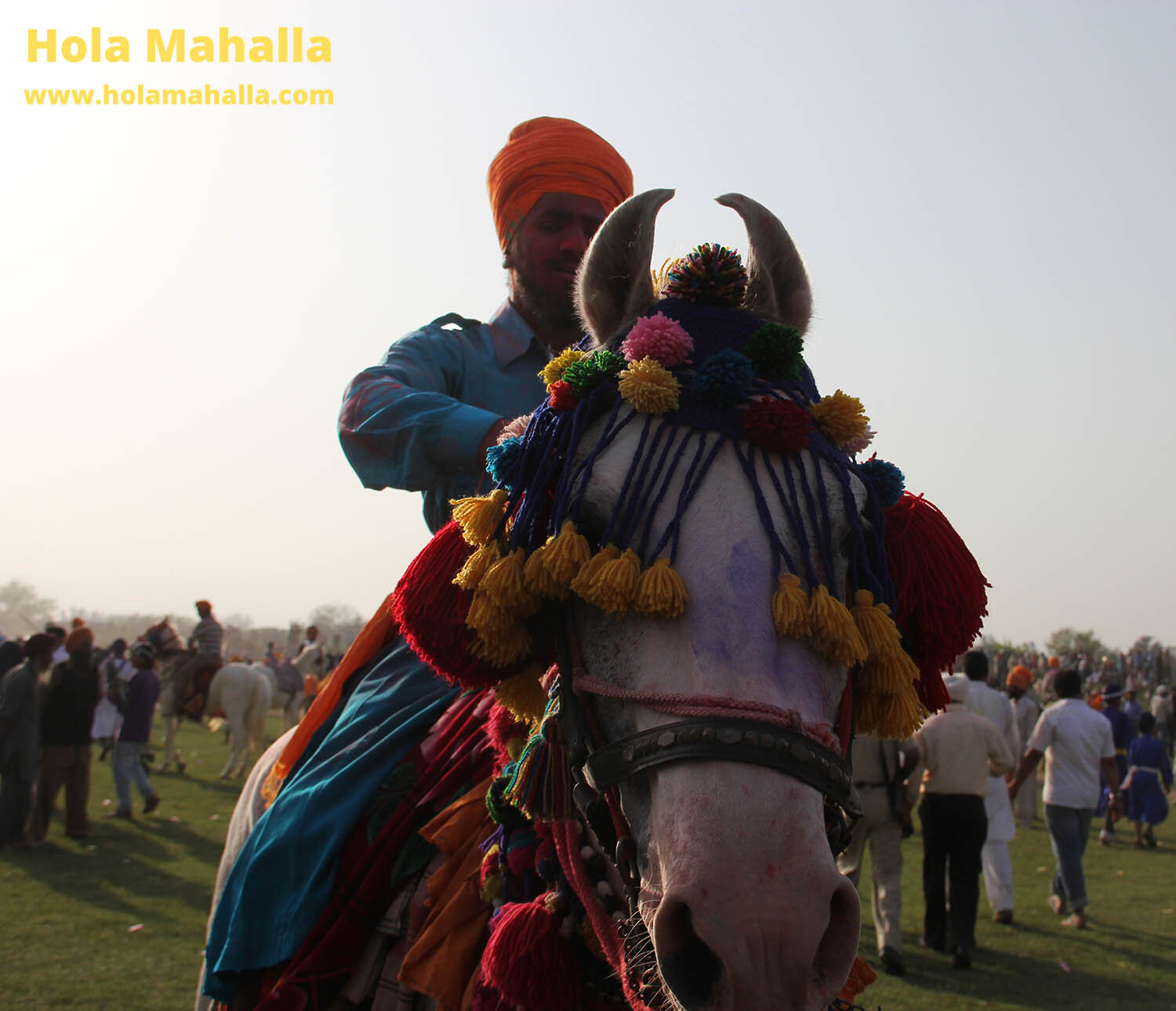
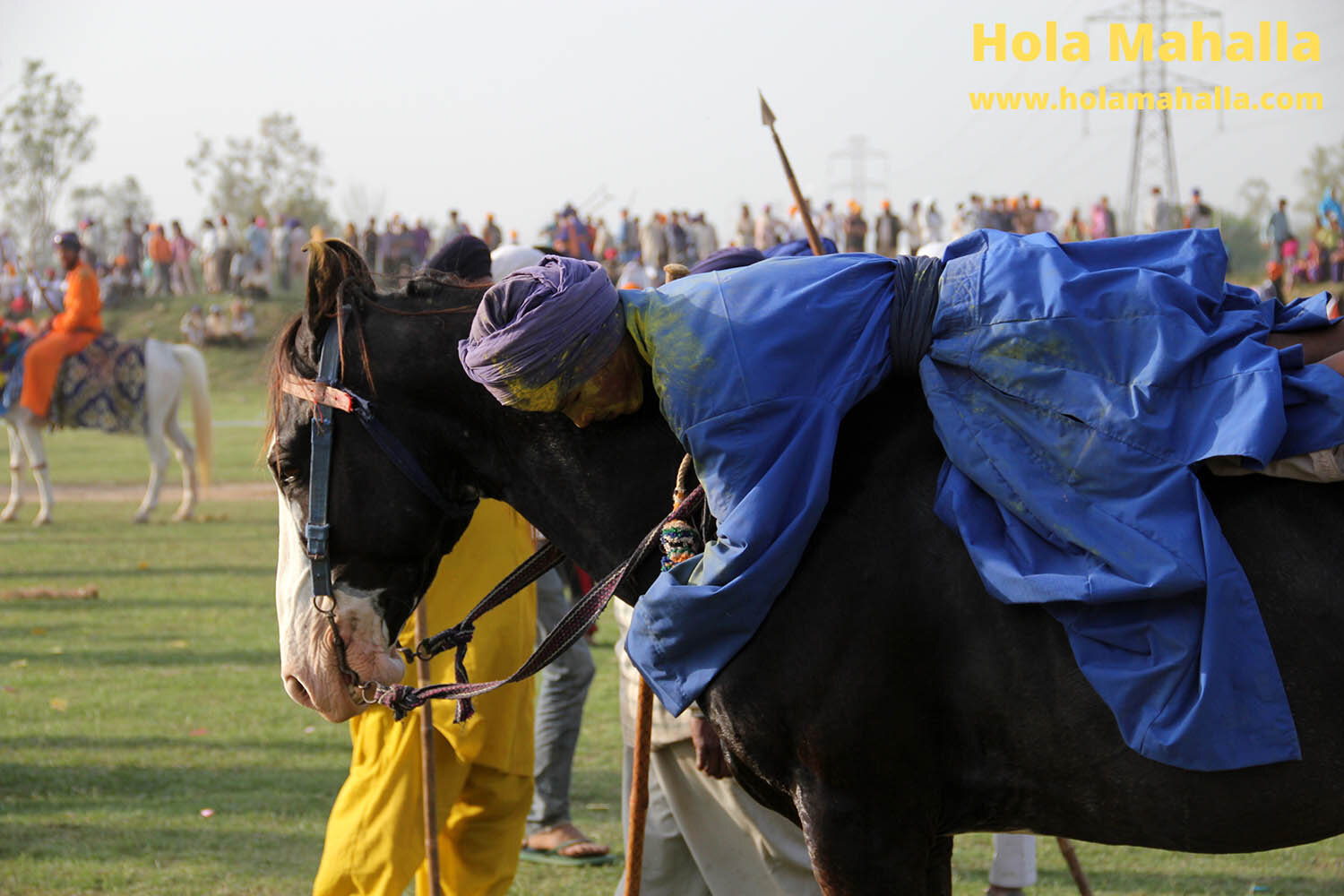
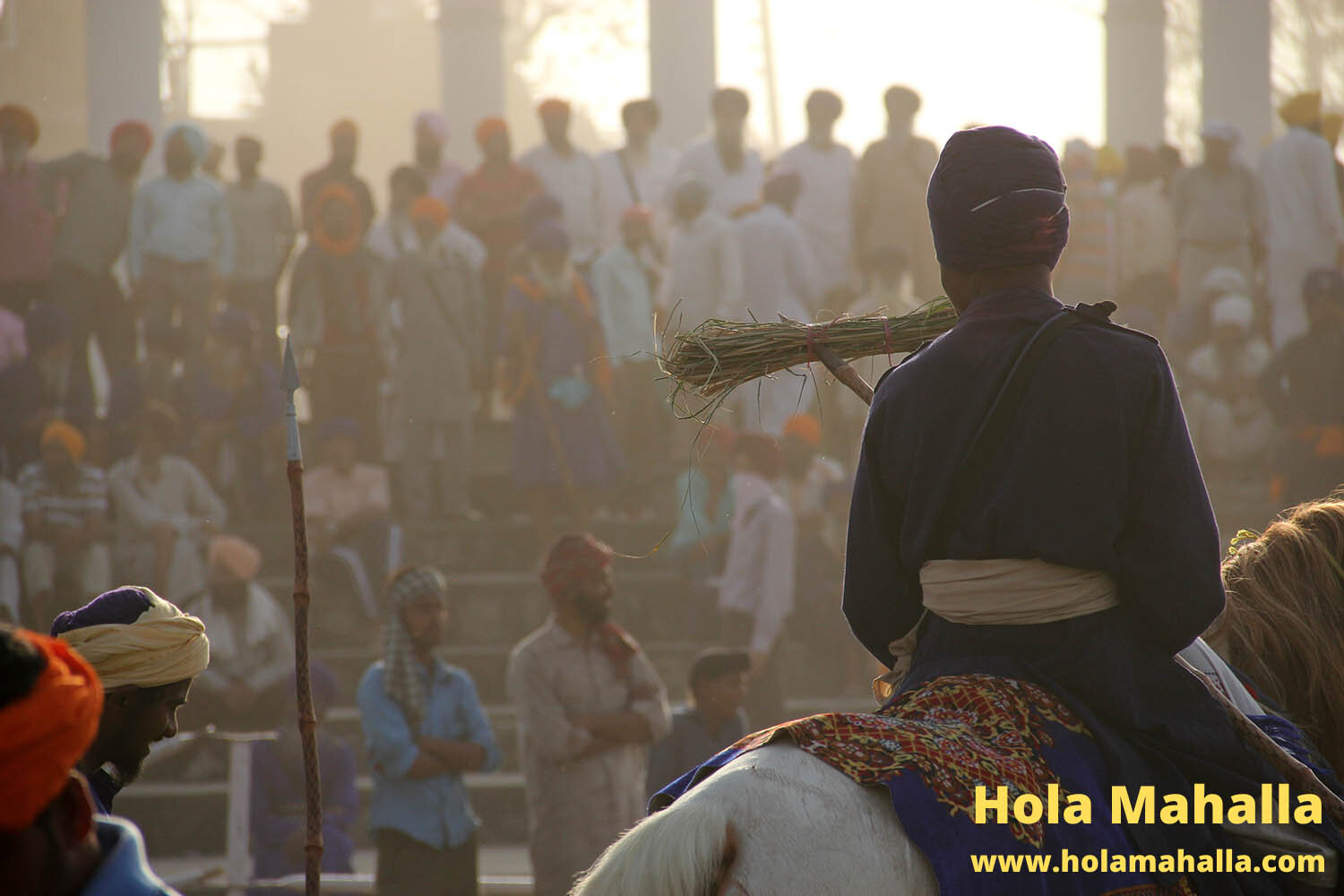
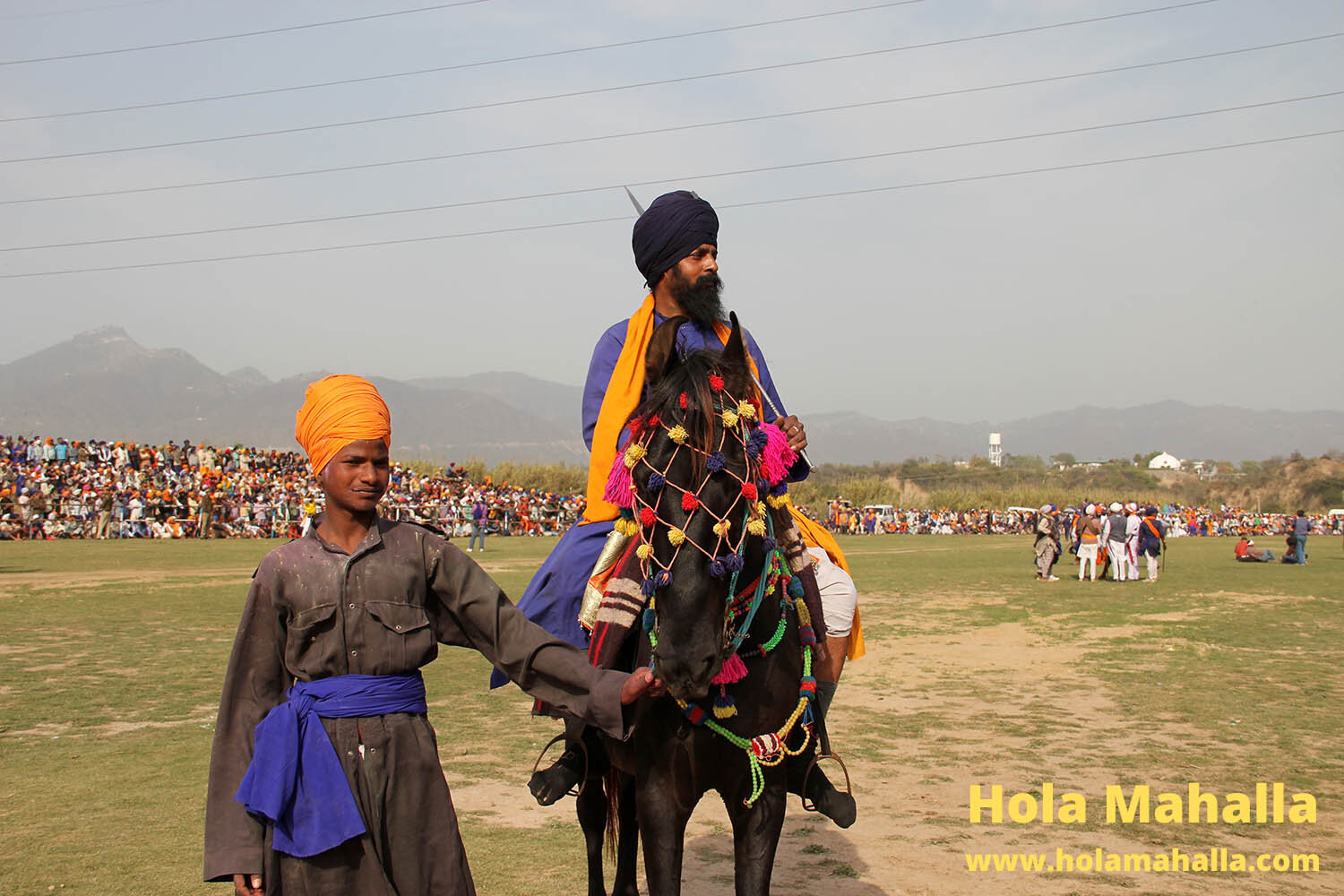

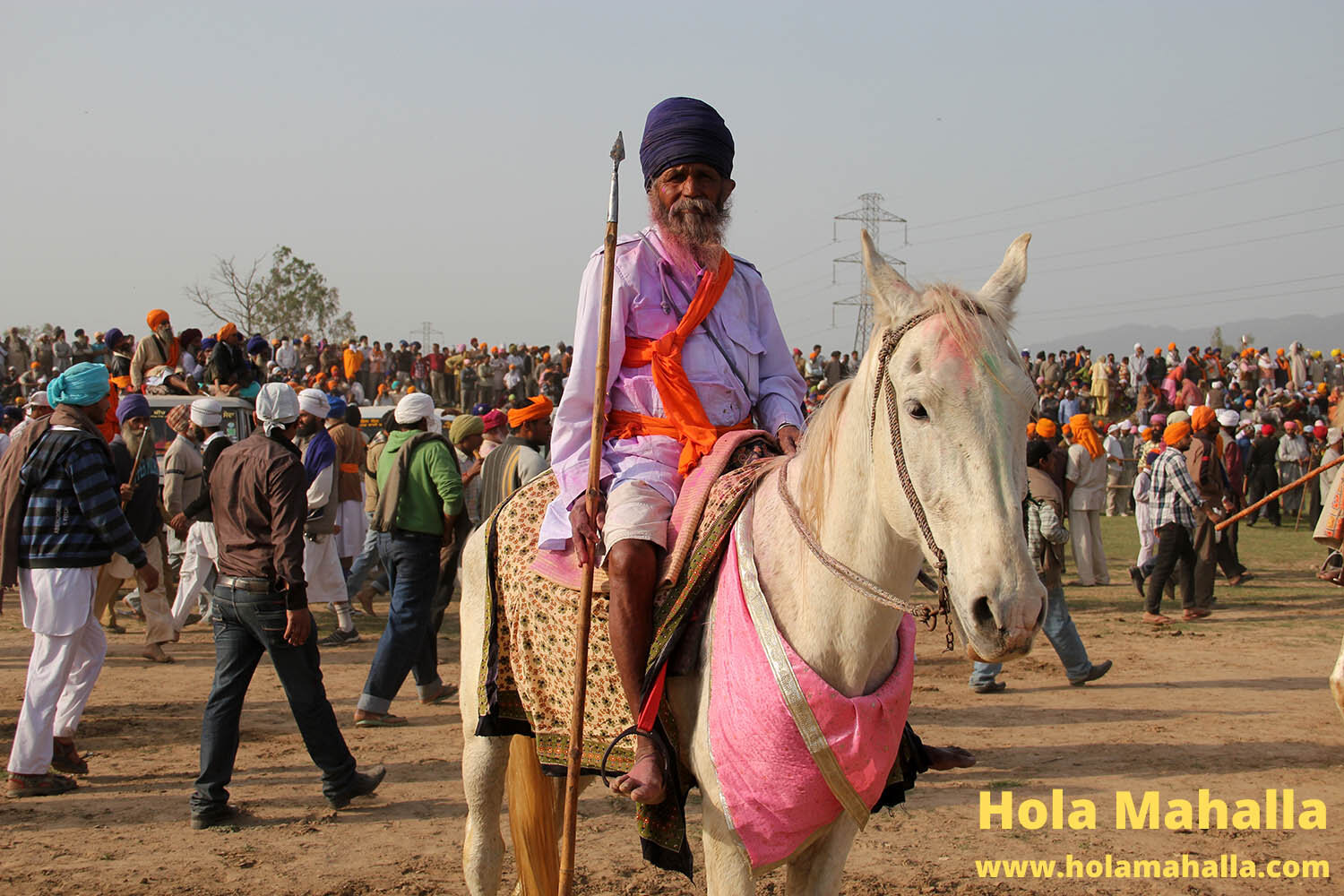
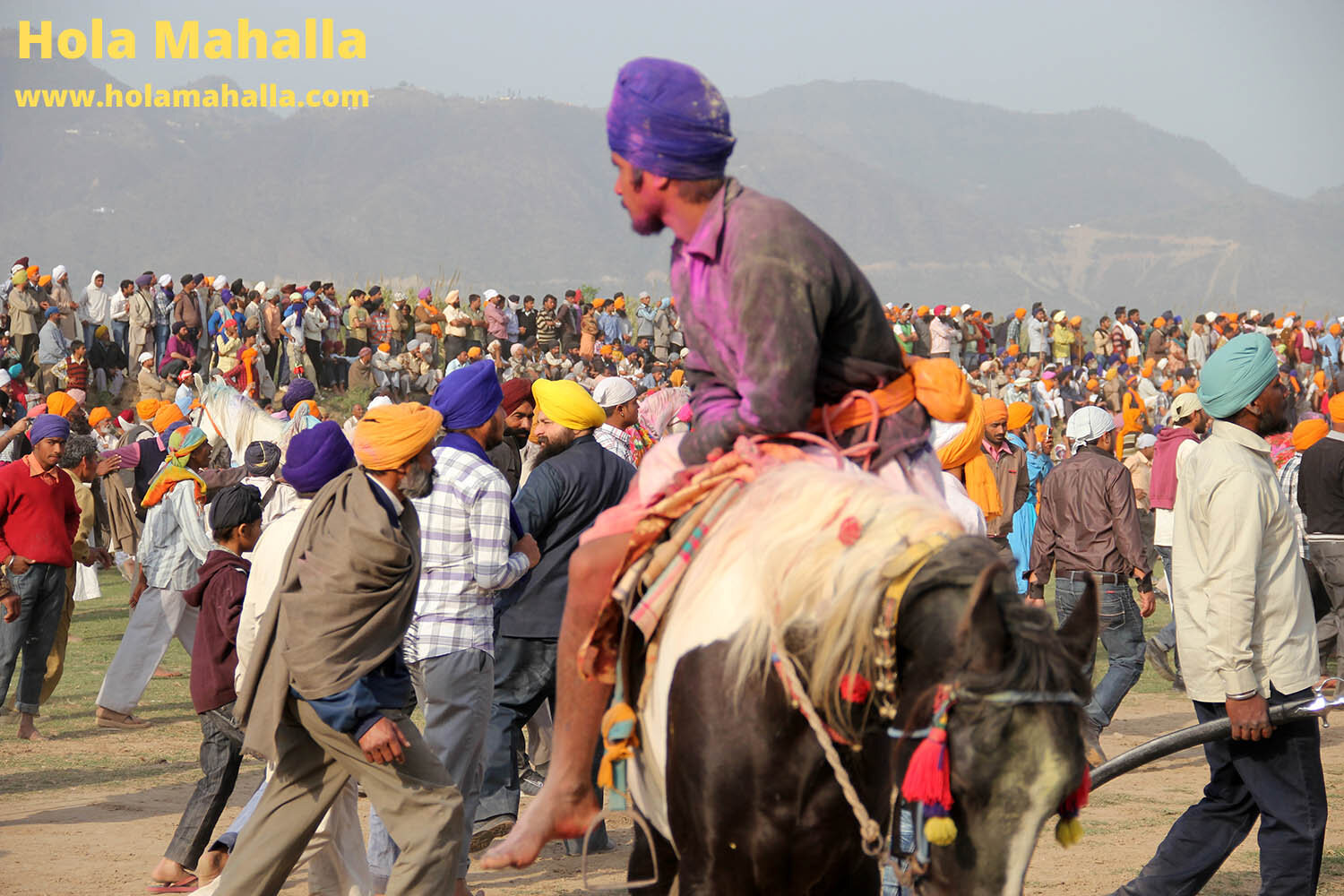
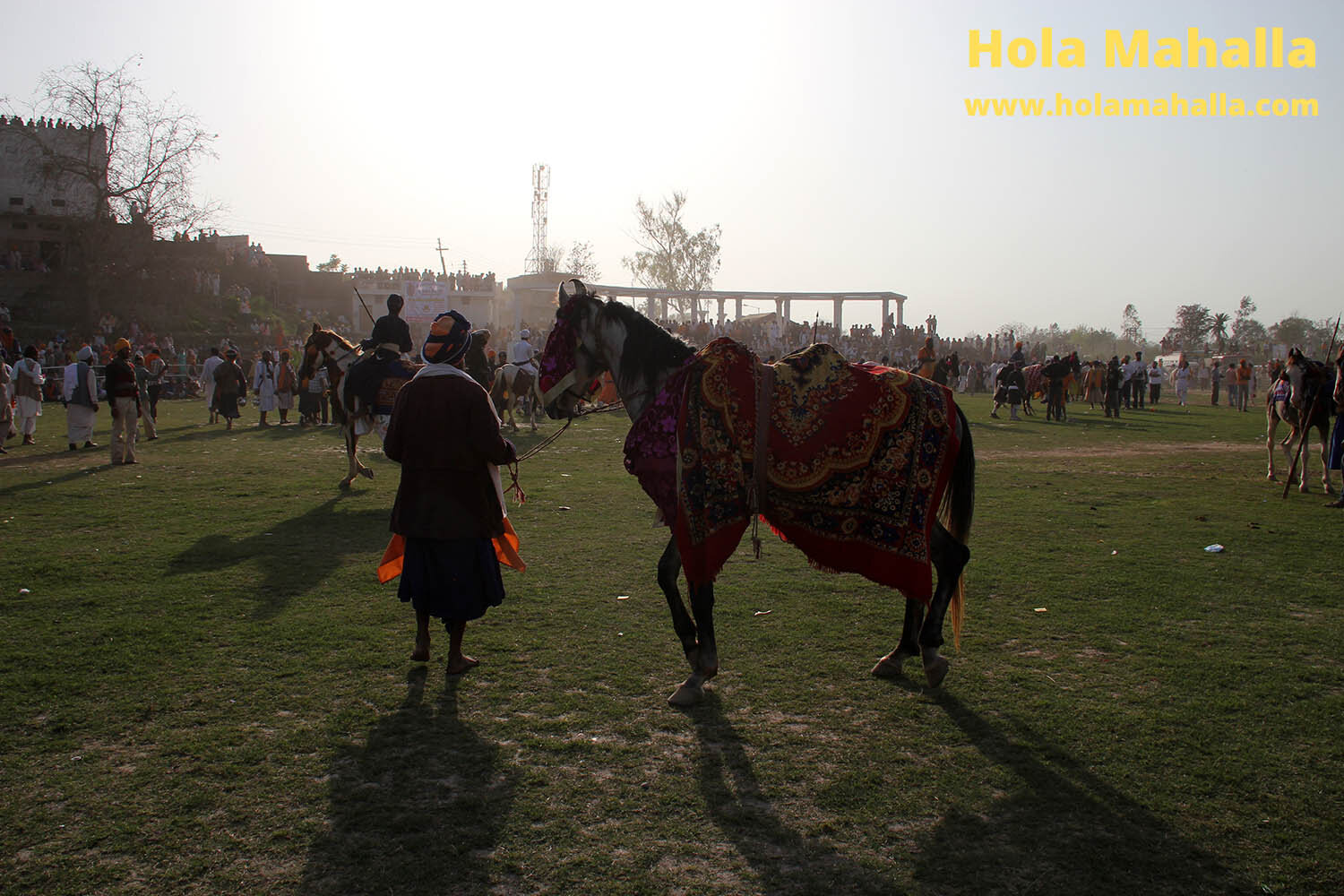
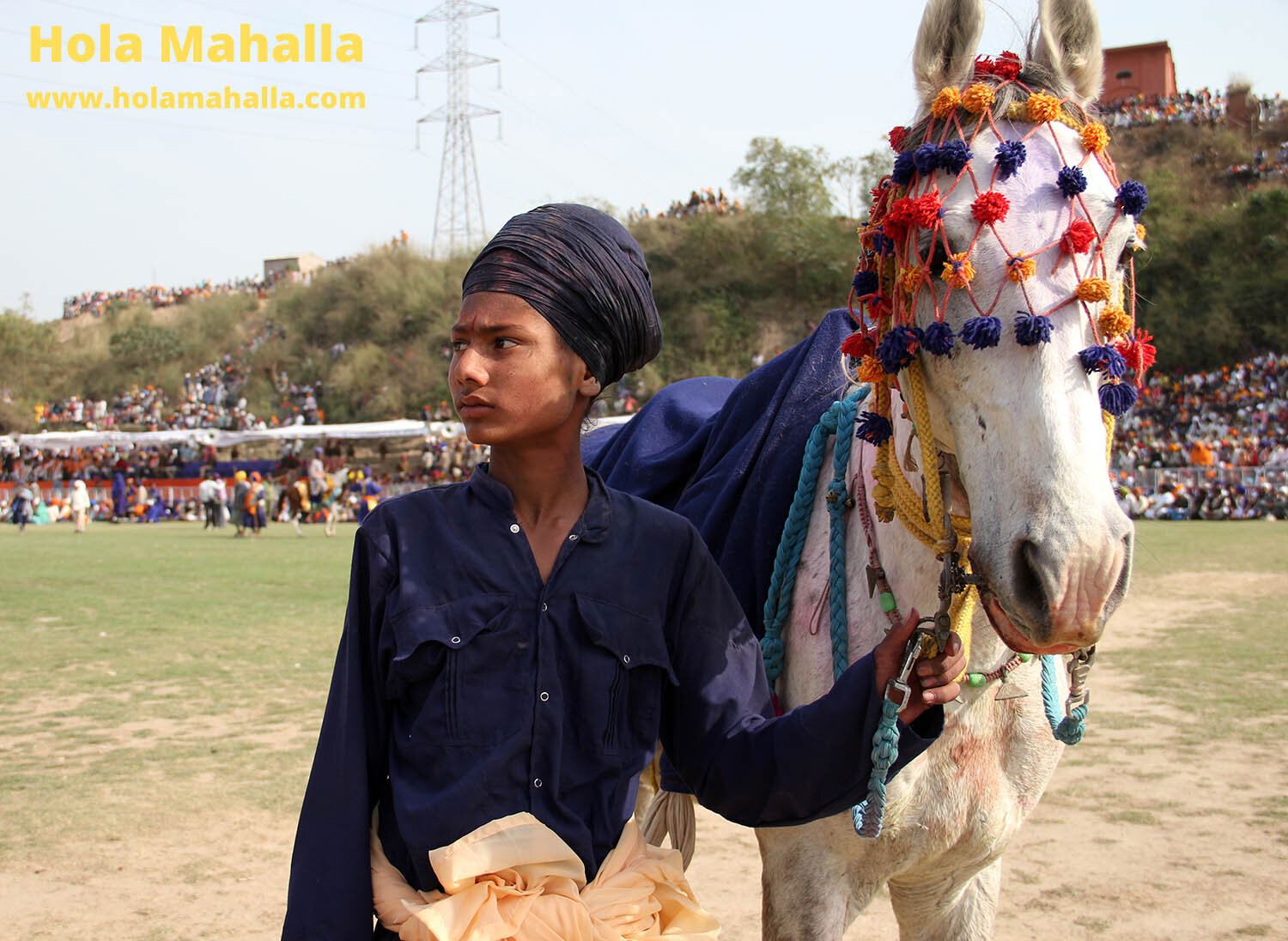
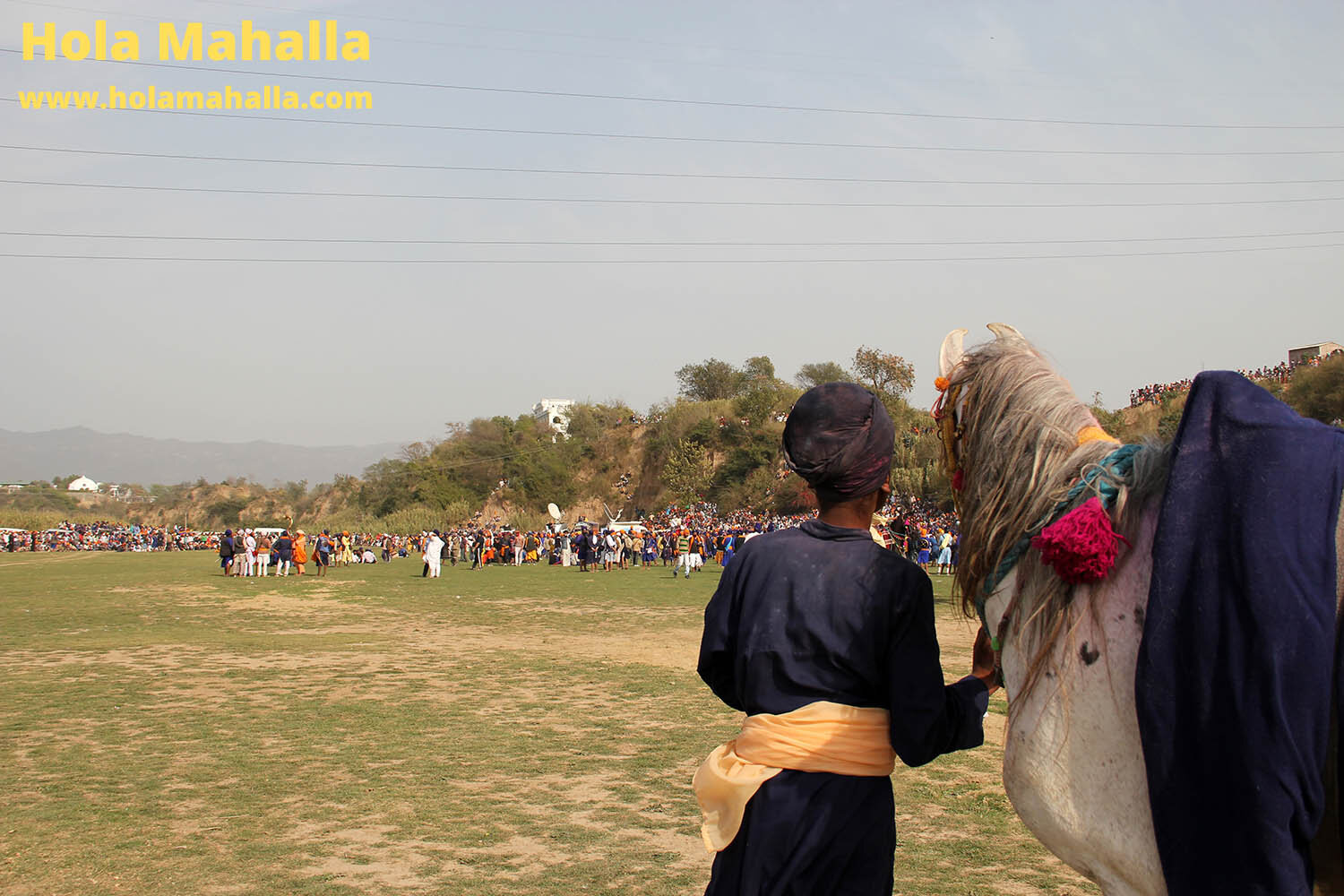
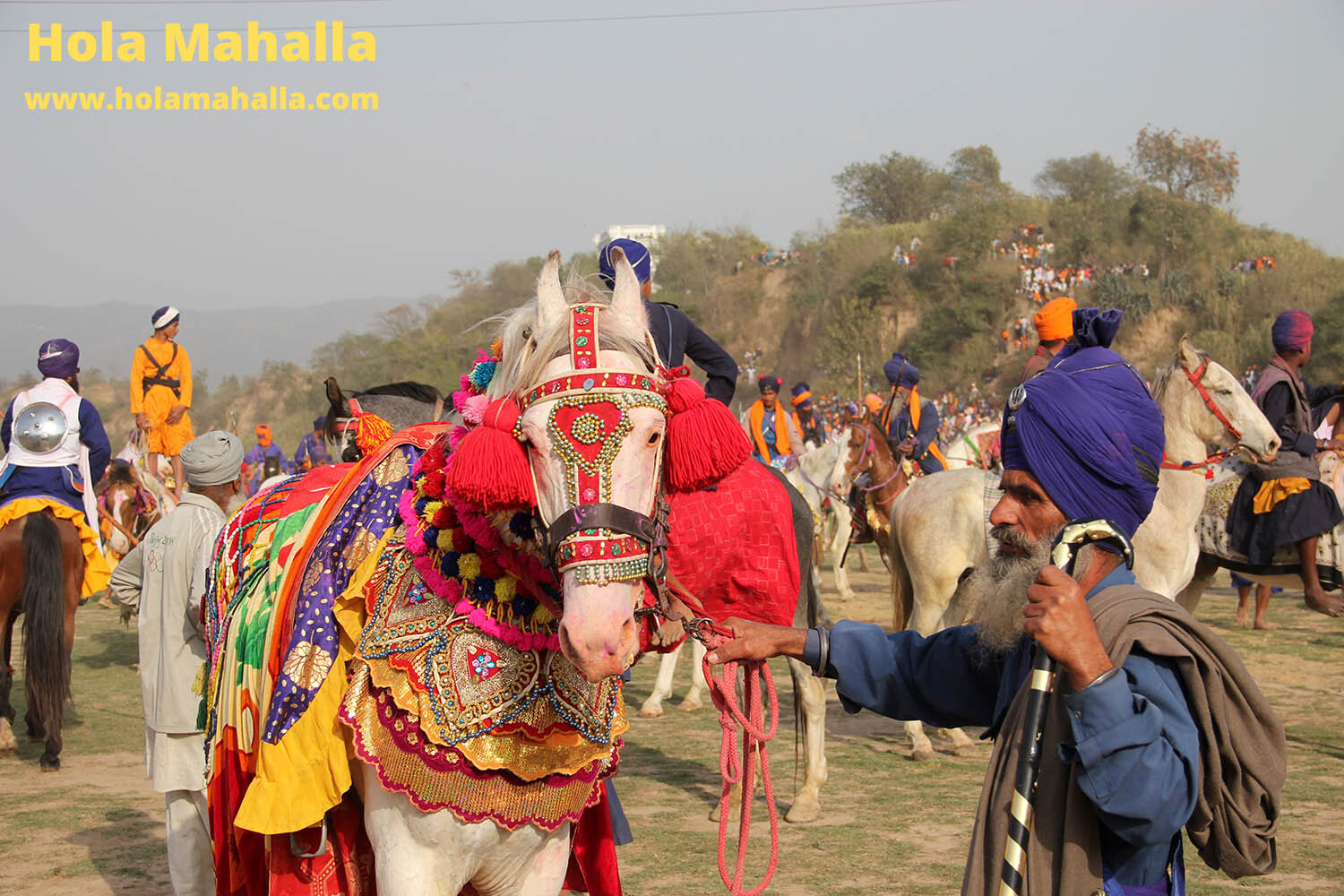
Tent Pegging
Tent pegging also features during the festival. It involves a horseman riding at full speed, picking up bales of hay with a spear. In the past, when Sikhs were battling a rival army, they would attack the opposite camp at midnight. Riding in and pulling out tent pegs, they forced the tents to collapse, causing maximum chaos. Those that successfully score a point by picking up a bale, show it to the crowd like a trophy.
One by one the warriors ride down attempting to hit a target with the ir spear.
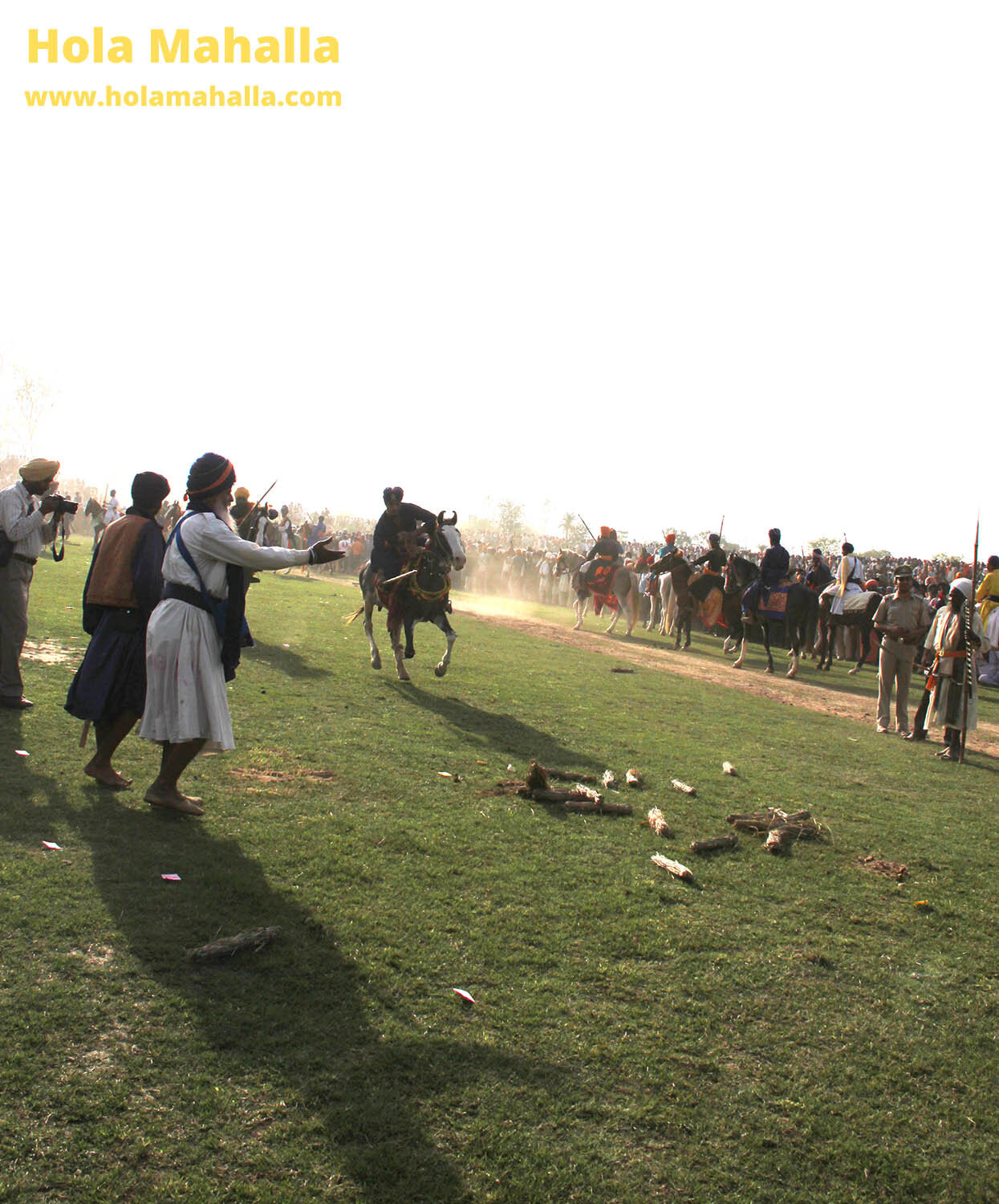

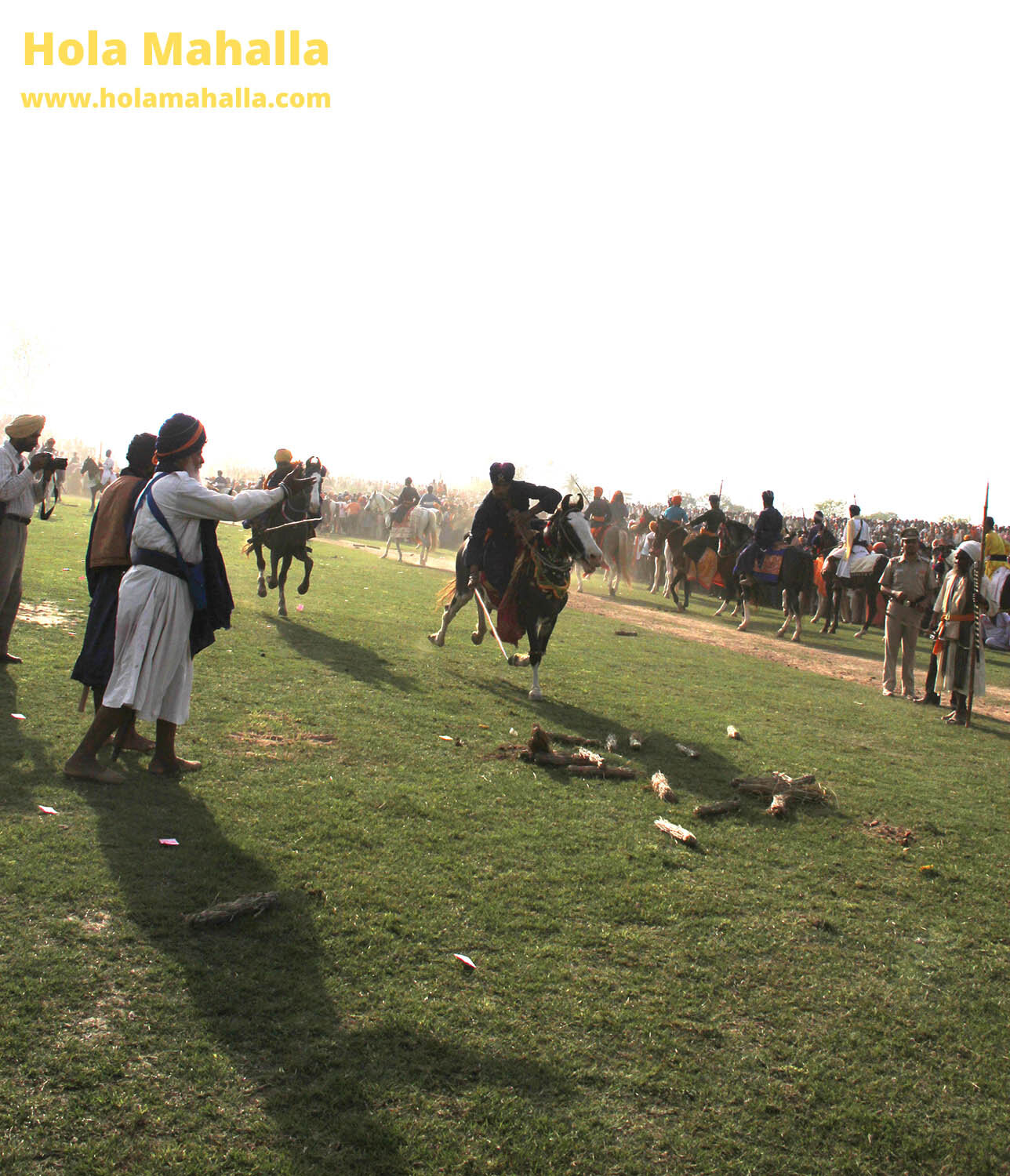
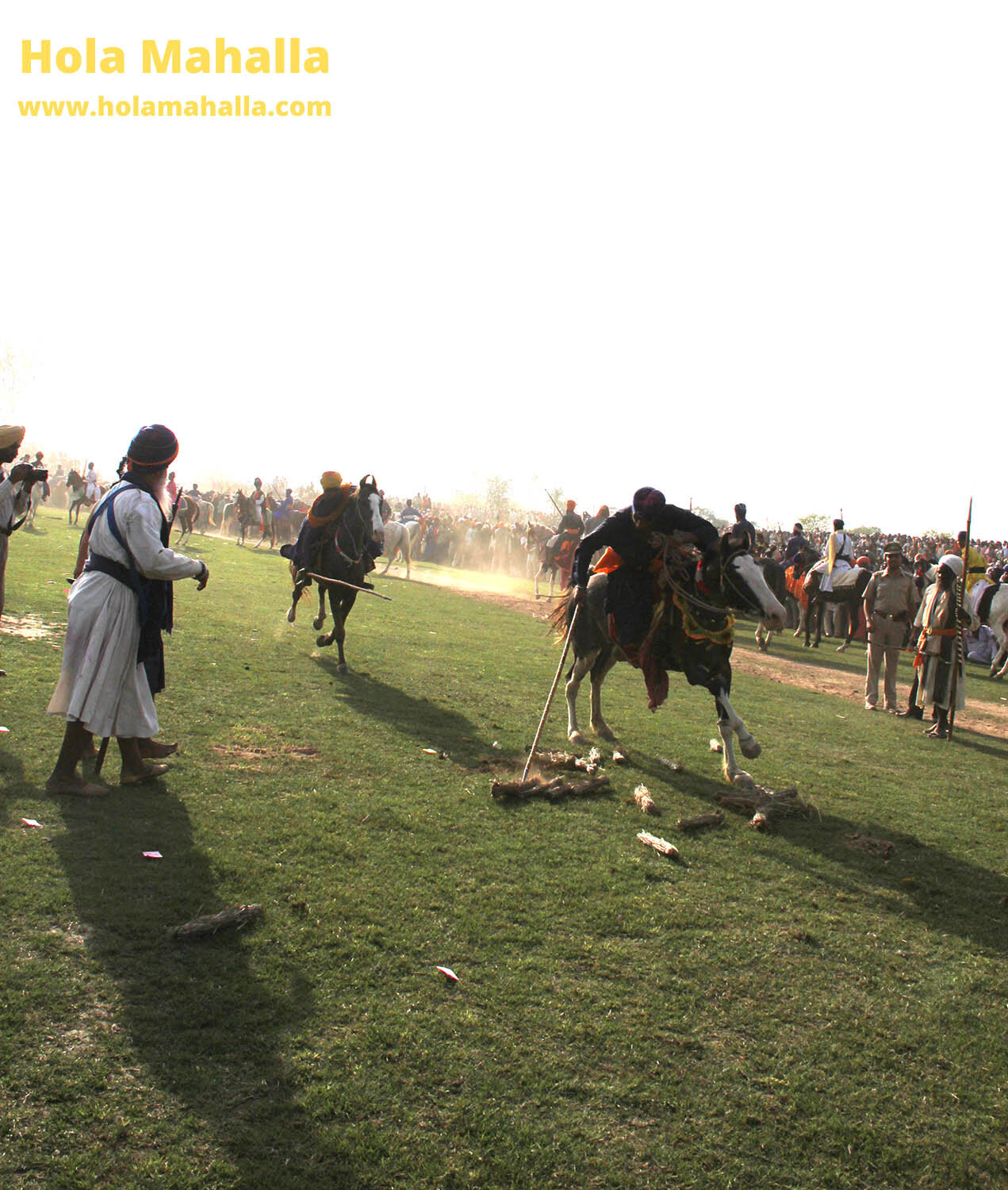
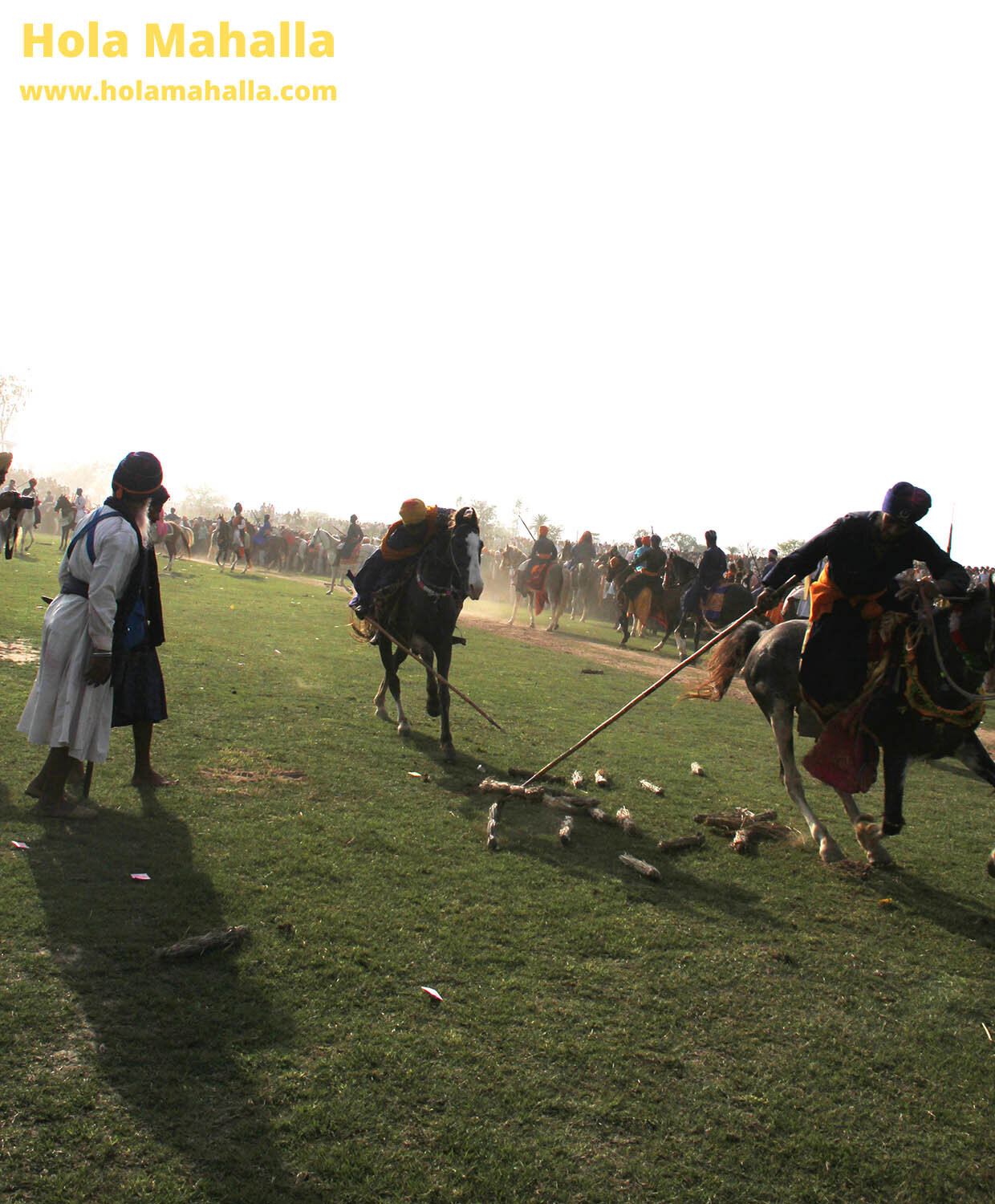
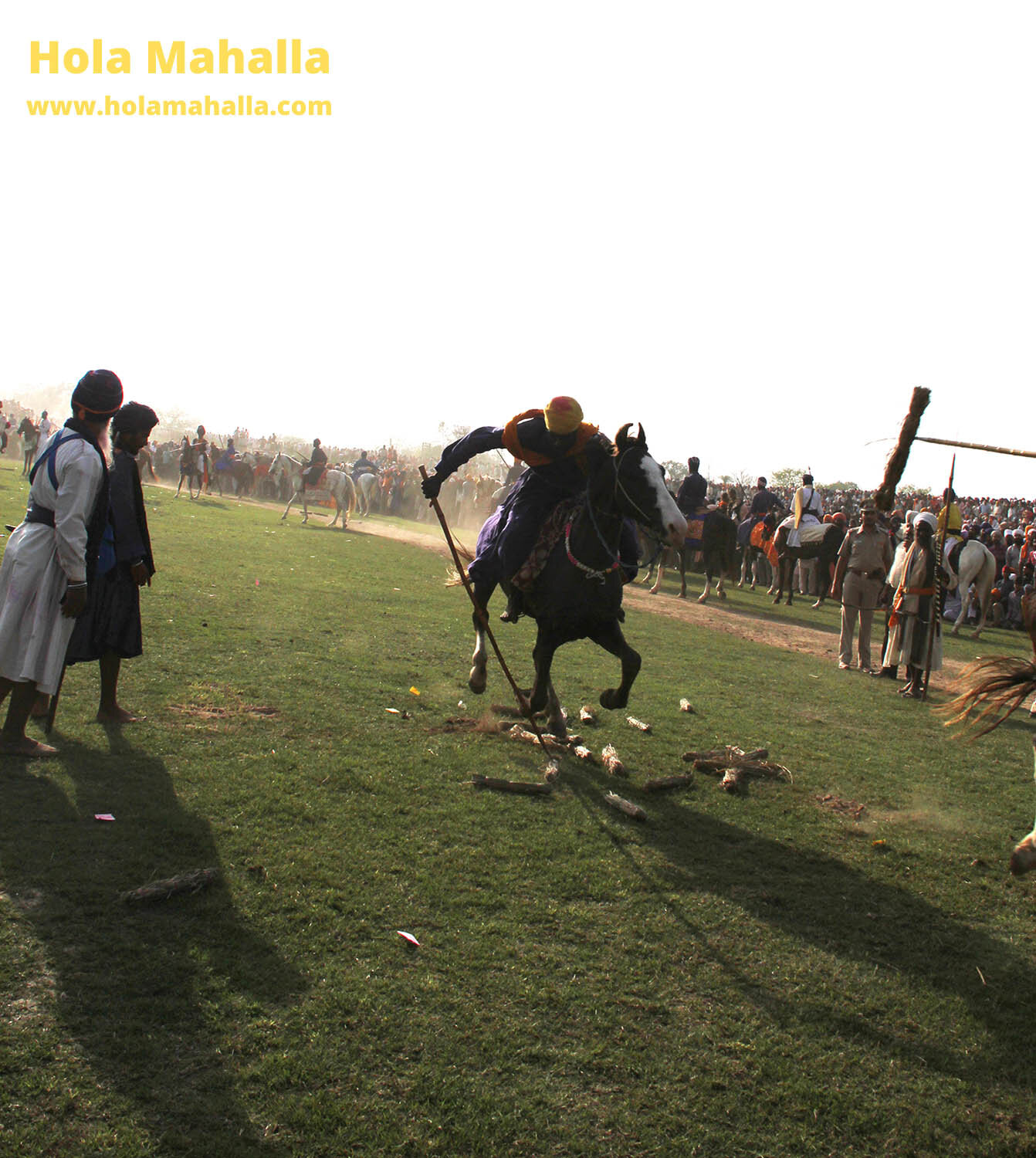
The horse are beautifully decorated with colour.


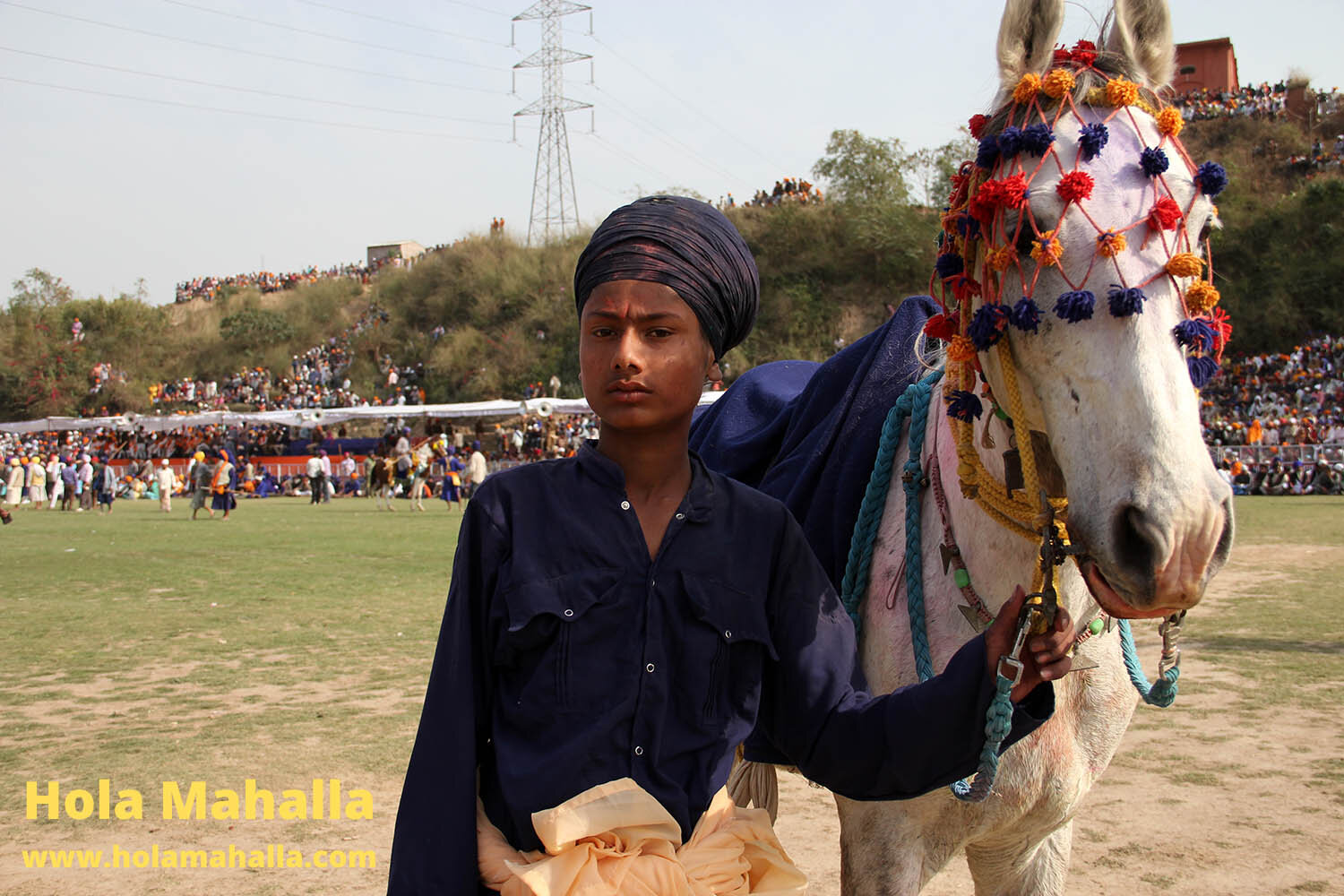


Gatka also features at the ground. Like before there a bouts going on with sticks and mixed abilities are on show.
A time to reflect
The numbers on the field begin to dwindle as the warriors and spectators say their good byes. Some head back to Kesgarh Sahib as the sun sets on Anandpur . They contemplate their experience of this unique festival and make plans for the following year, where they can celebrate Hola Mahalla once again.
Tradition
"There is a parampara (tradition) with Nihang Singhs, that if a Nihang Singh does not attend Hola Mahalla he is presumed to have merged with God (died). Meaning that every Sikh regardless of where they lived, tried their utmost to attend Hola Mahalla” Baba Nihal Singh
Jathedar (High Priest) of Tarna Dal, Harianvela
“if a Nihang Singh does not attend Hola Mahalla he is presumed to have merged with God””








































